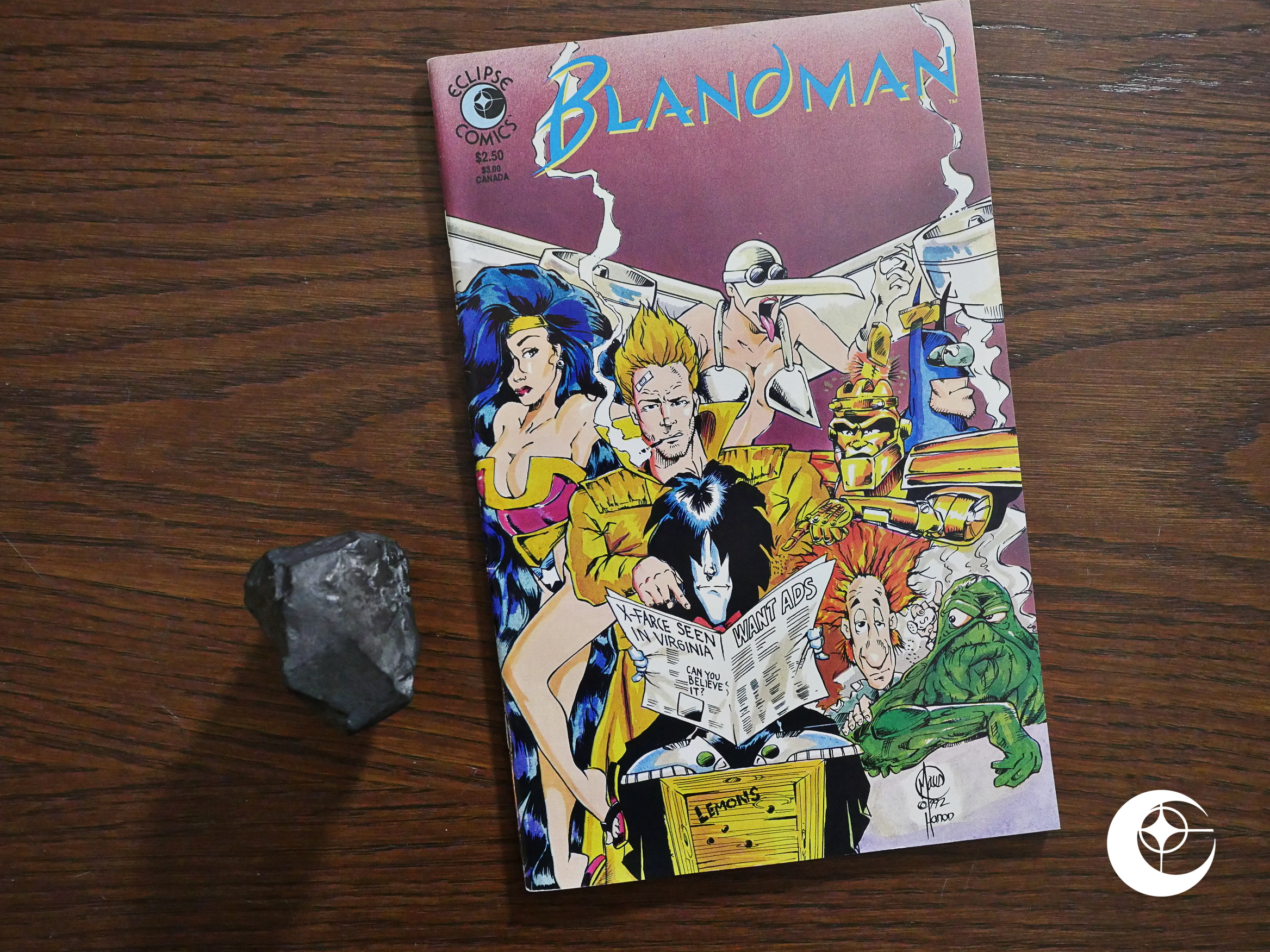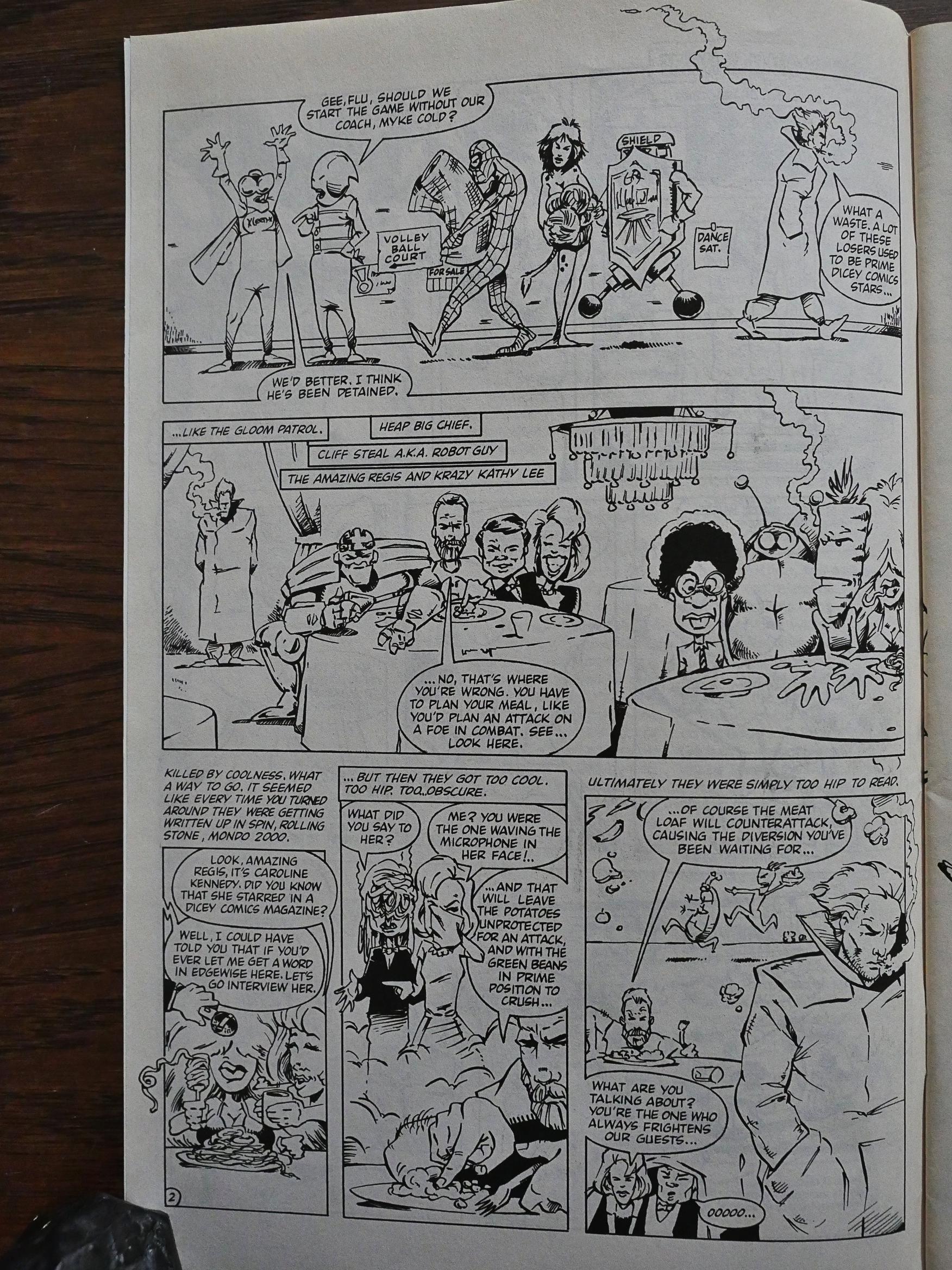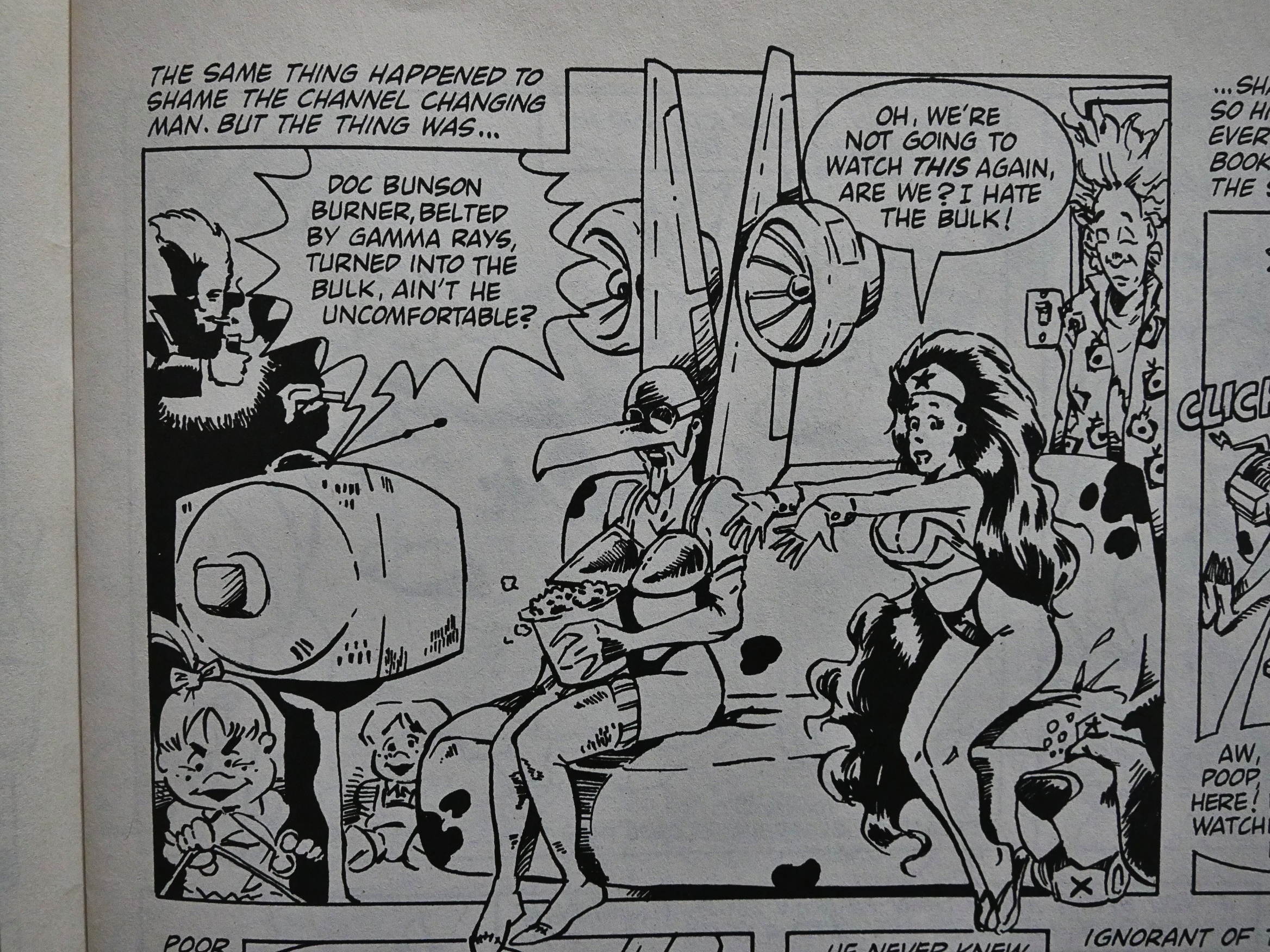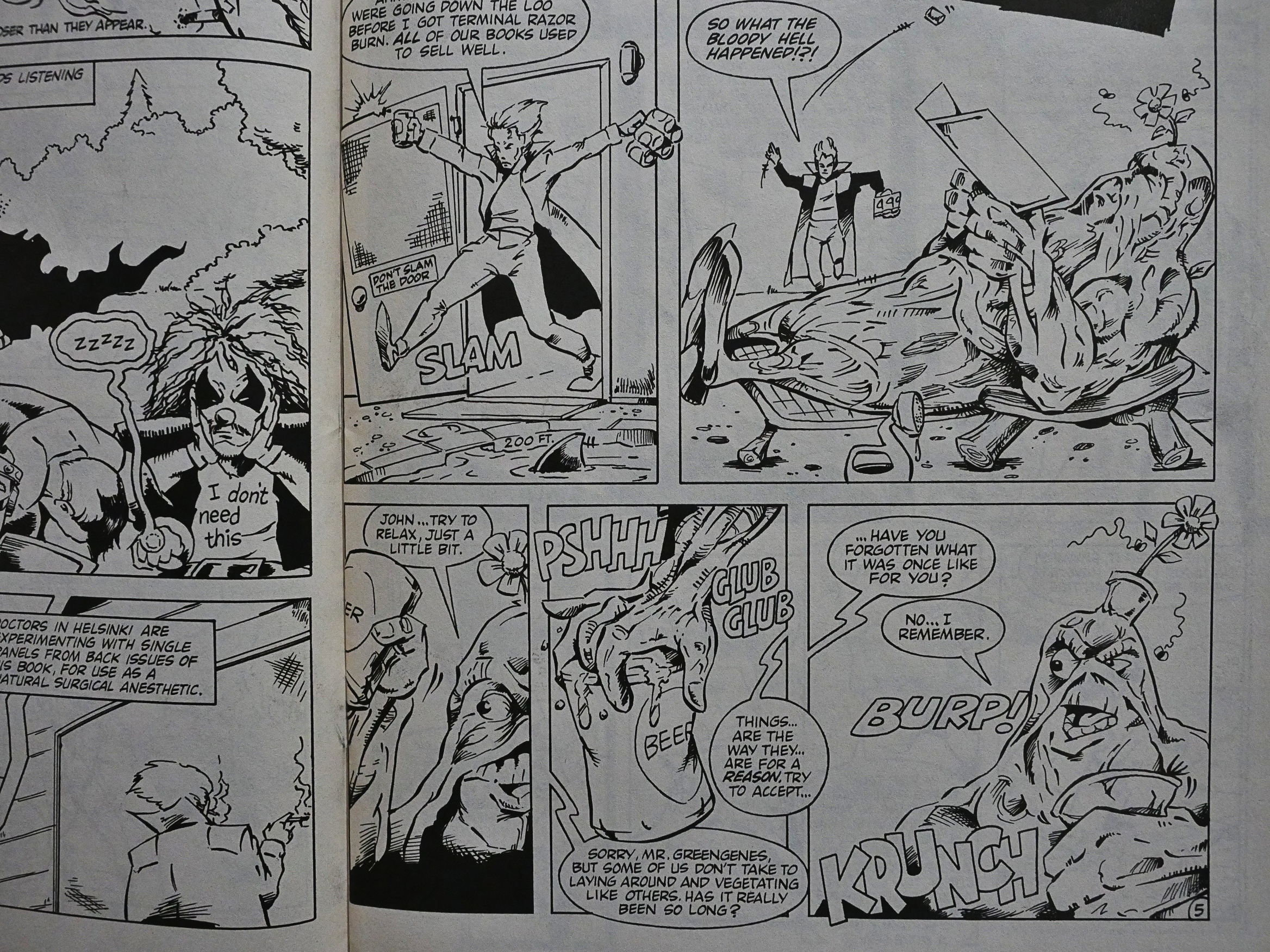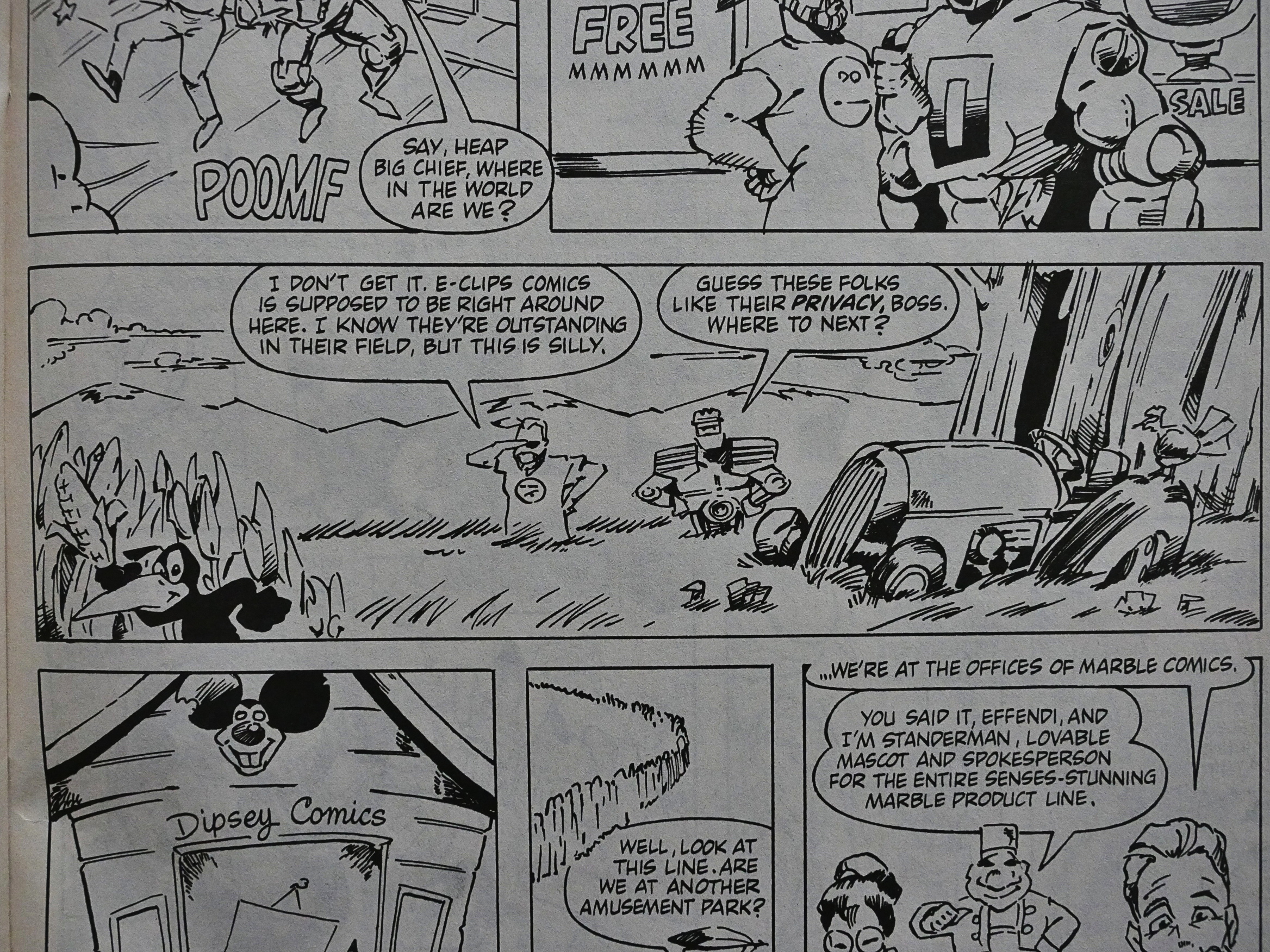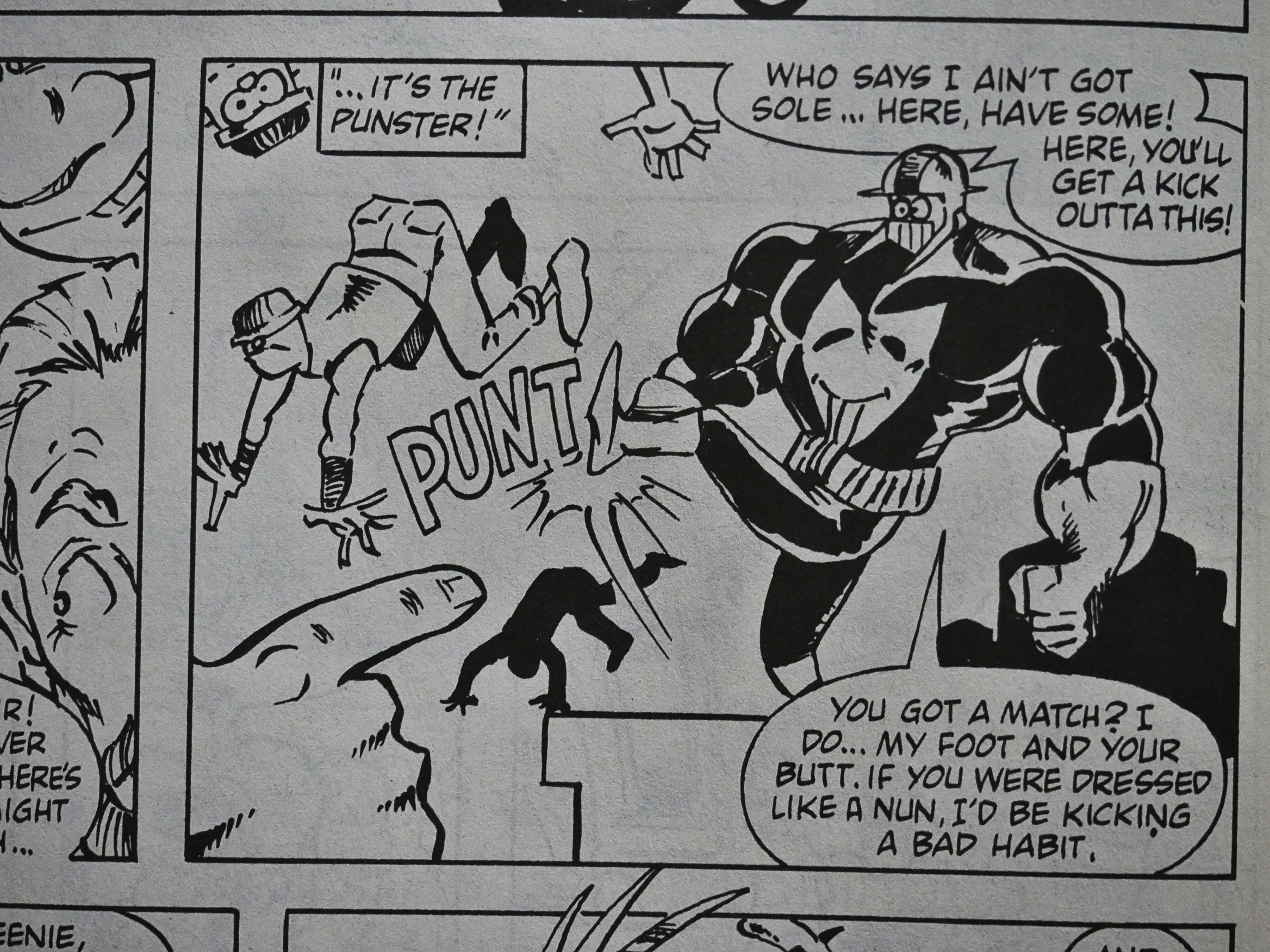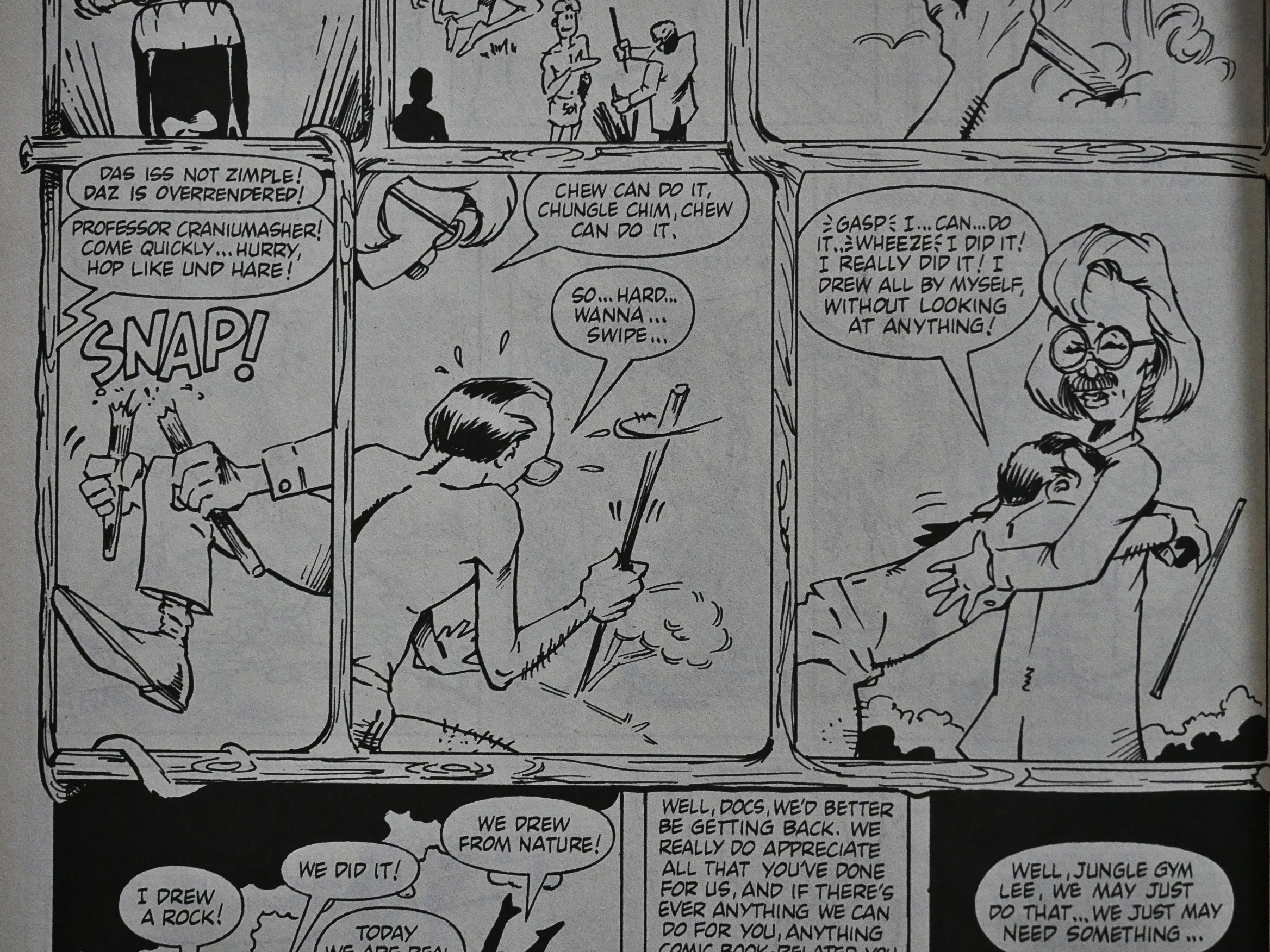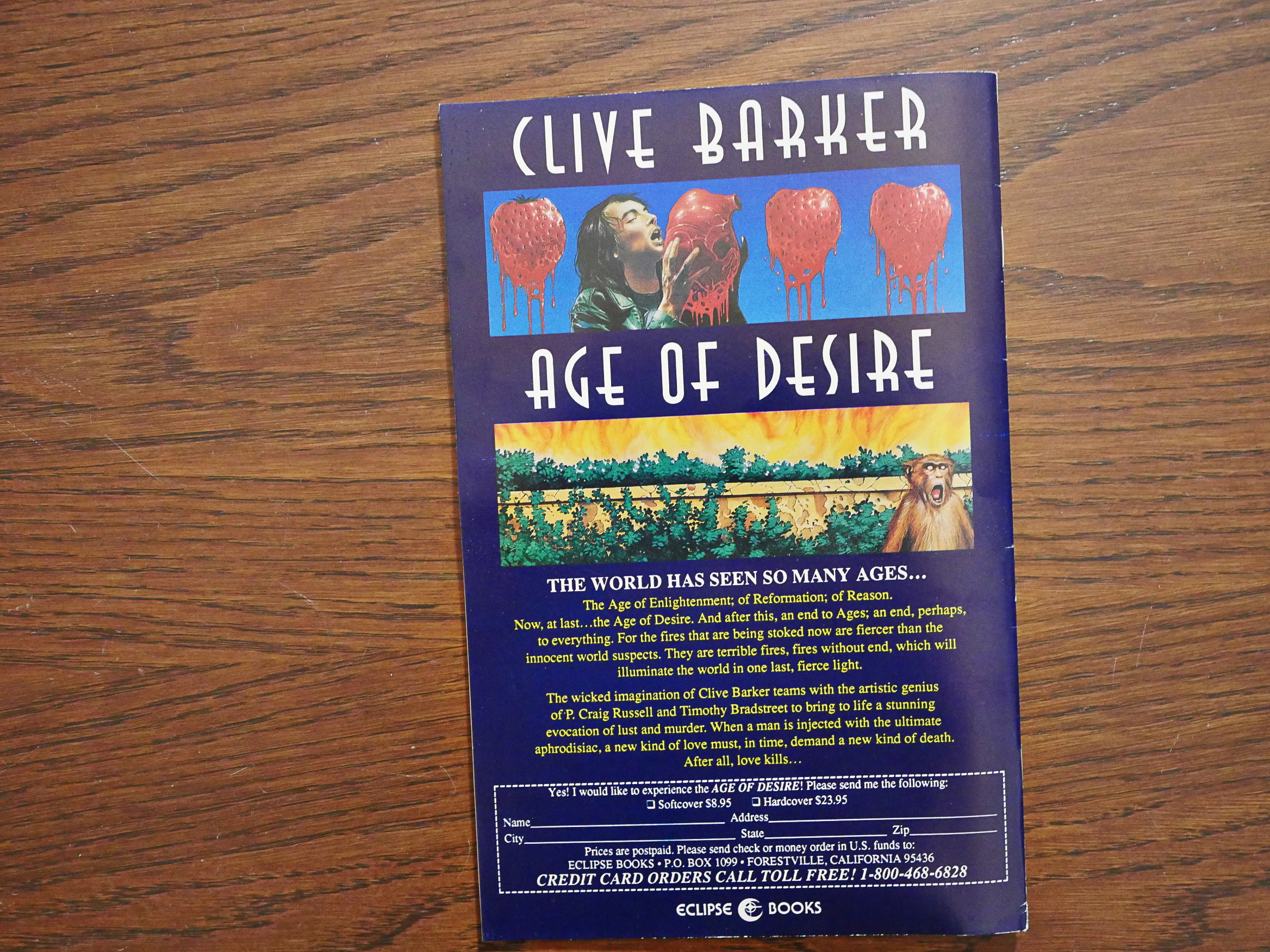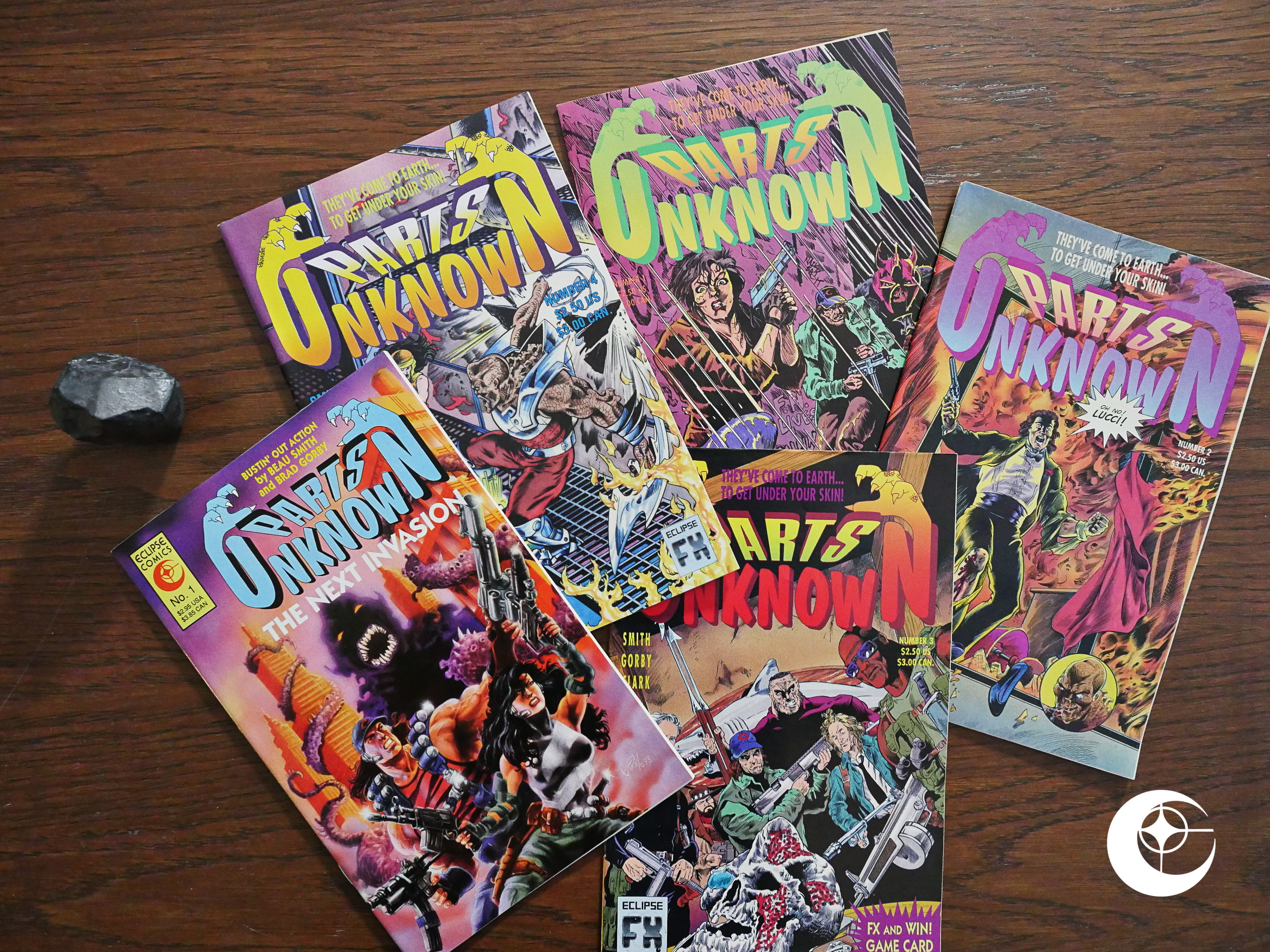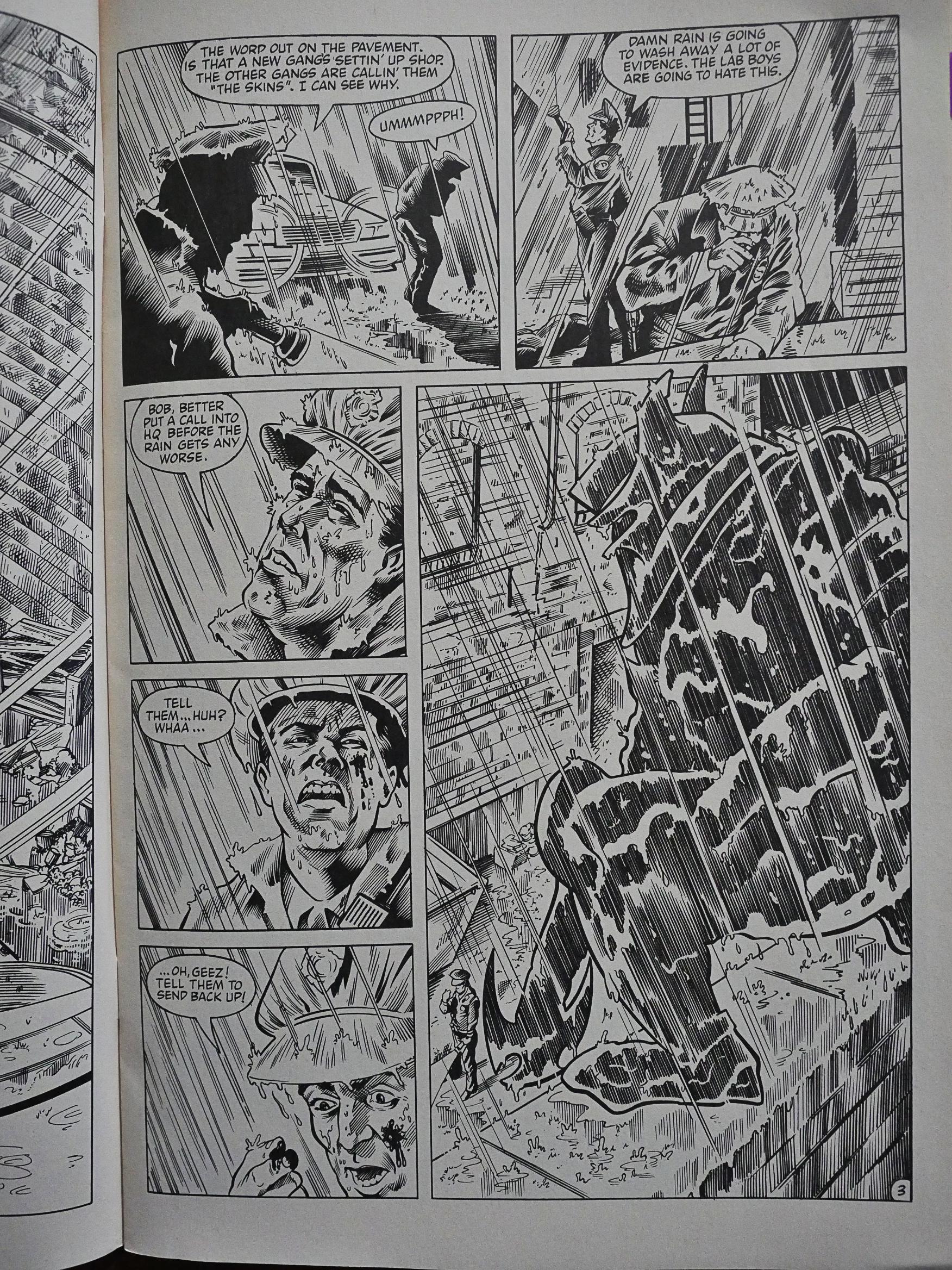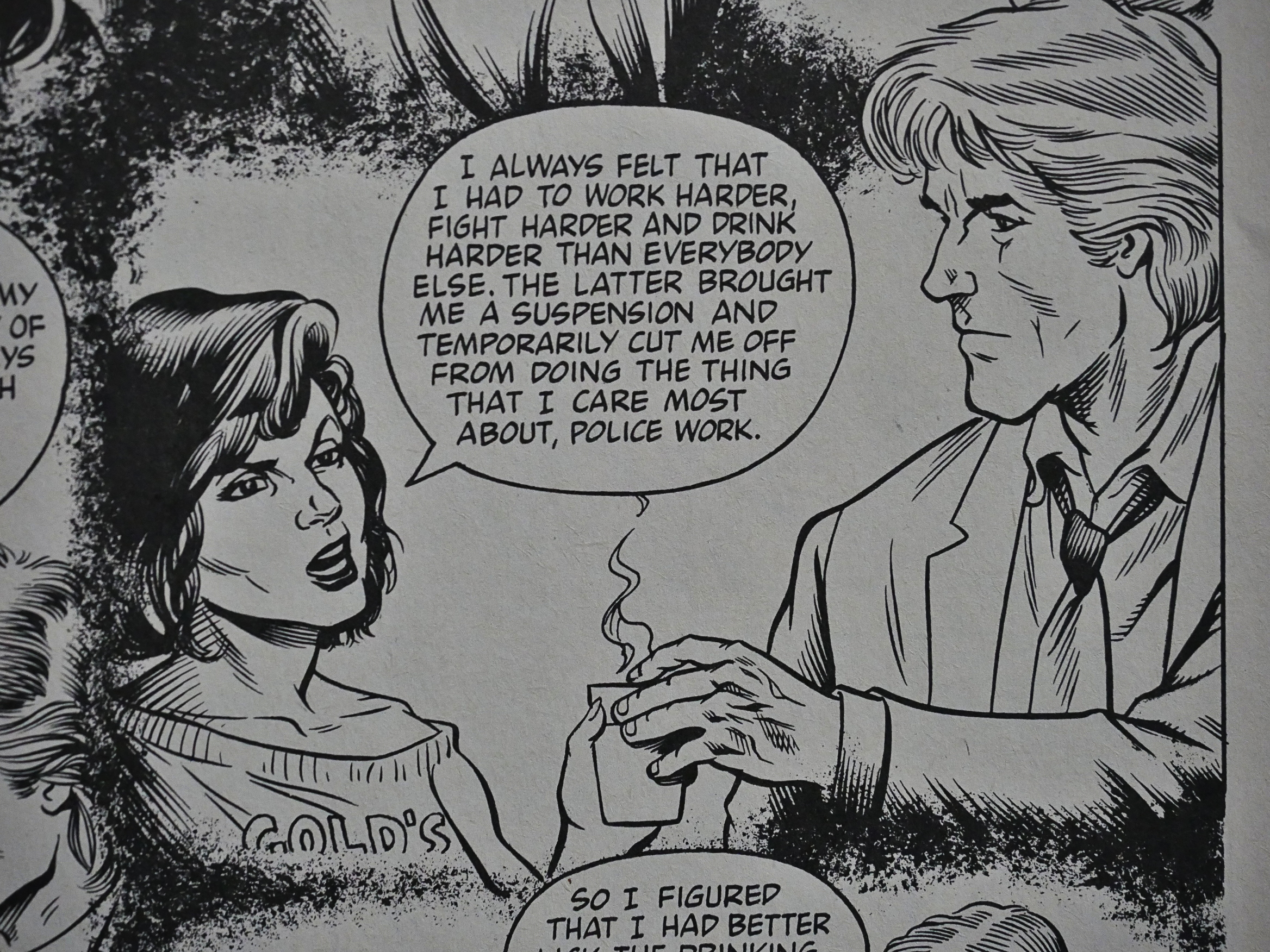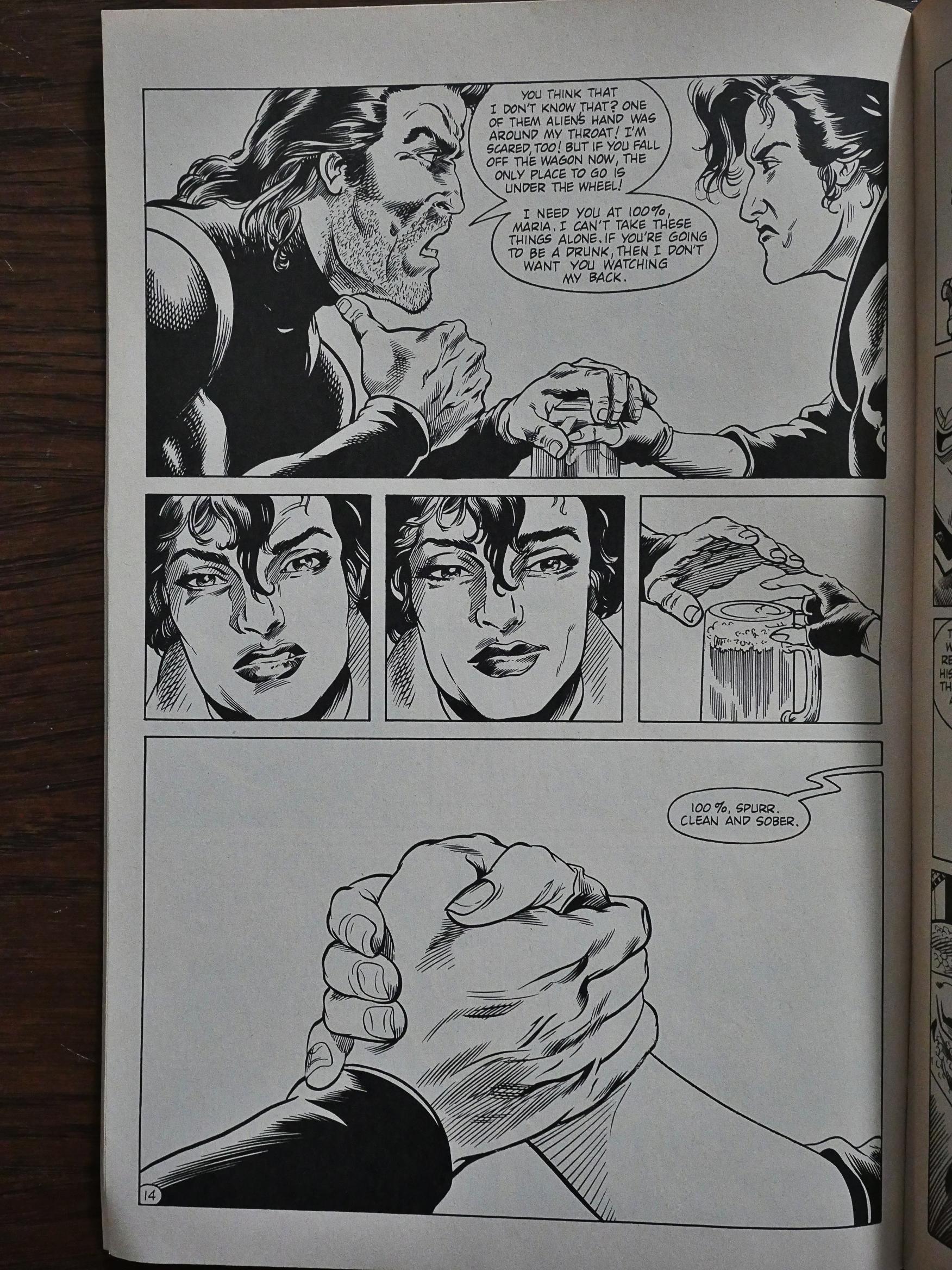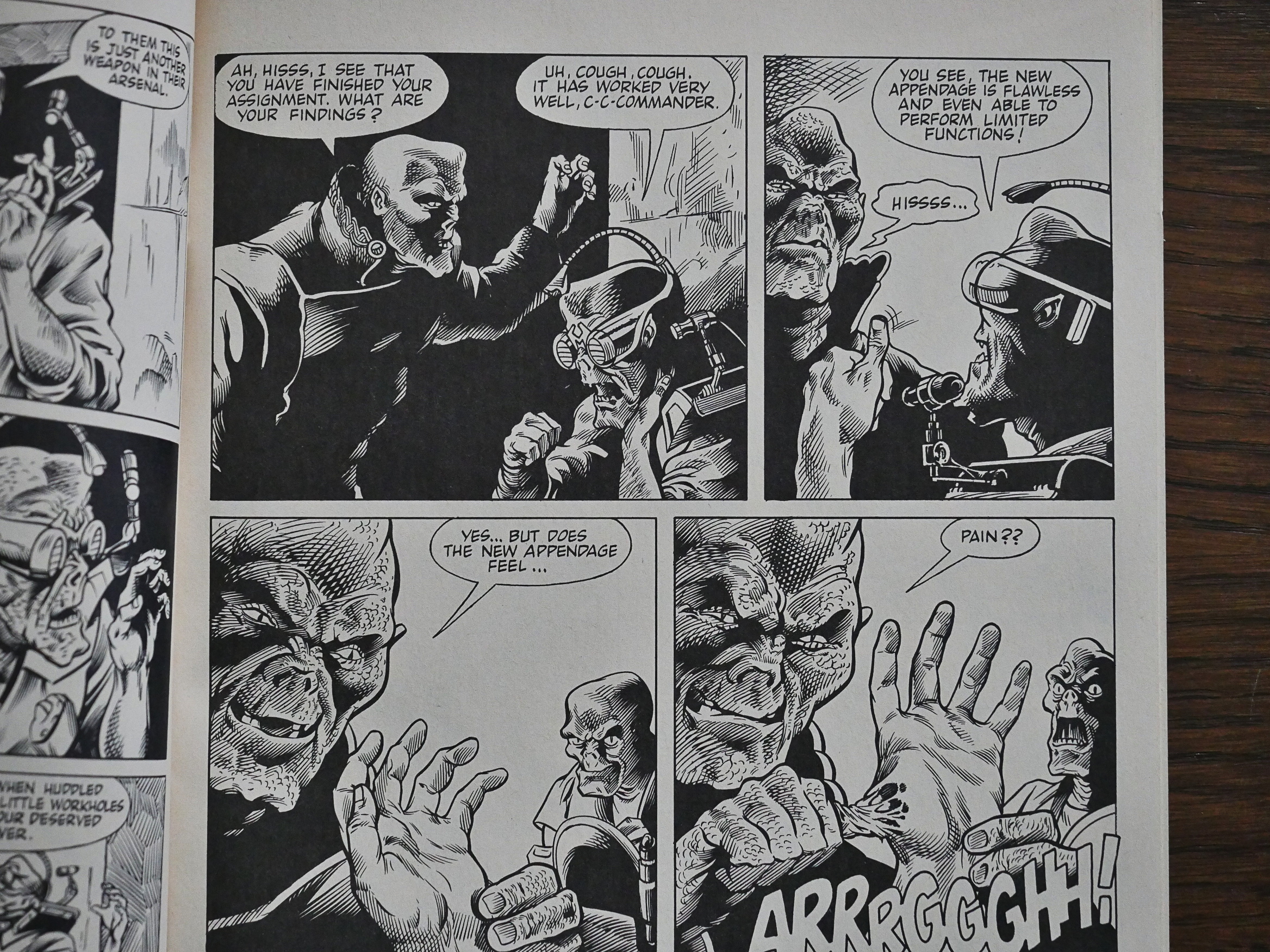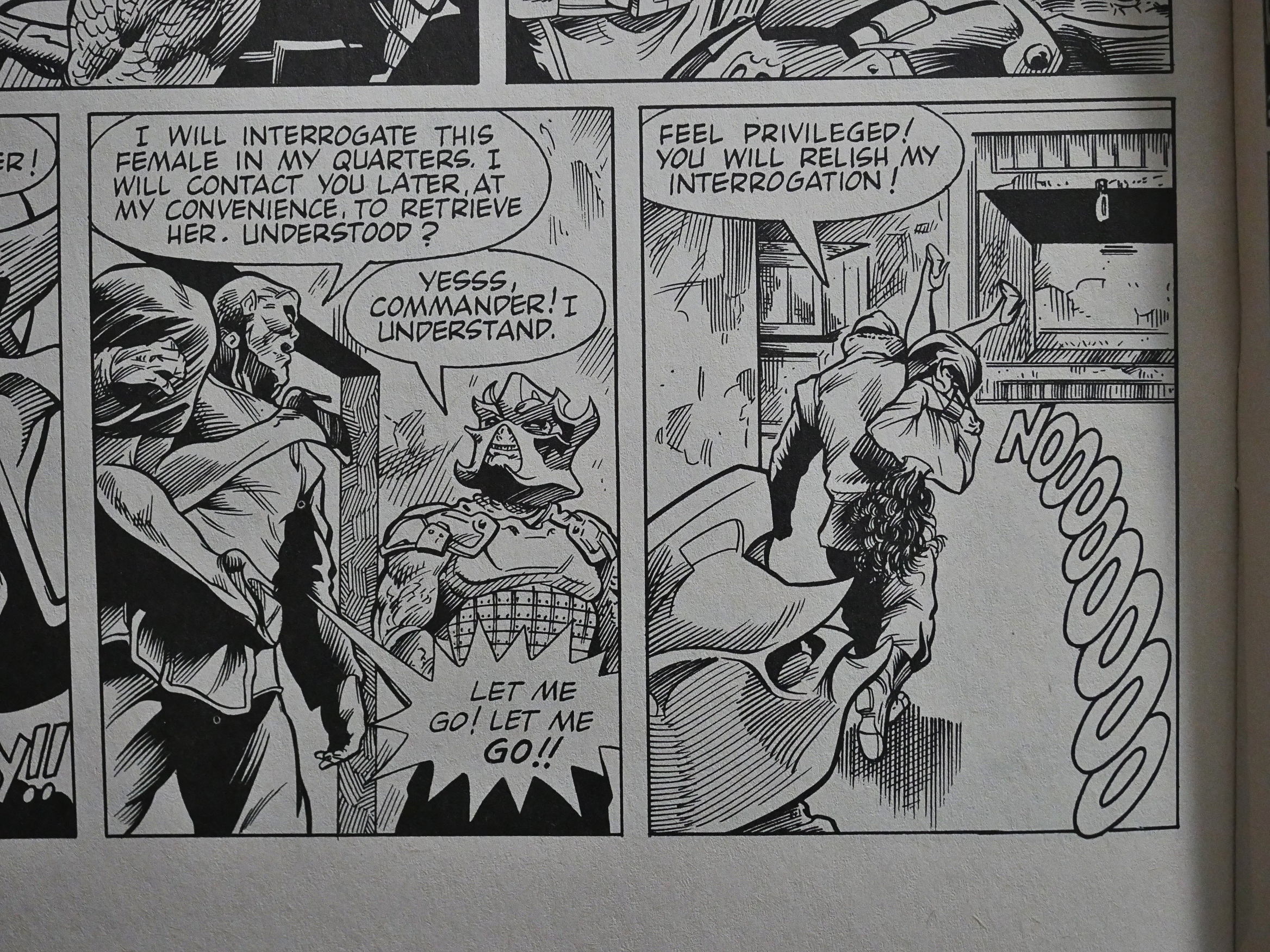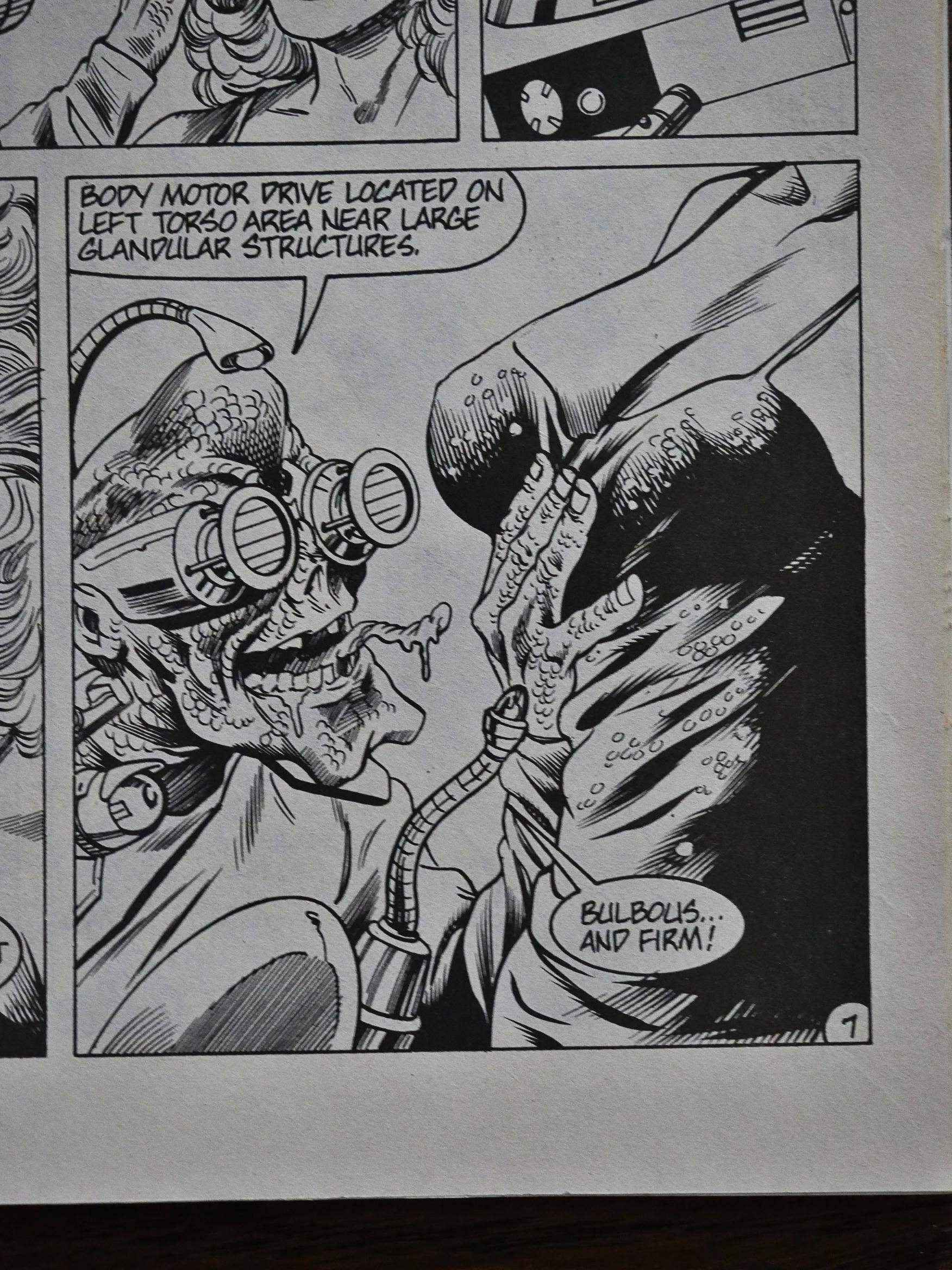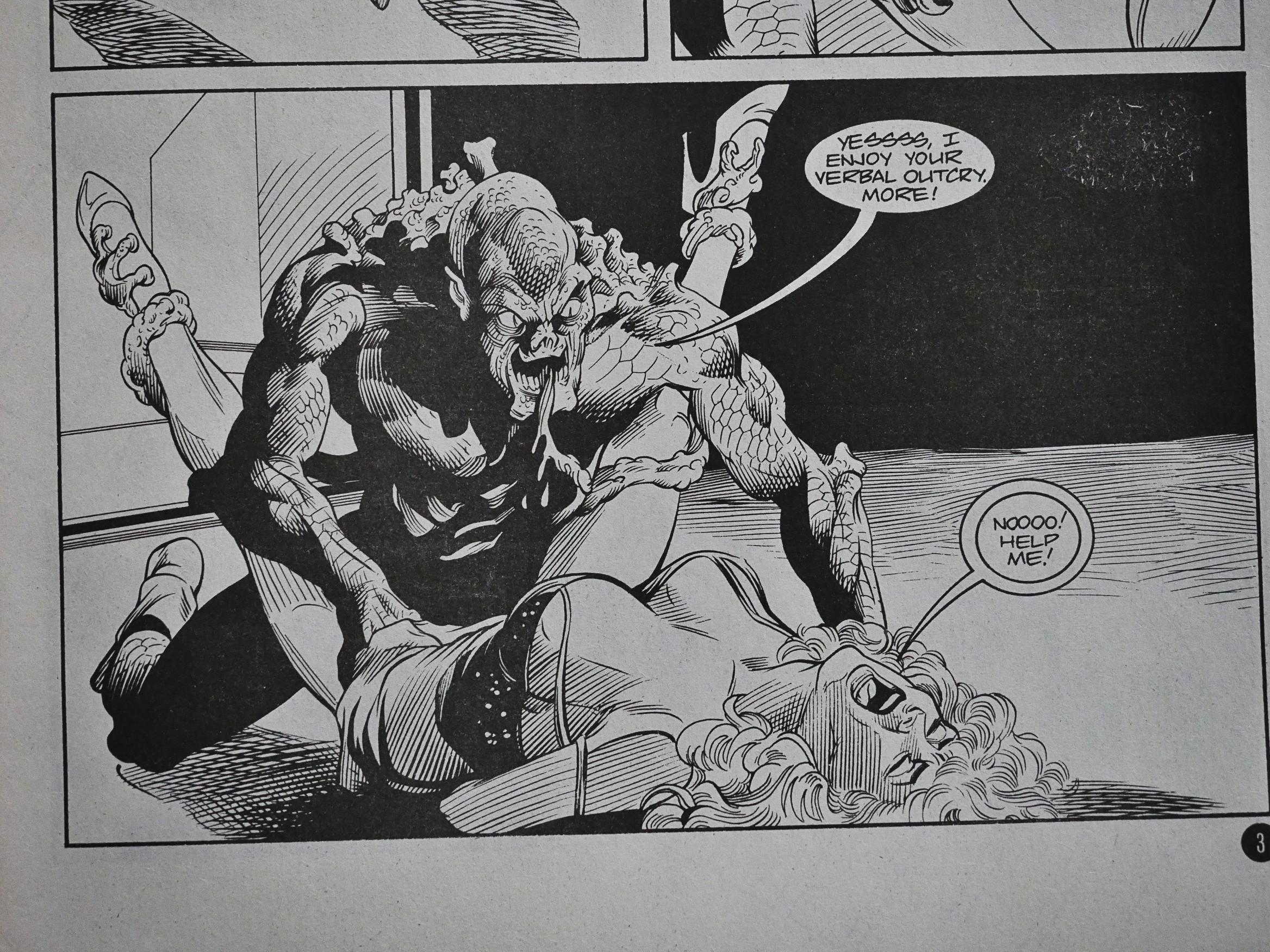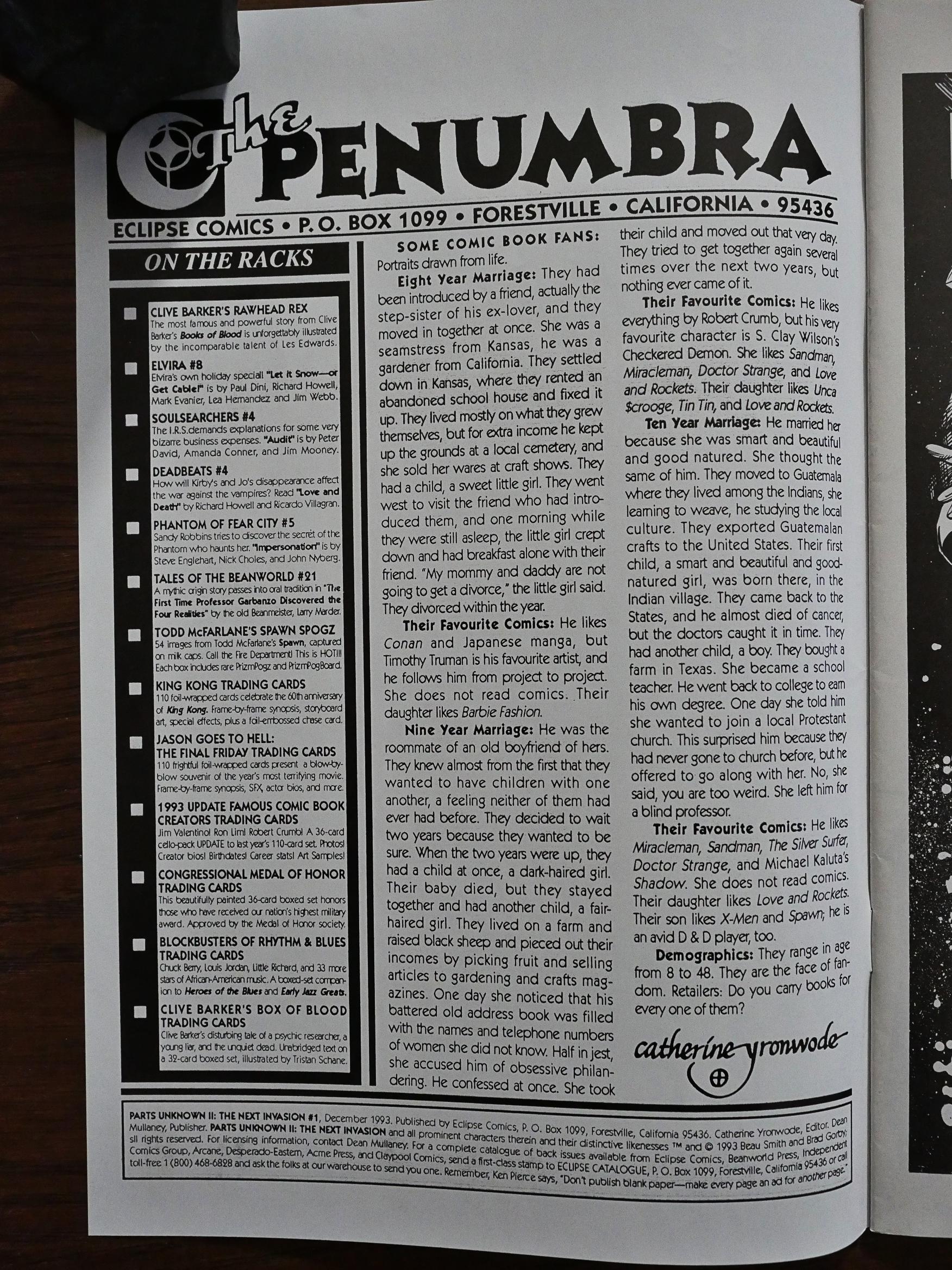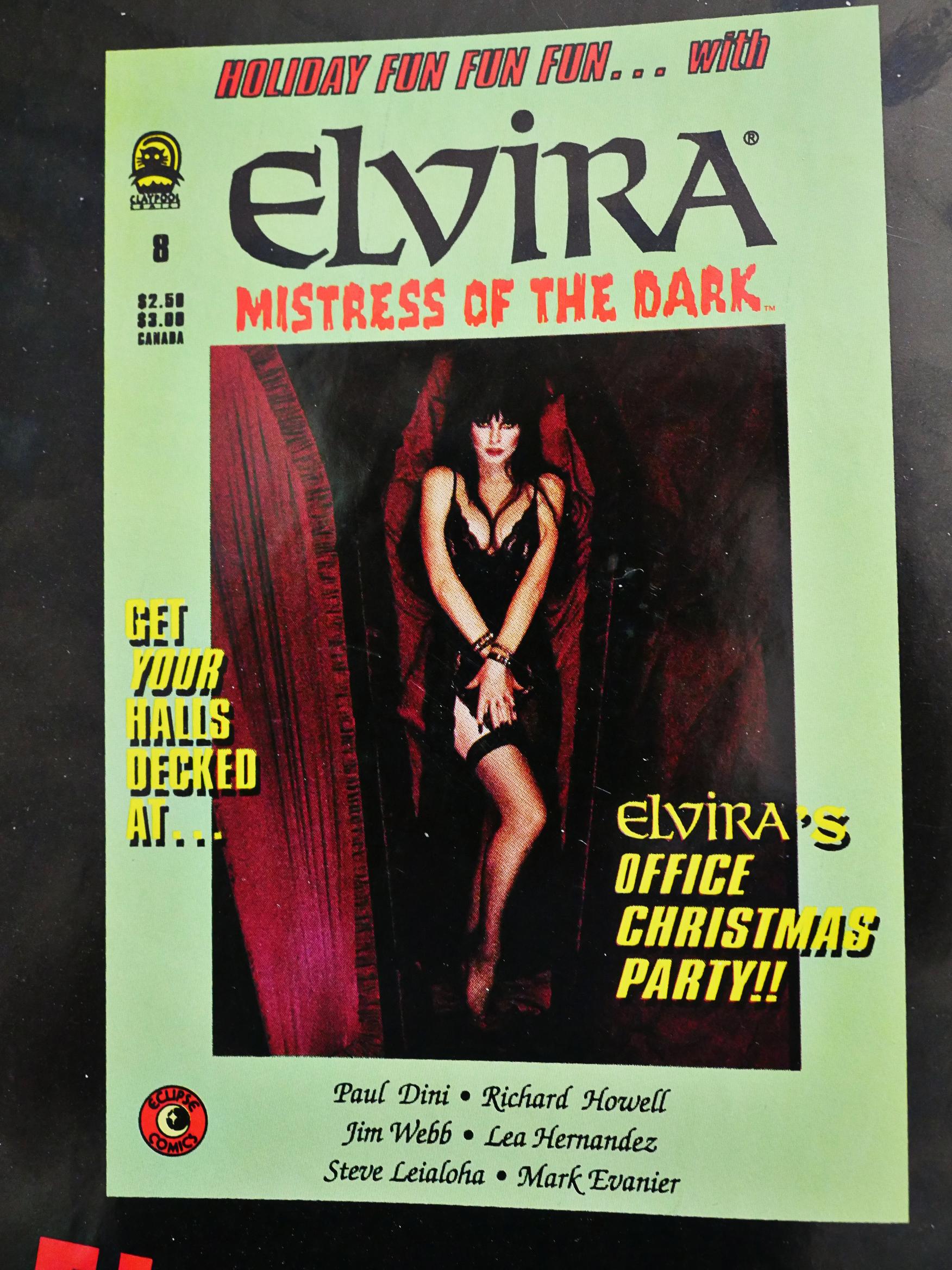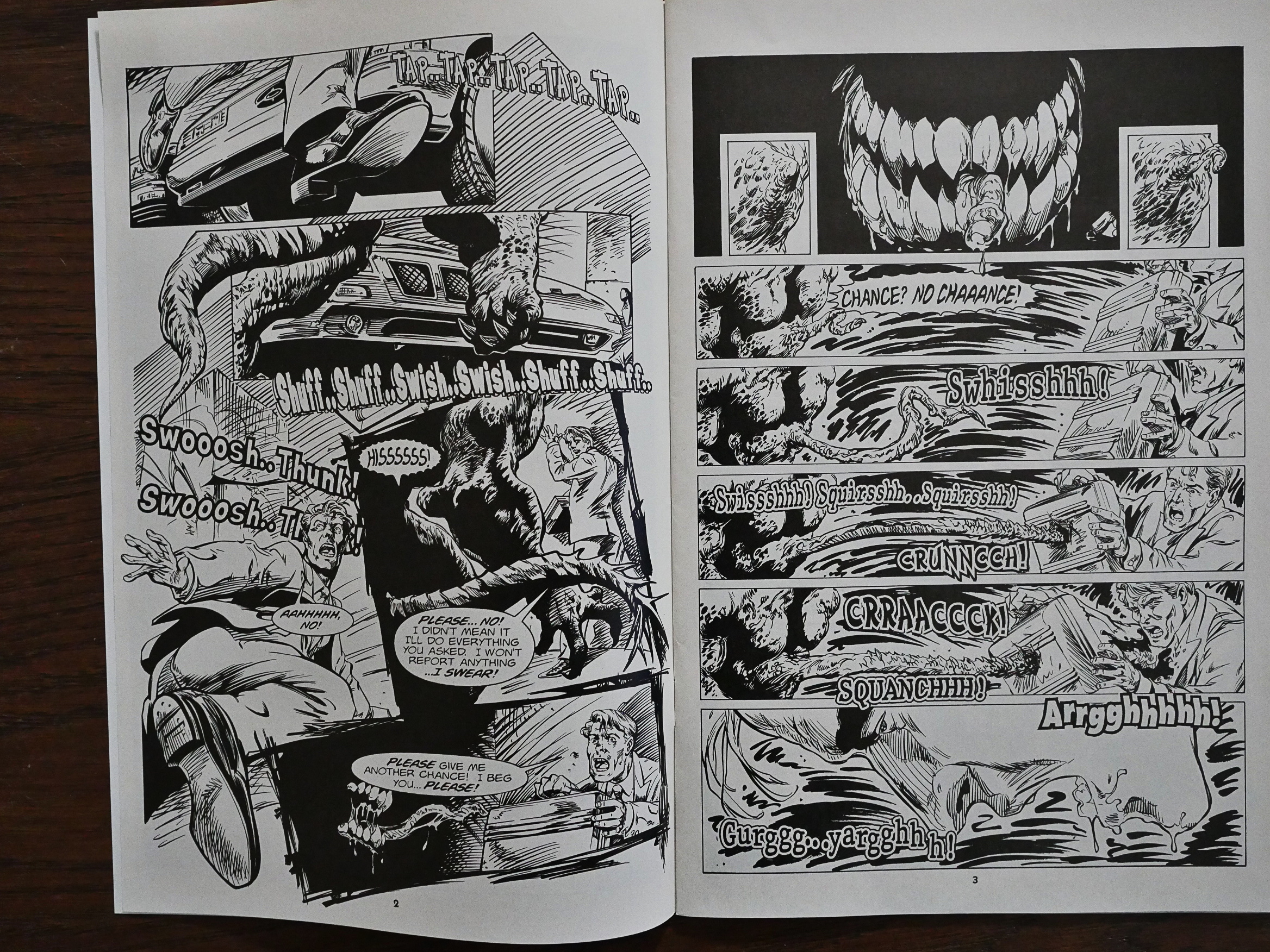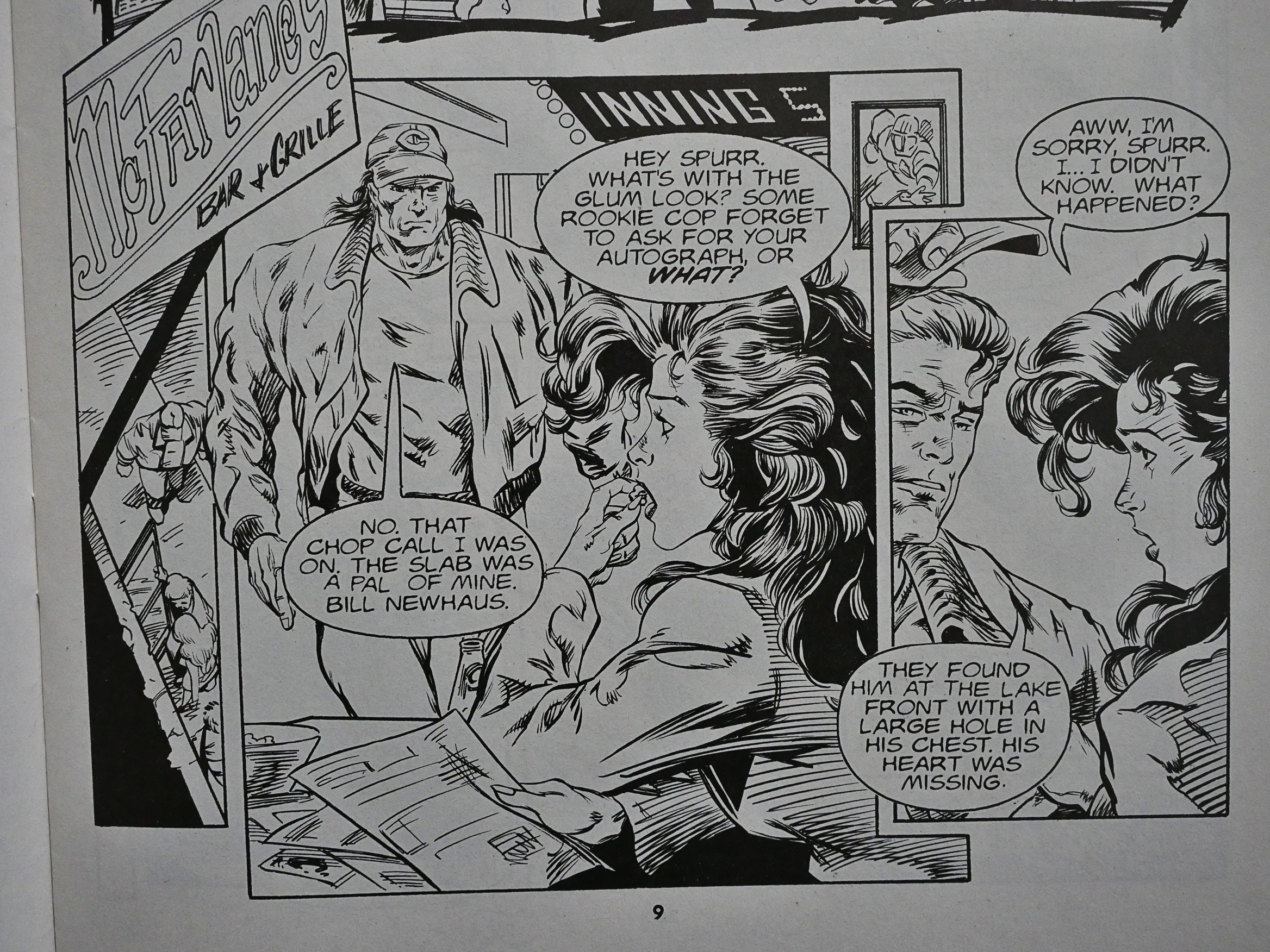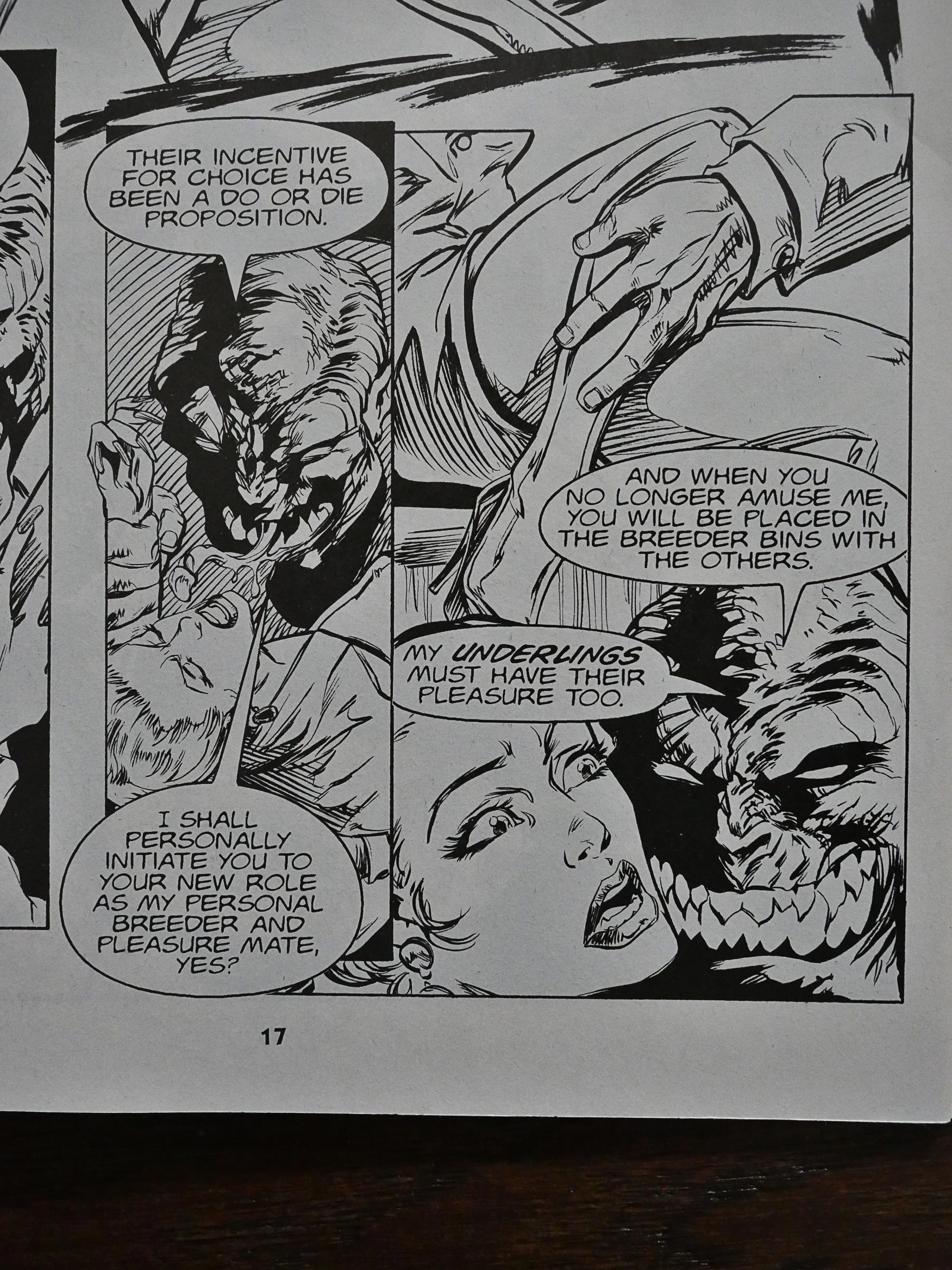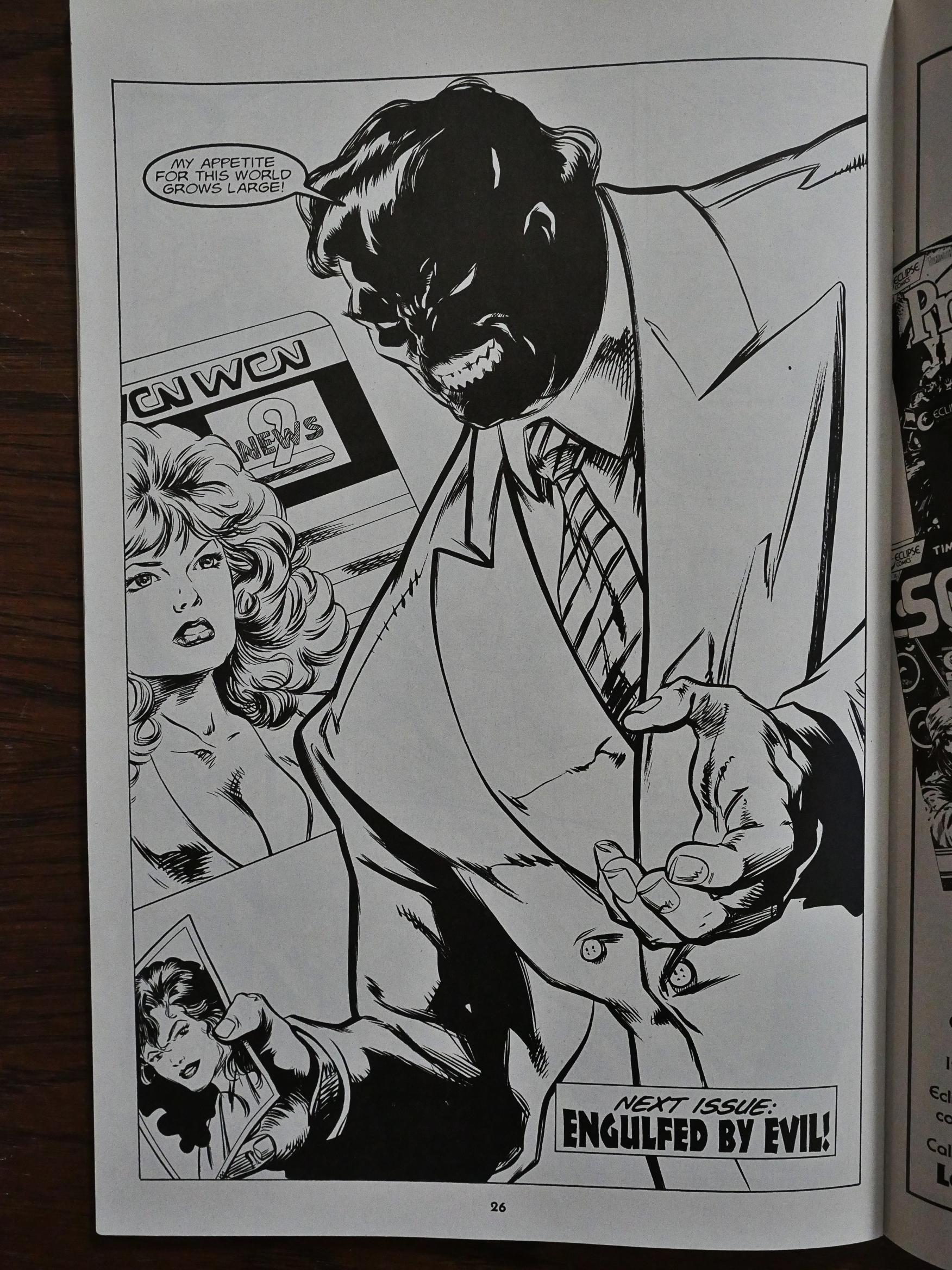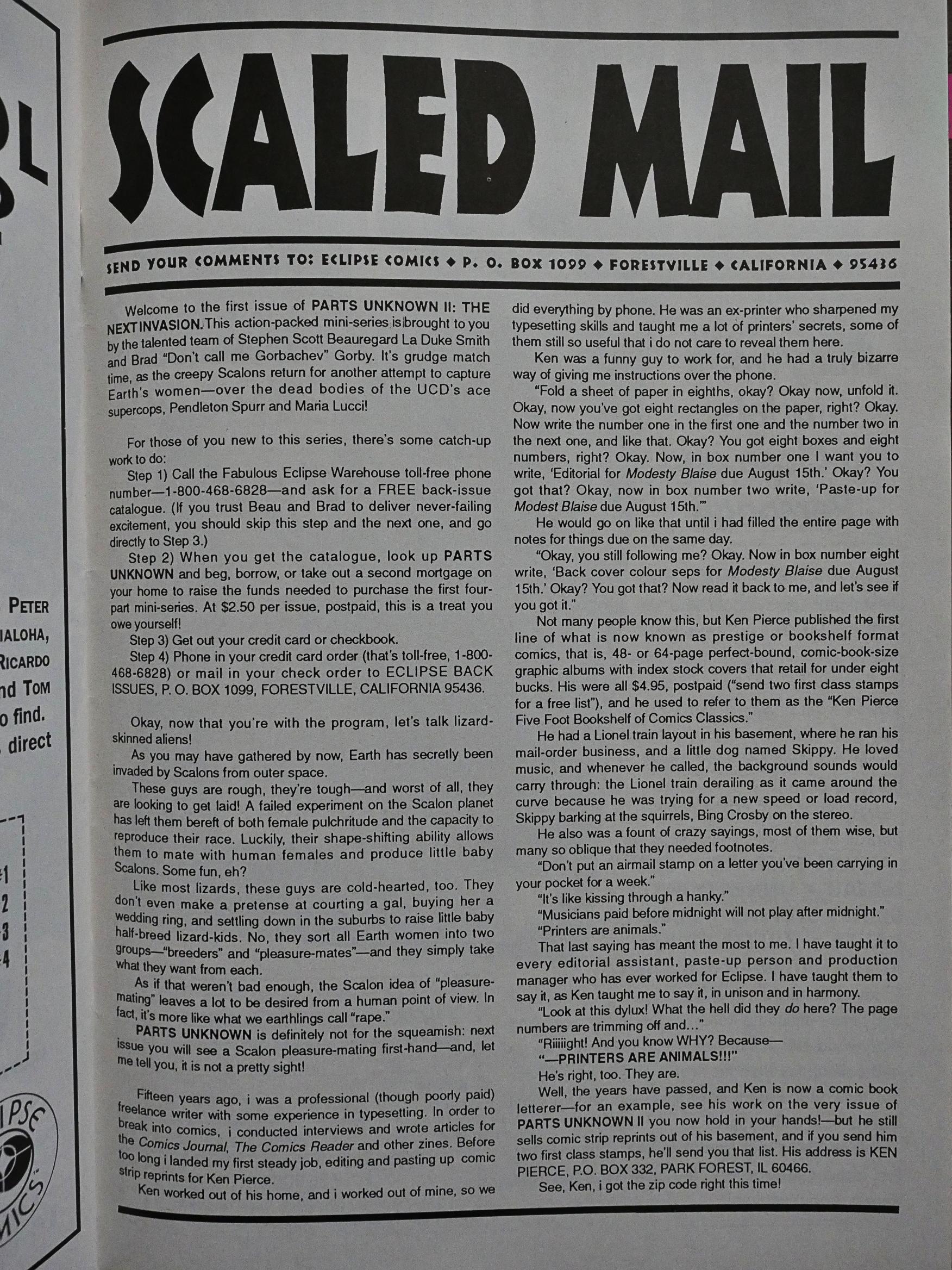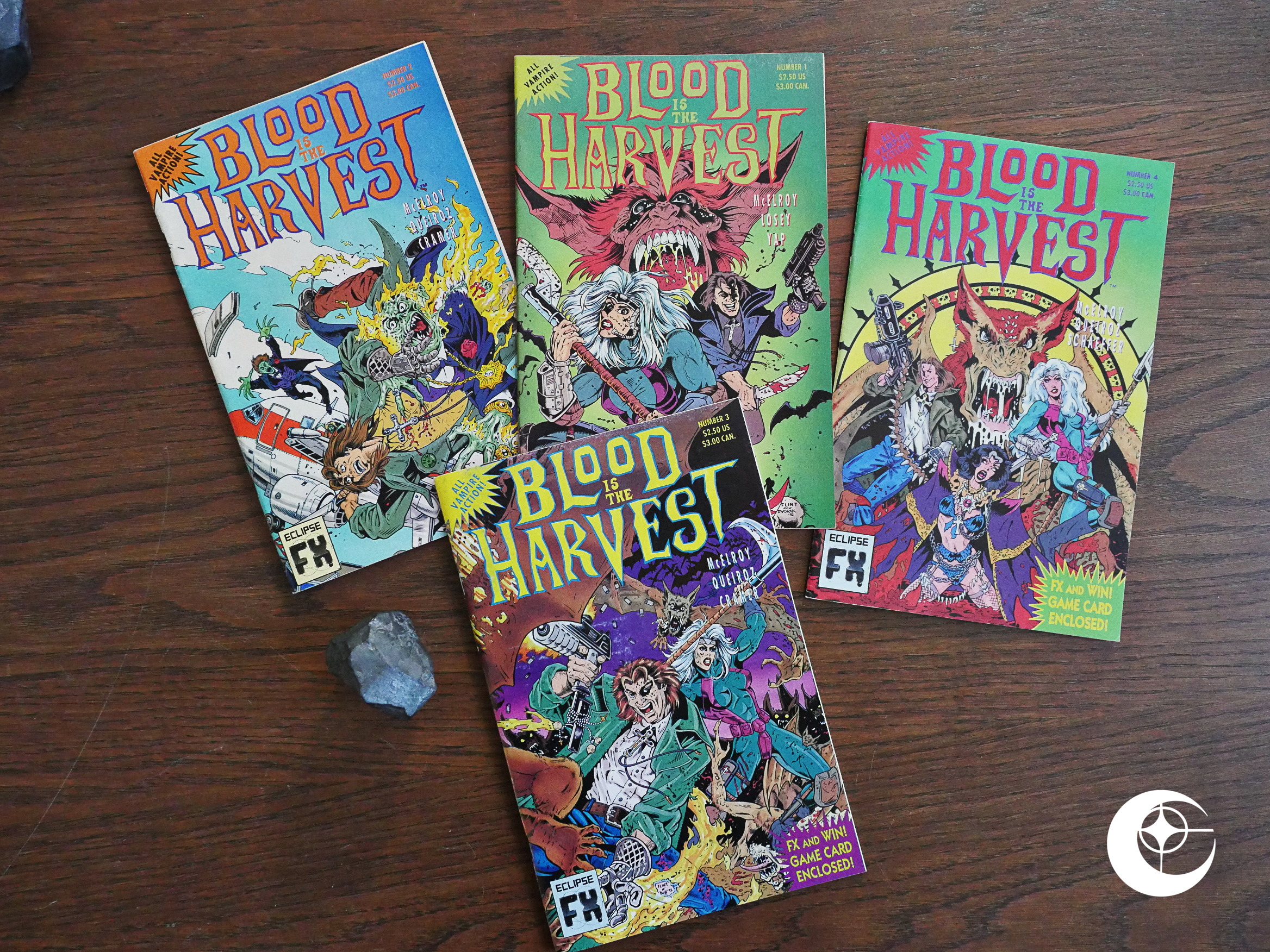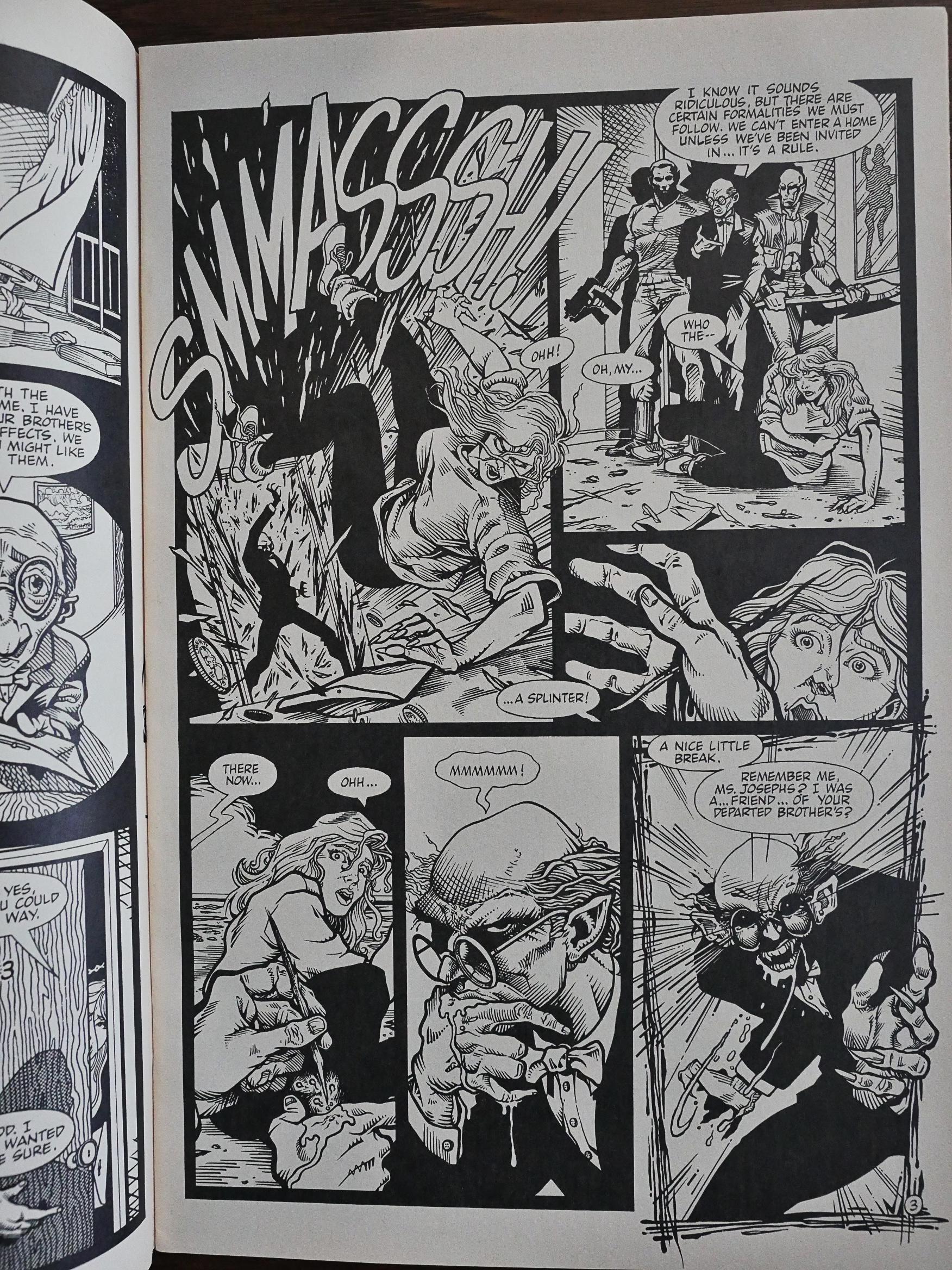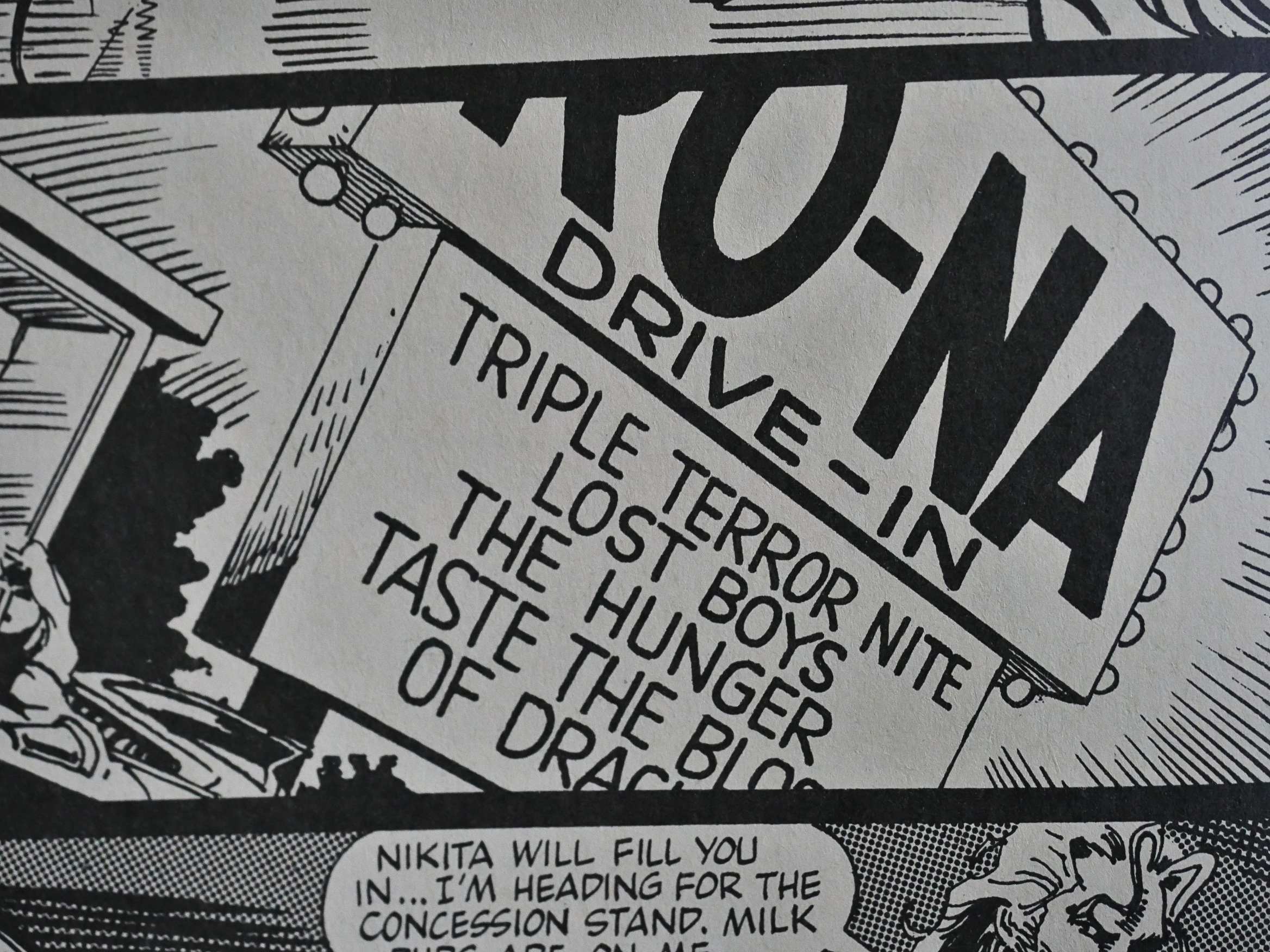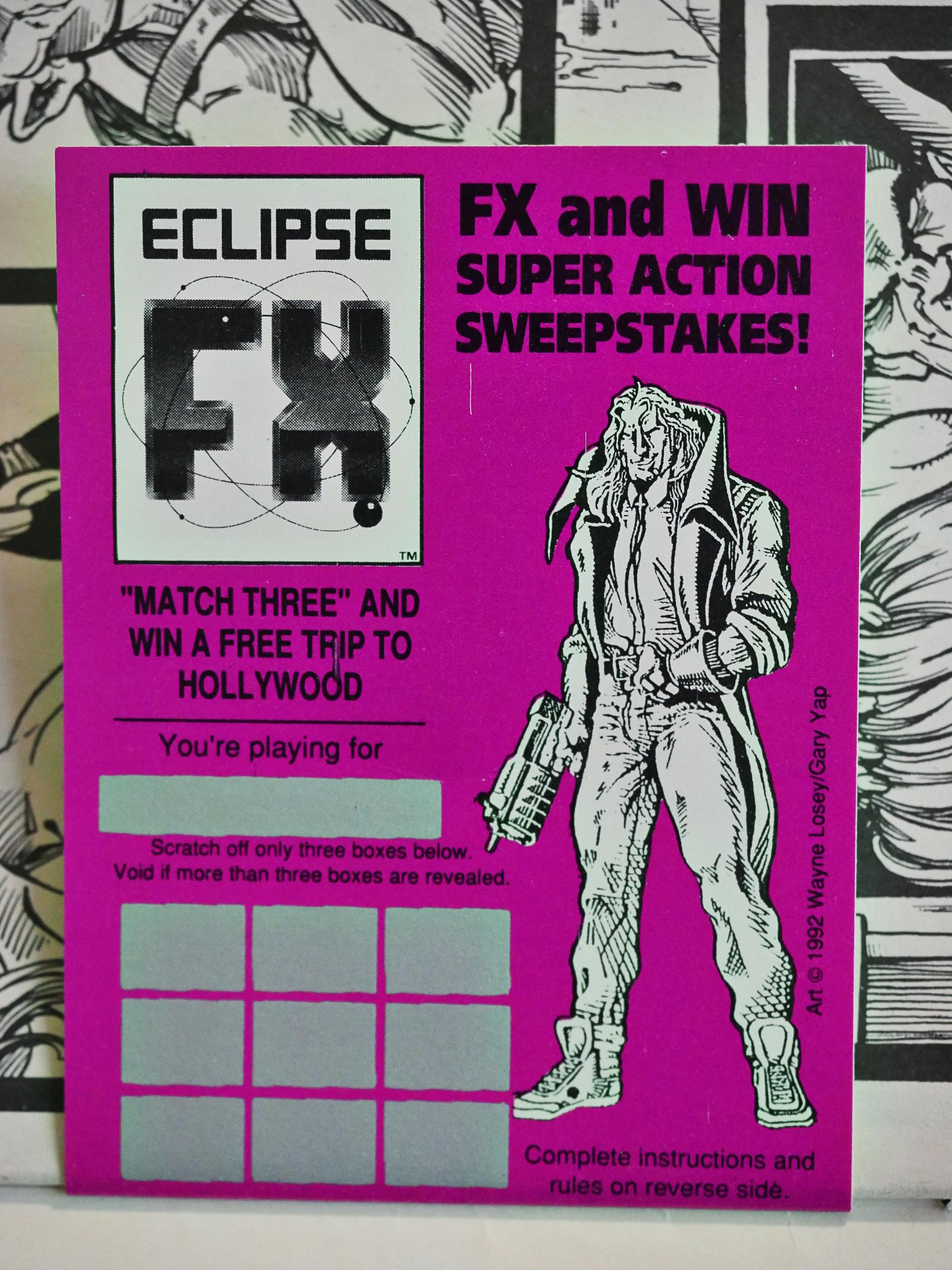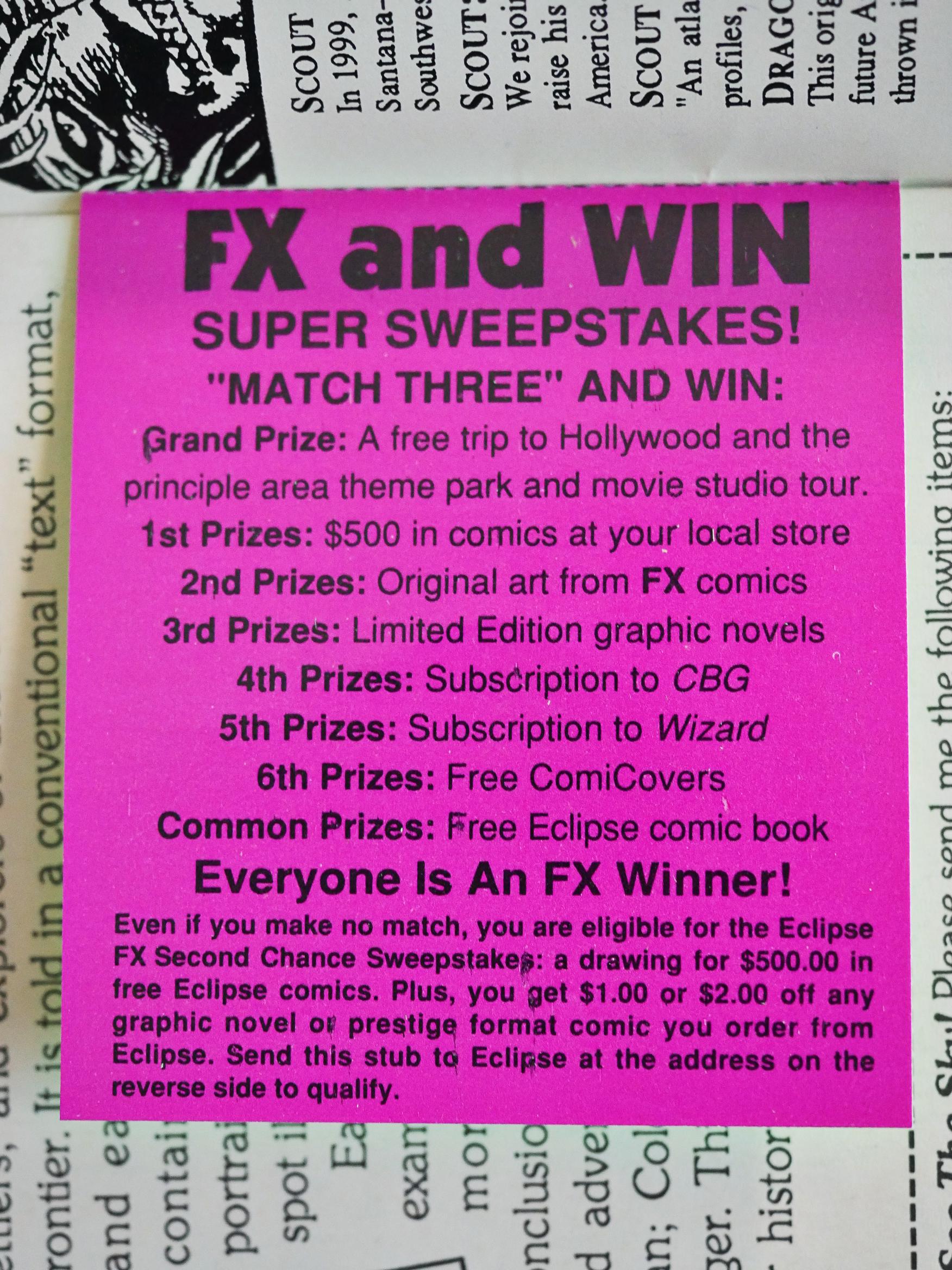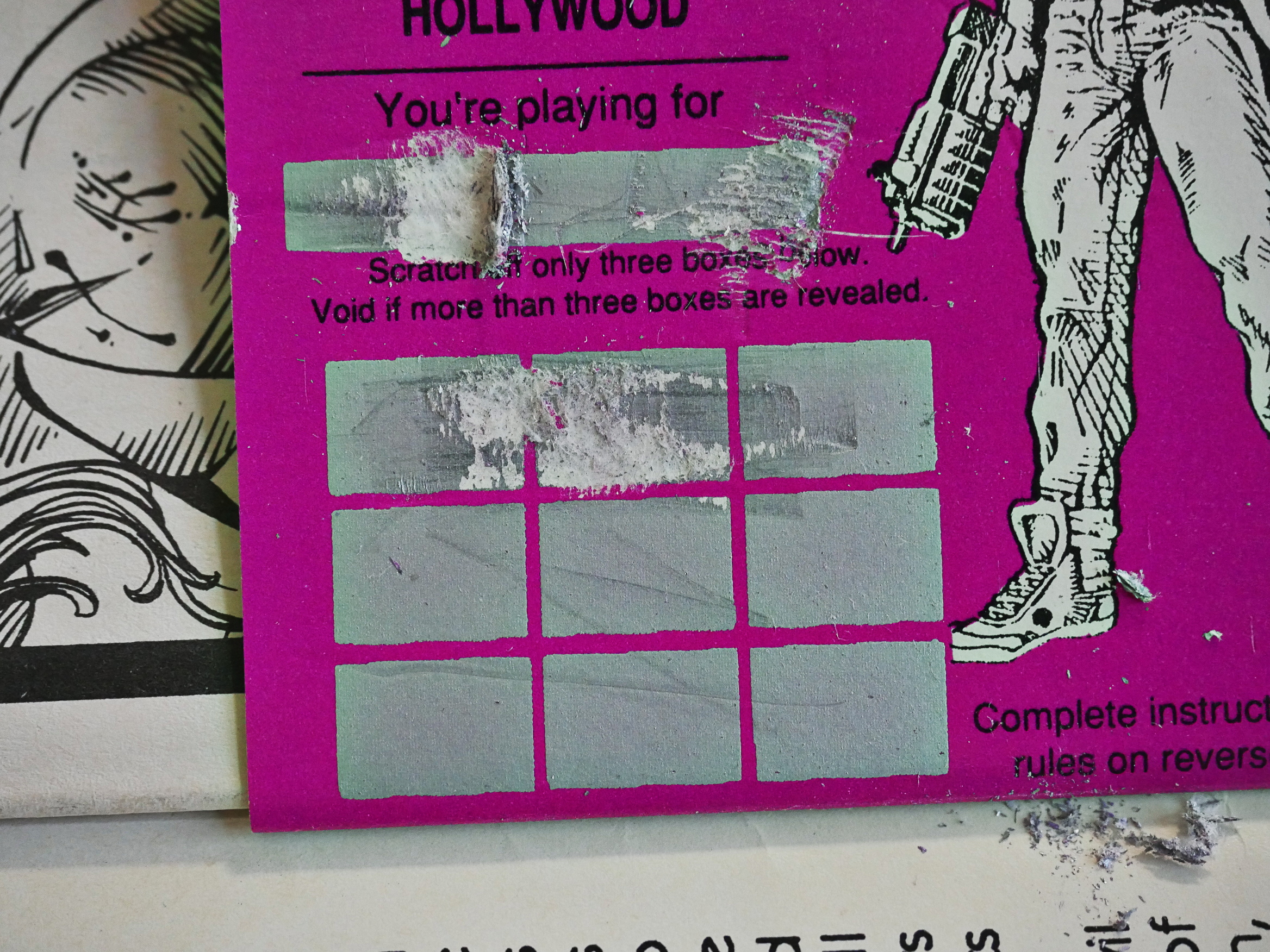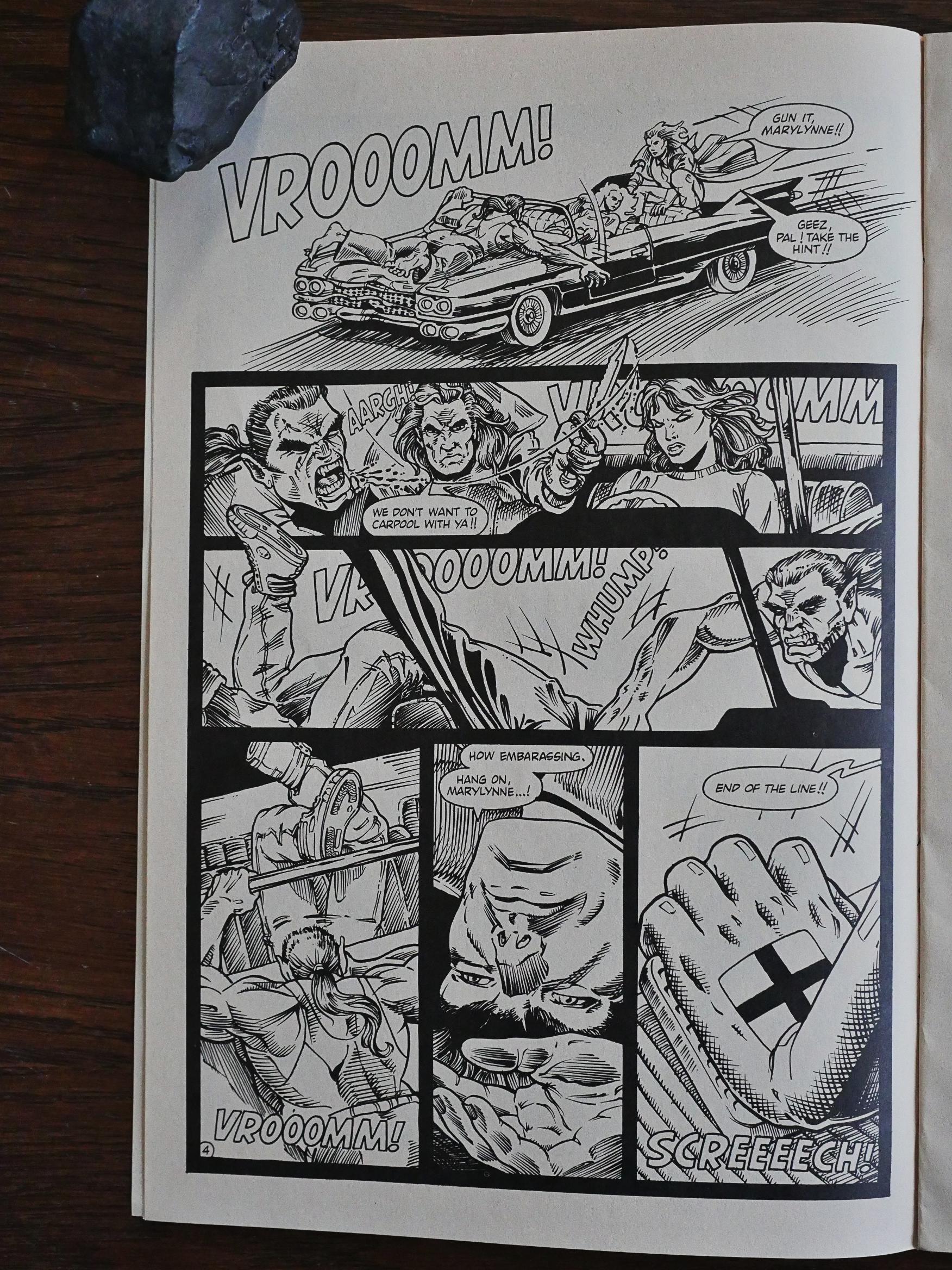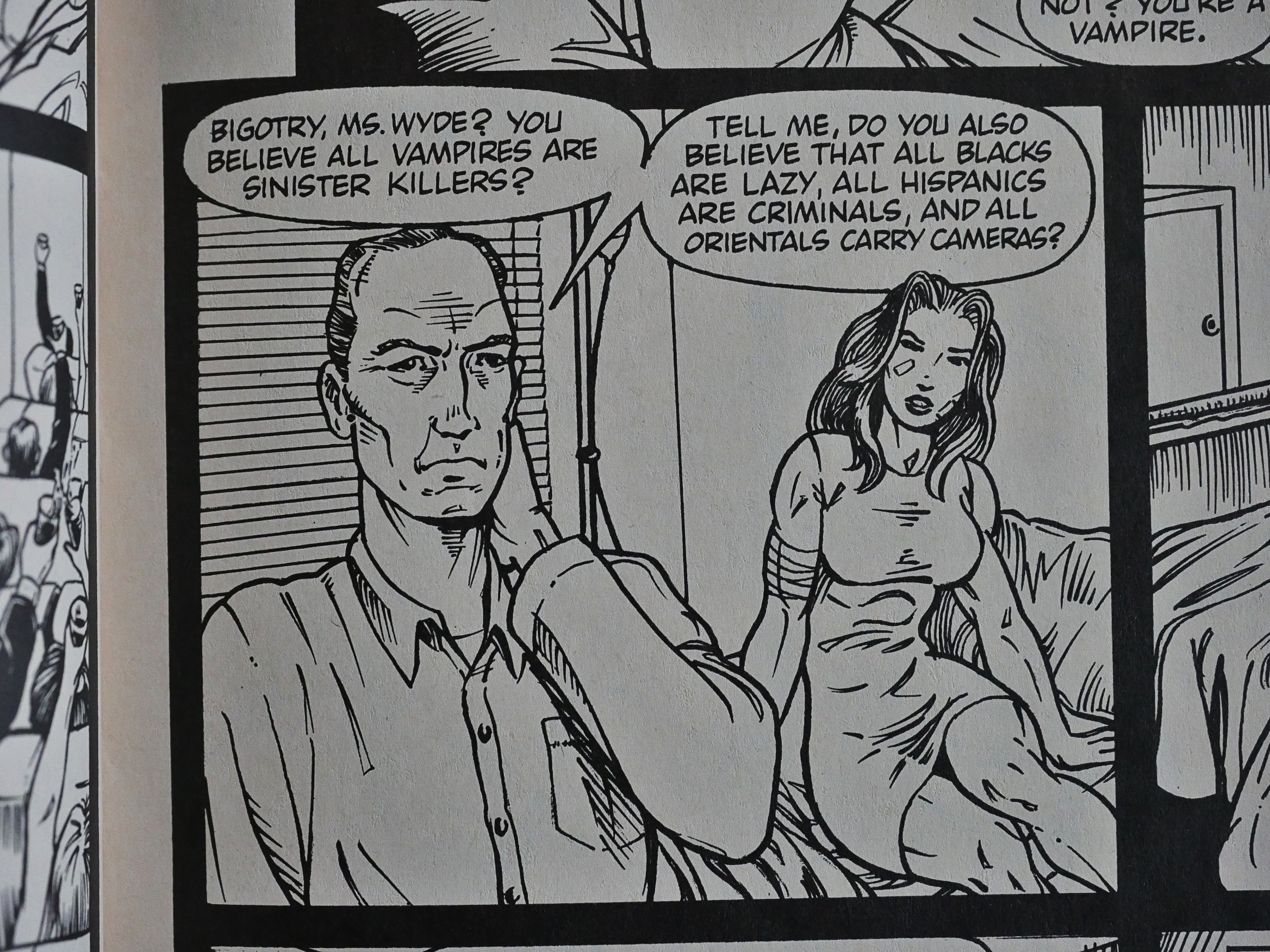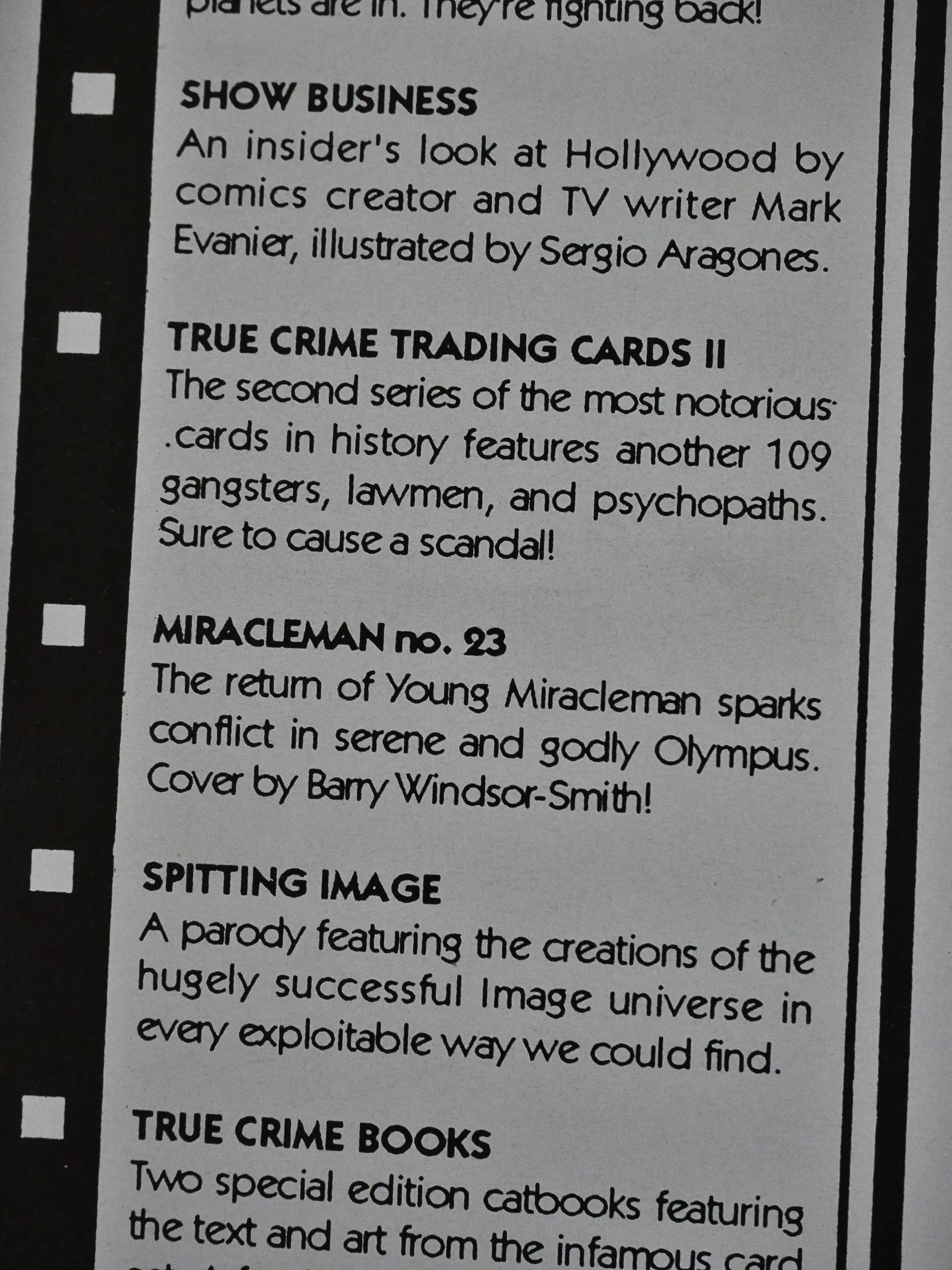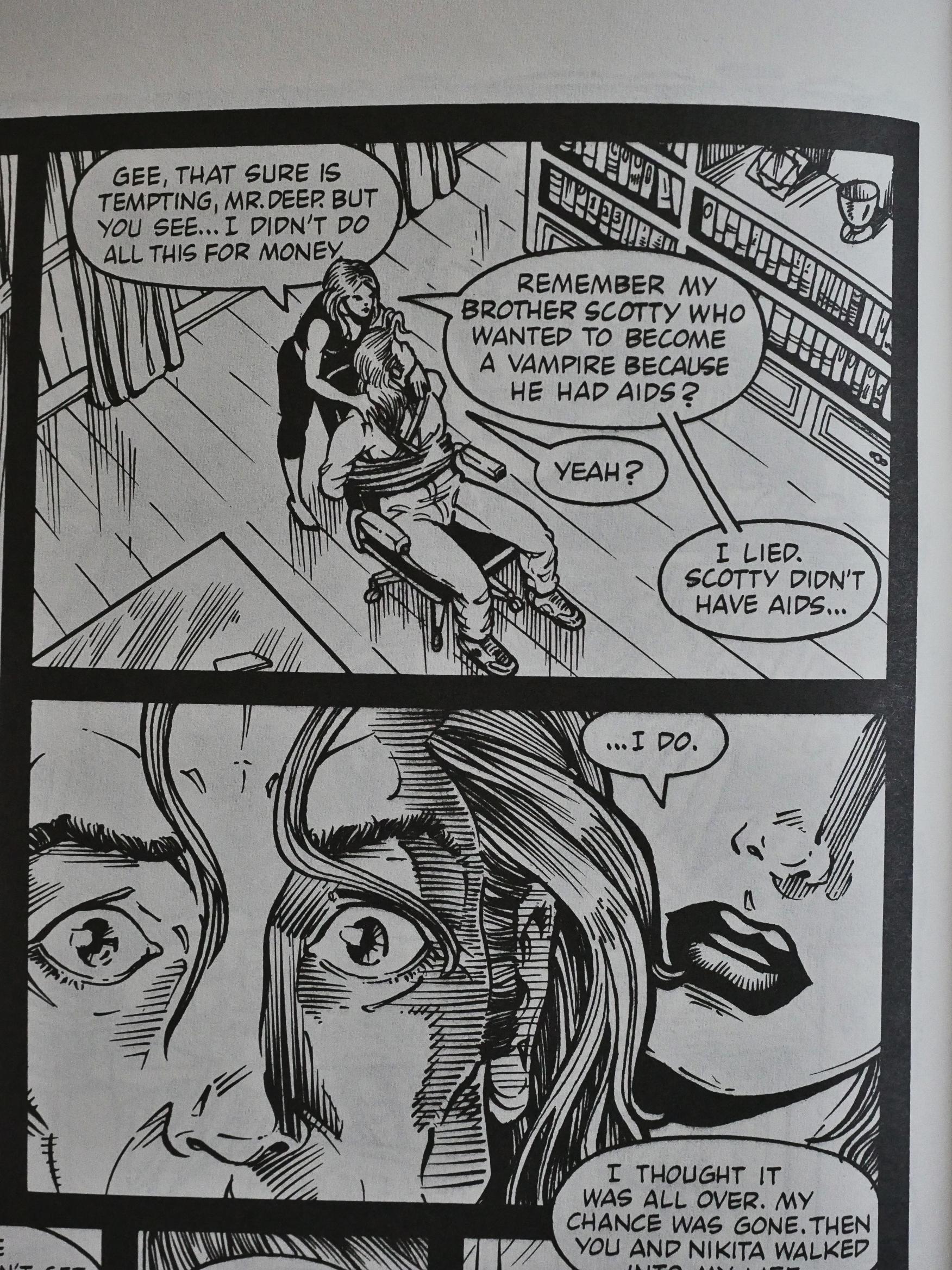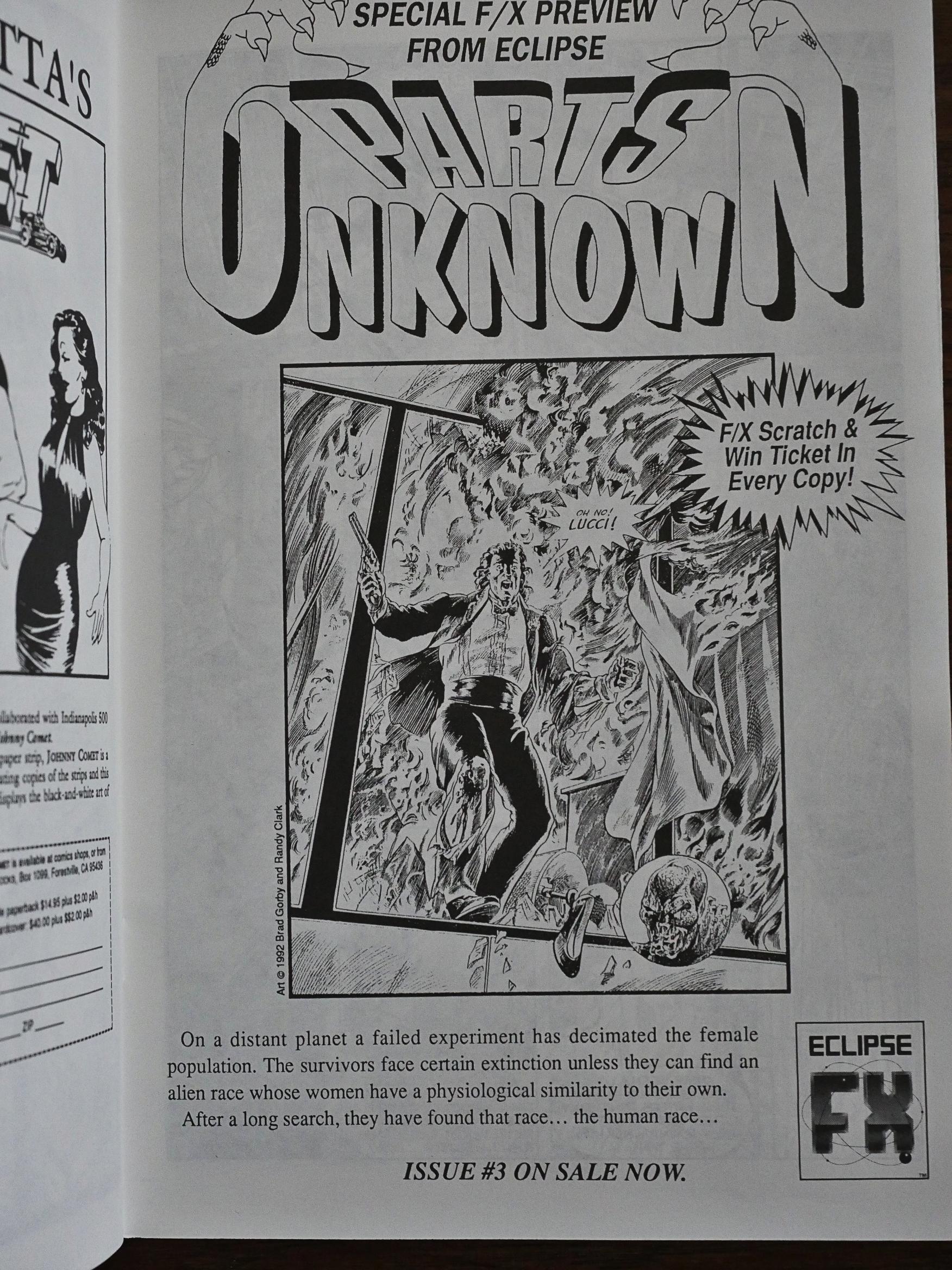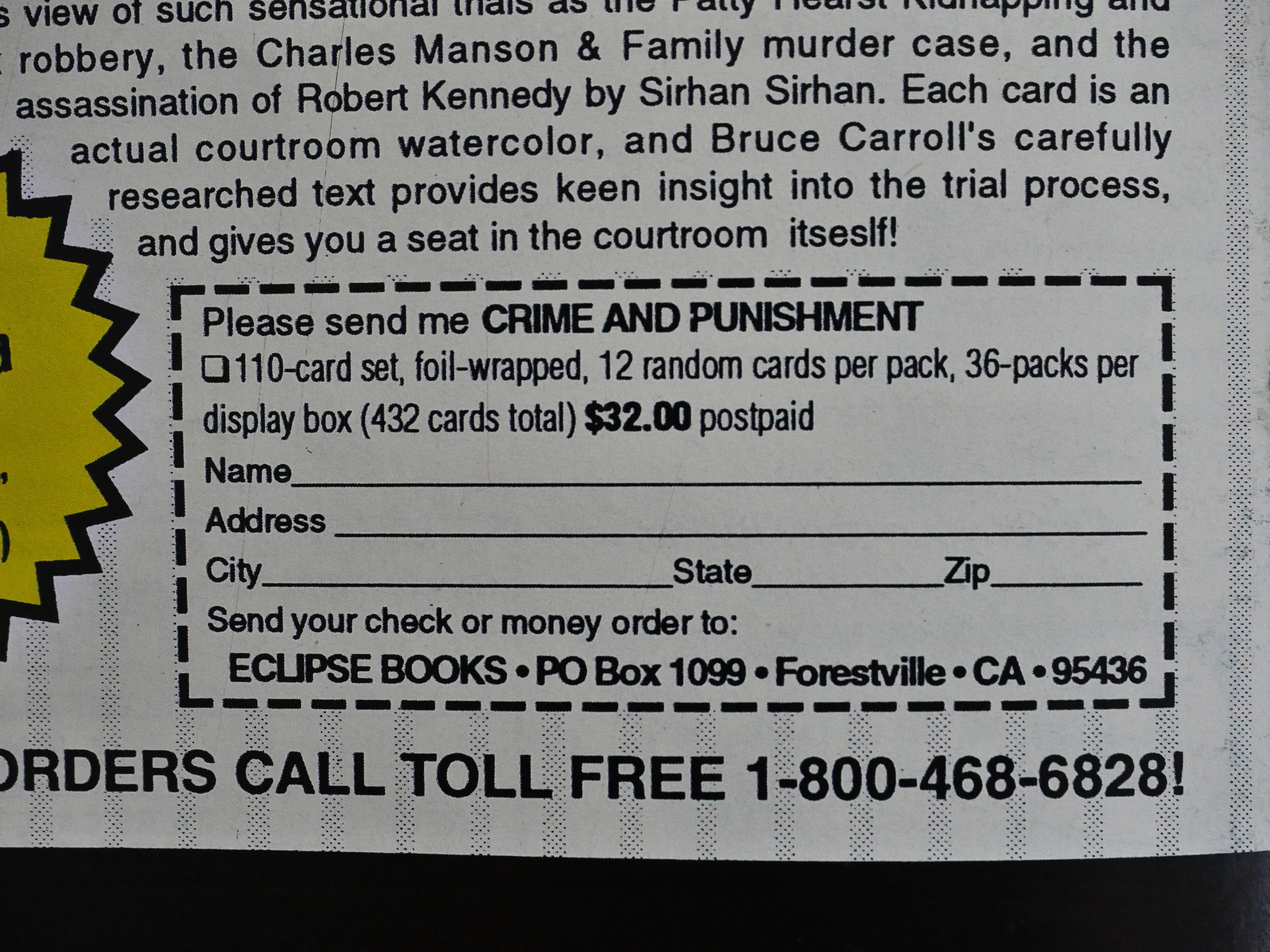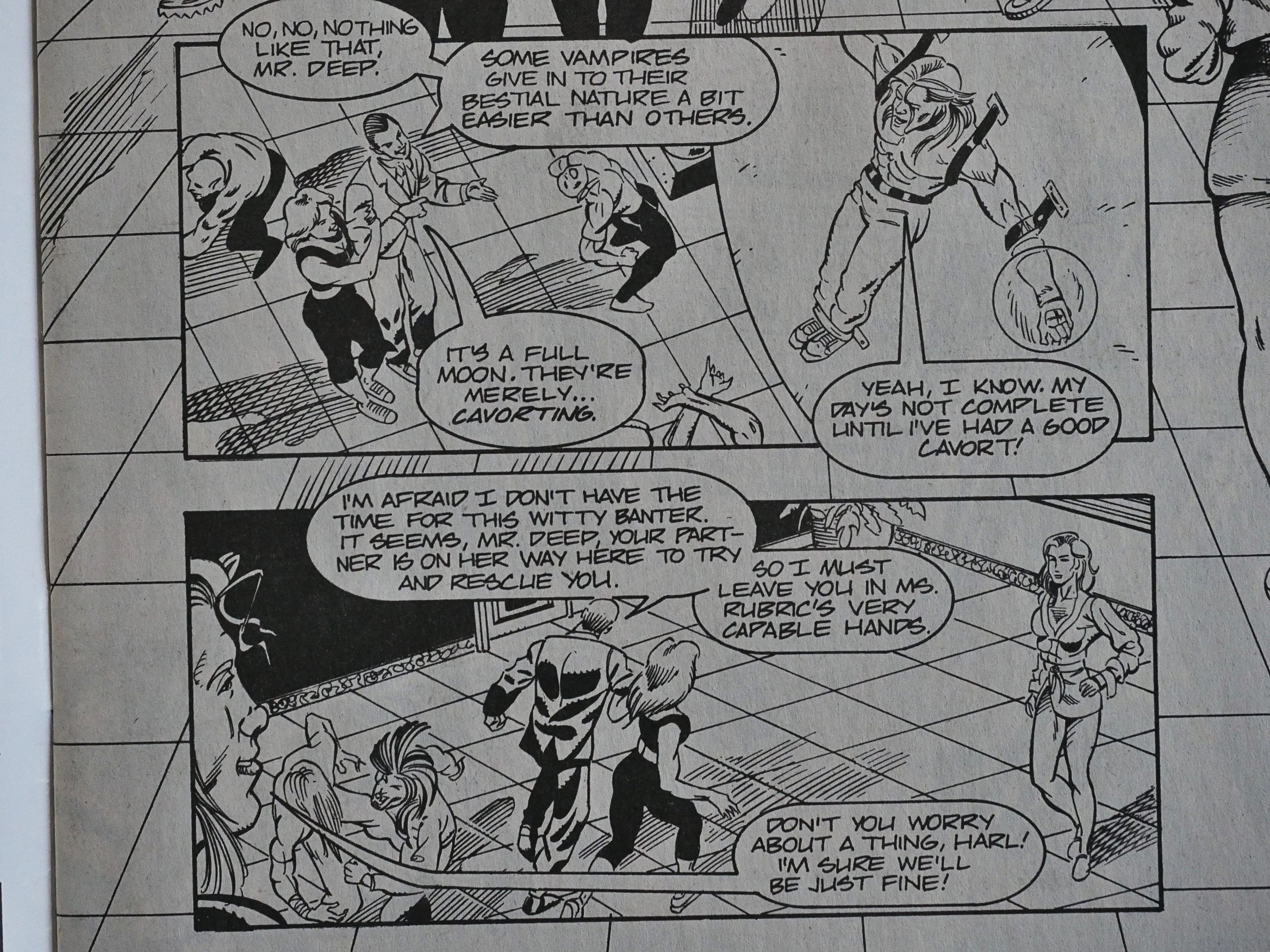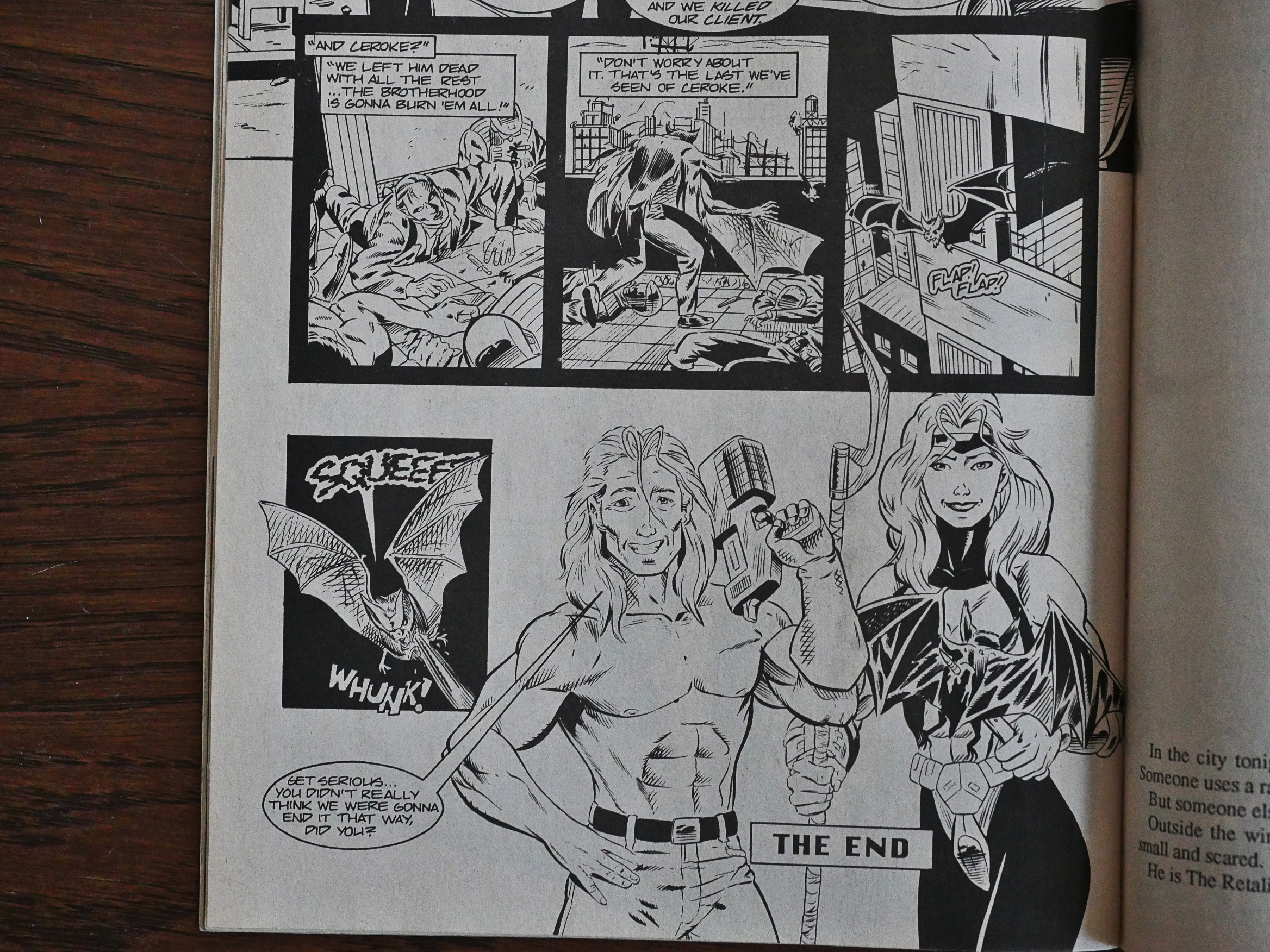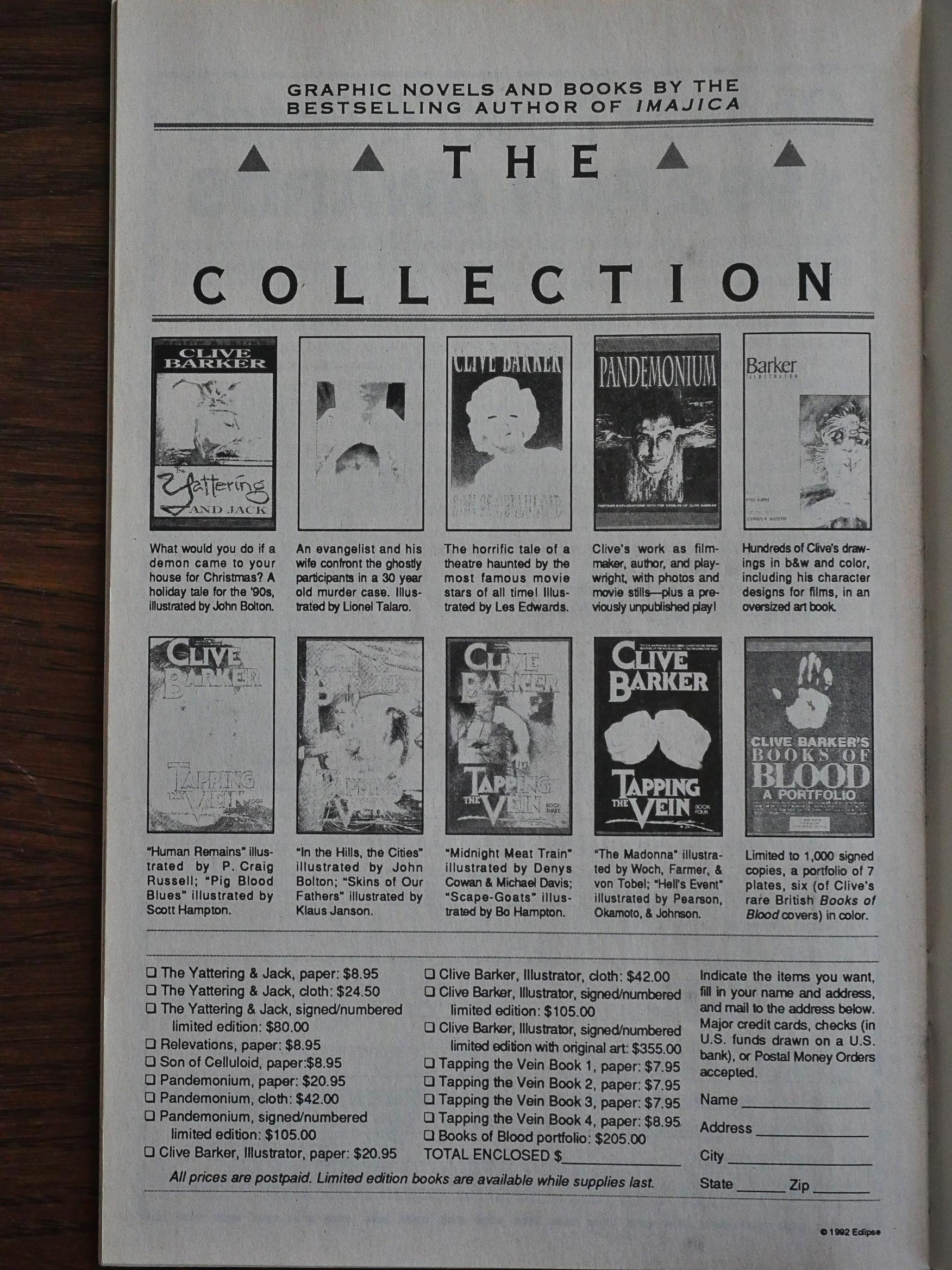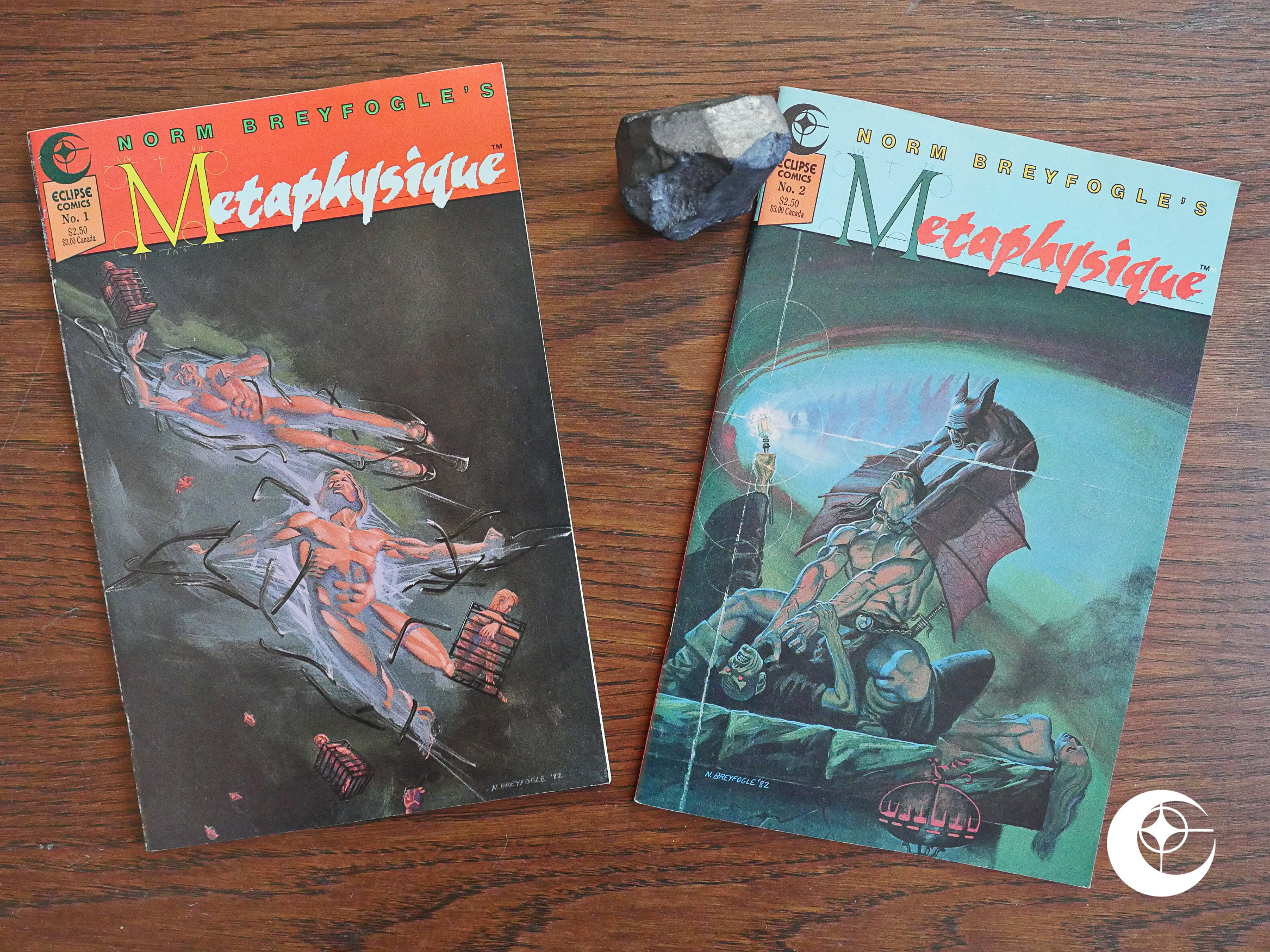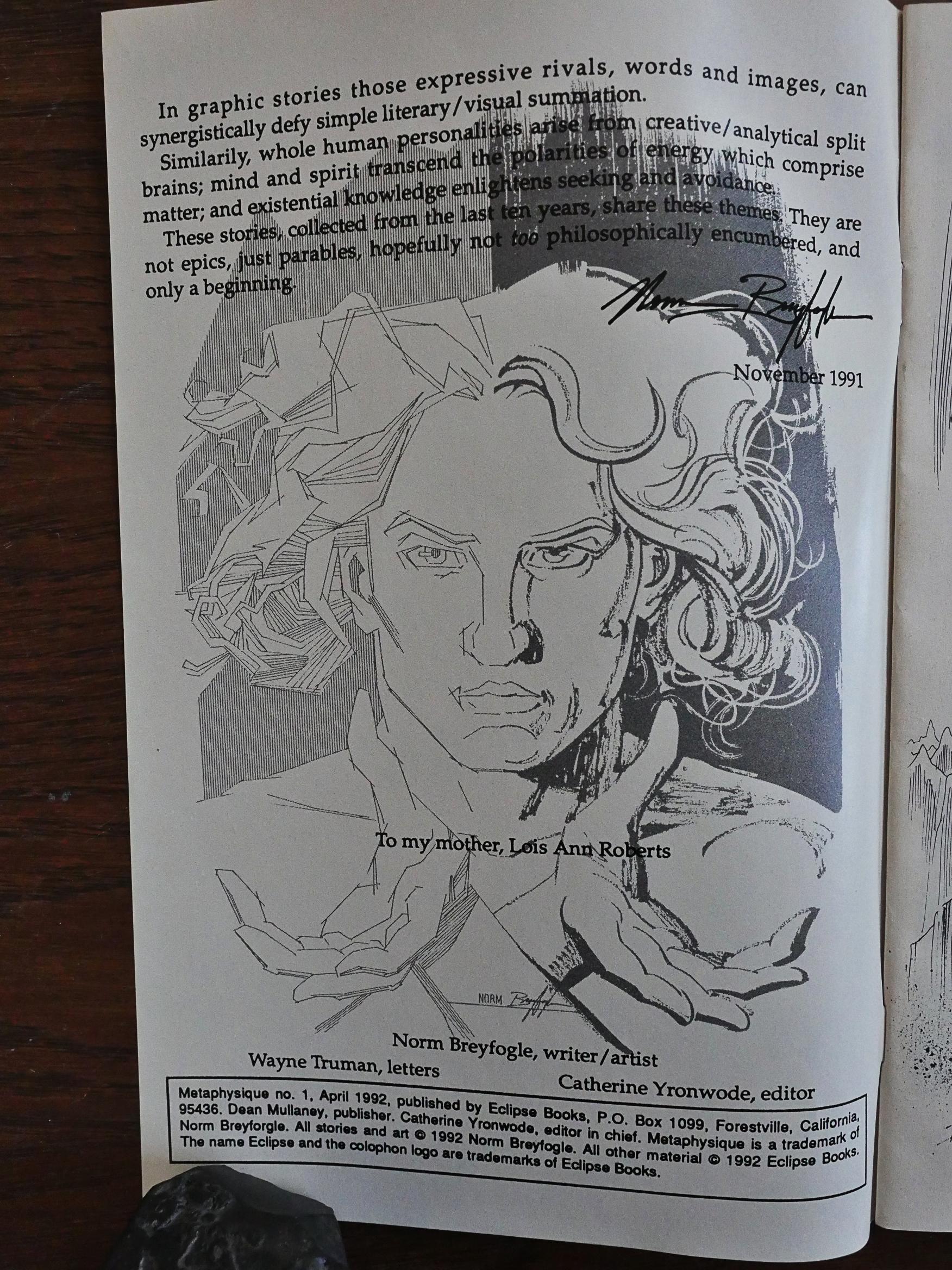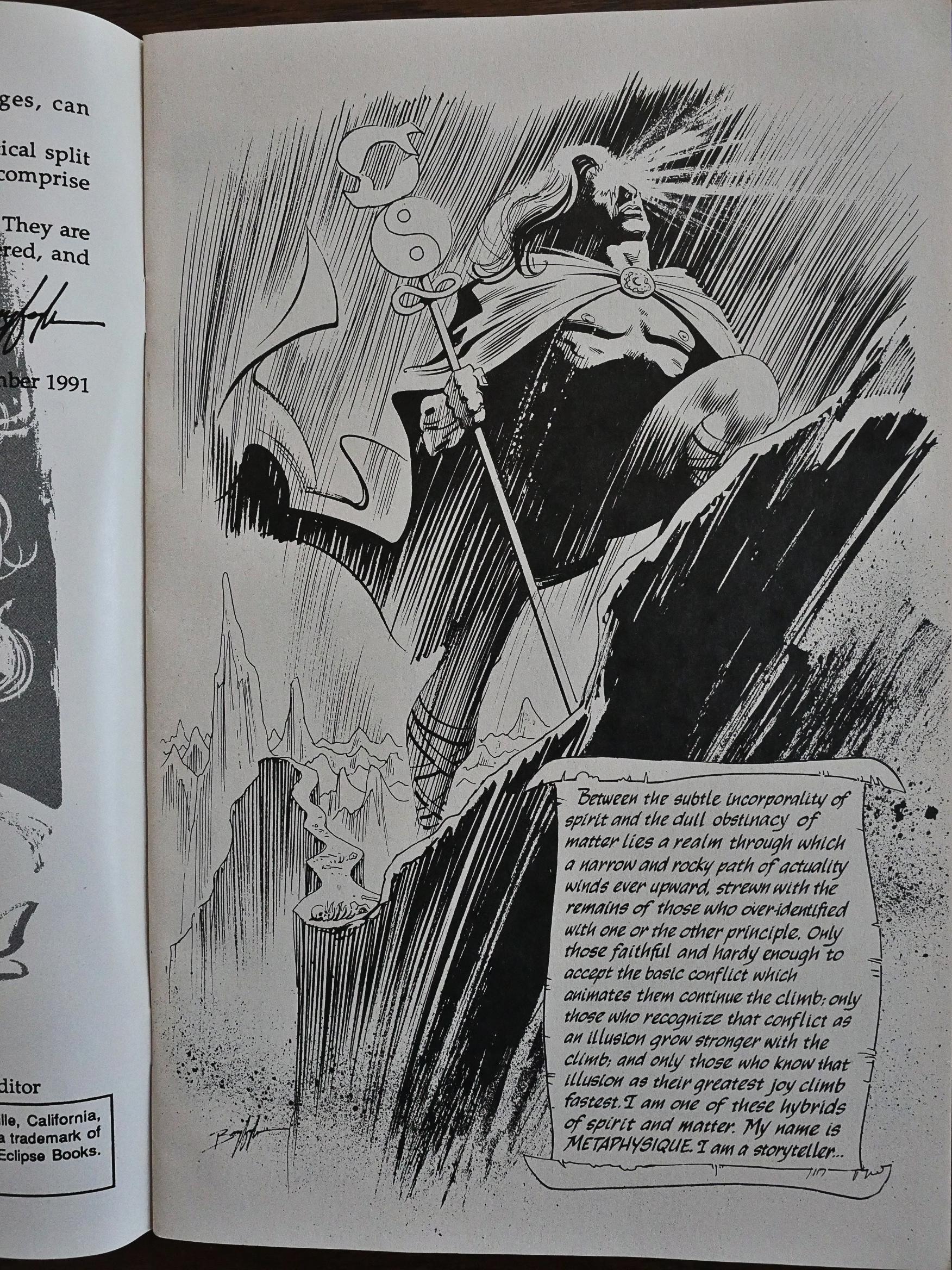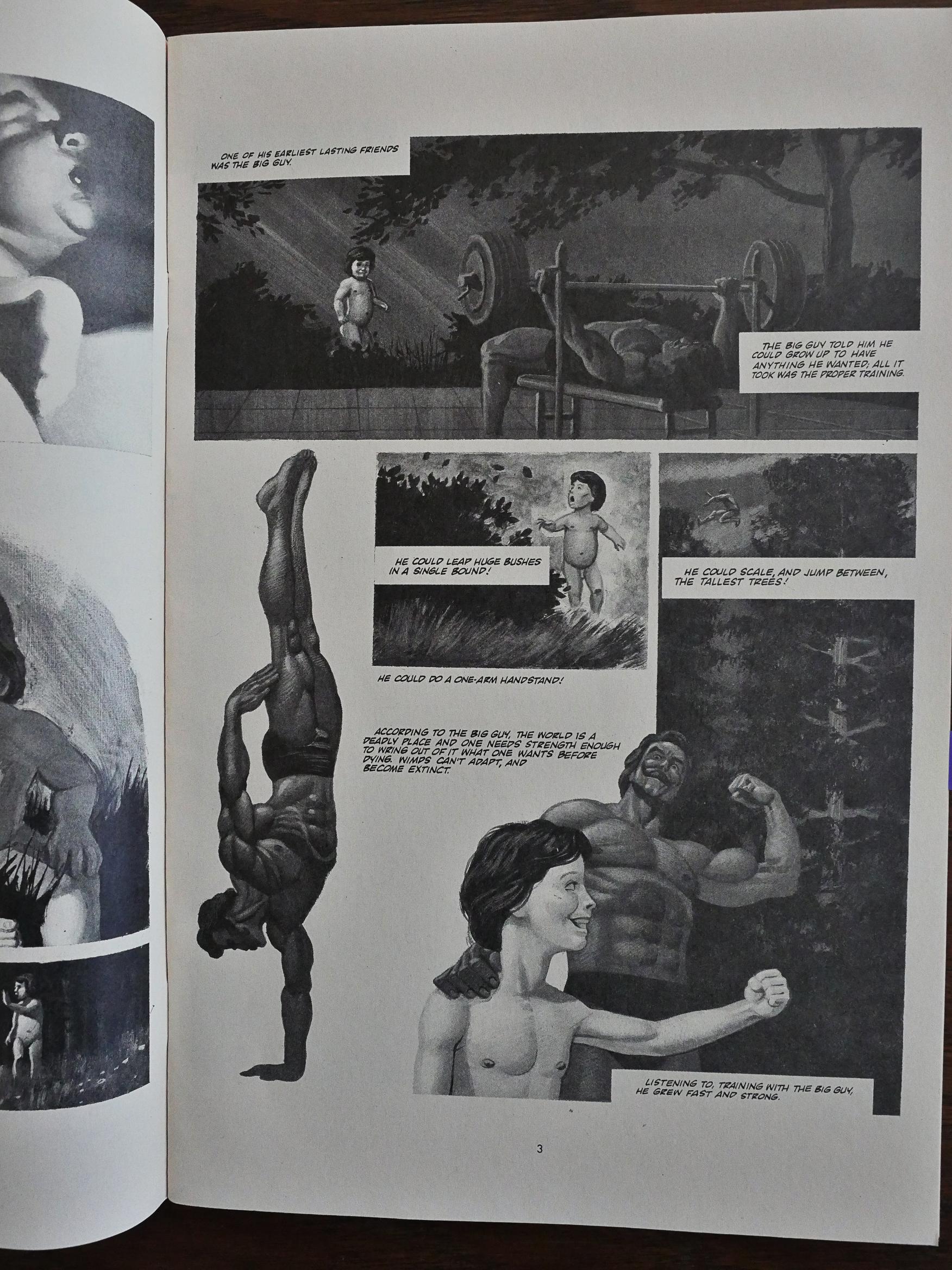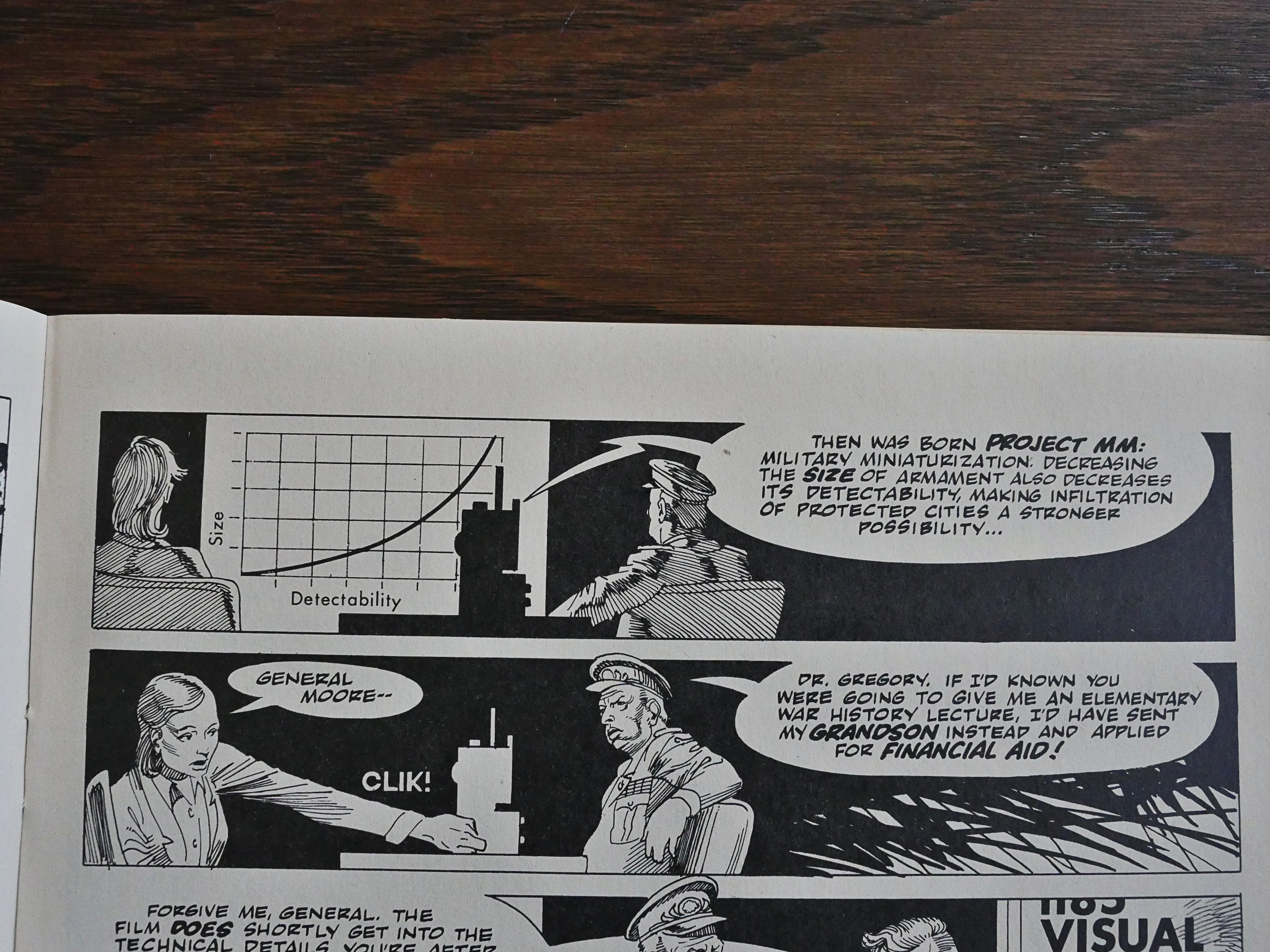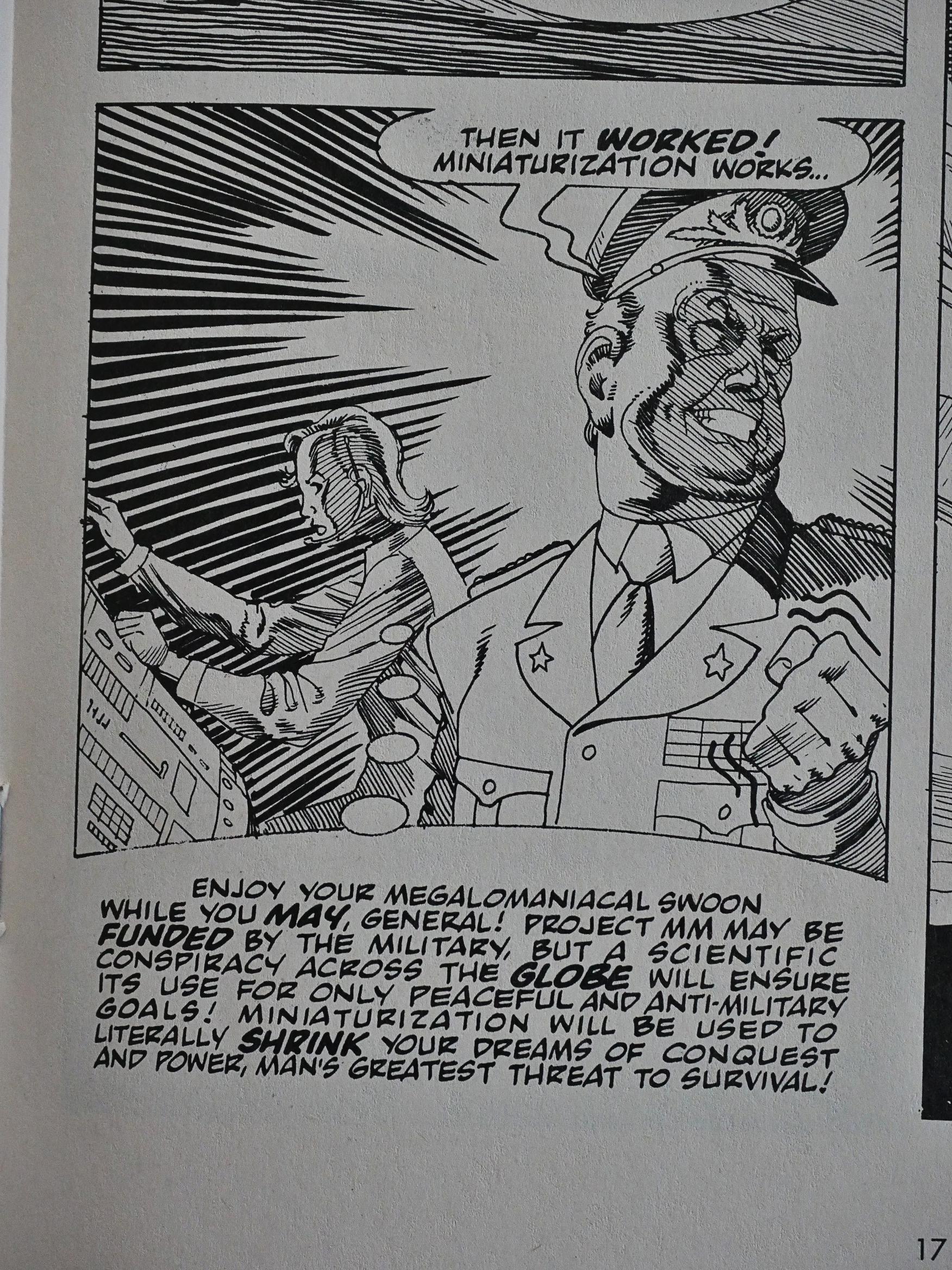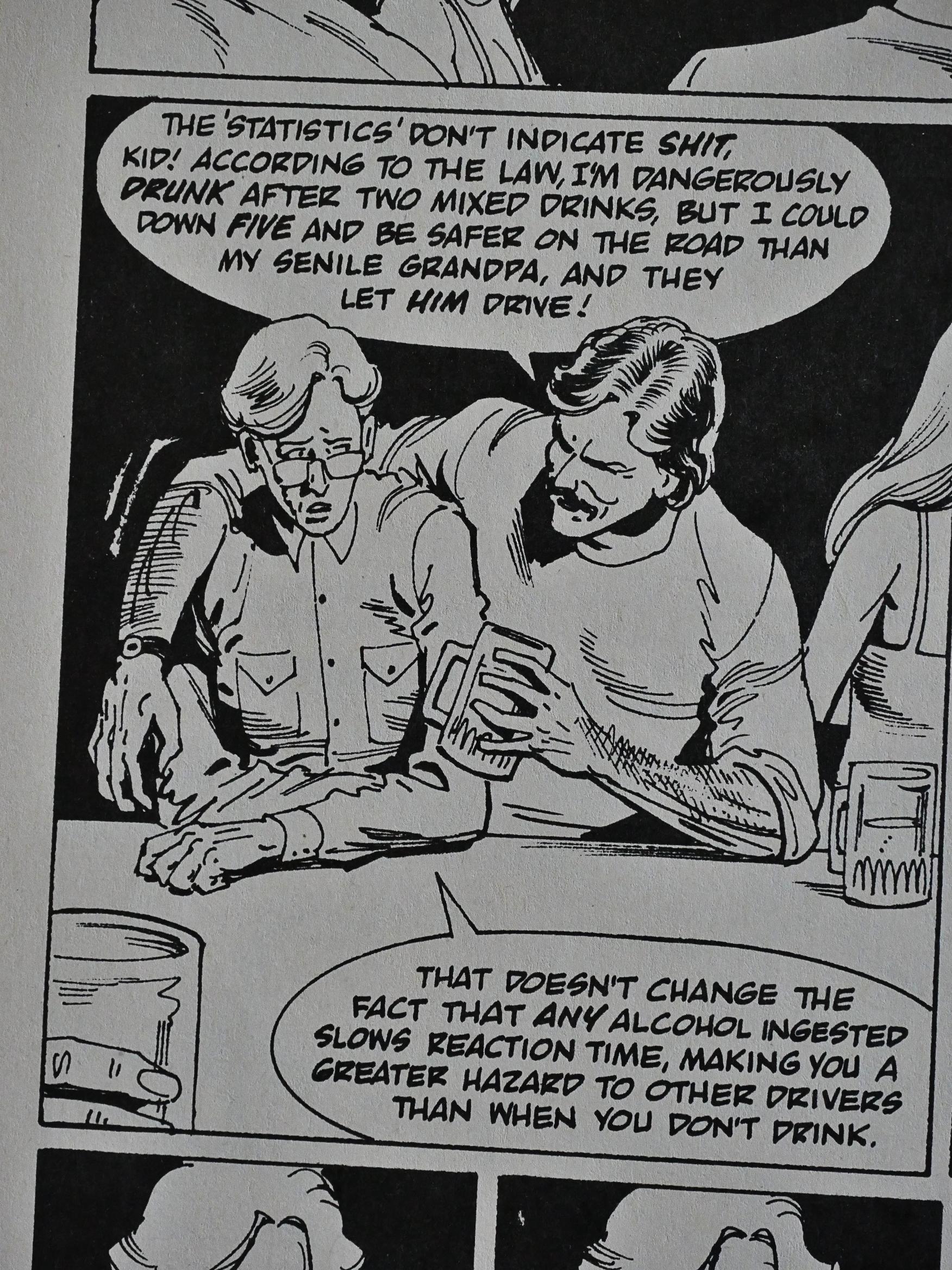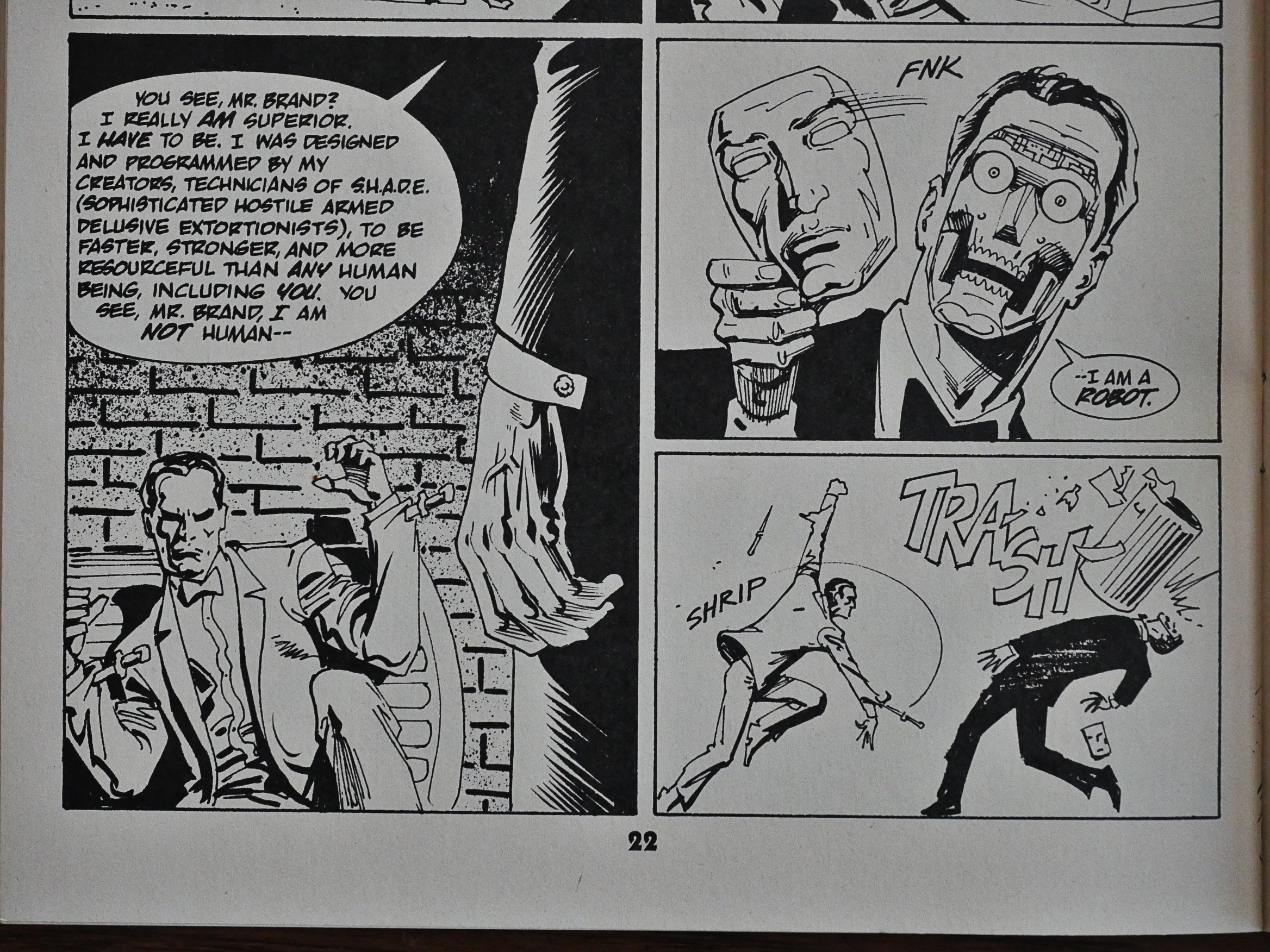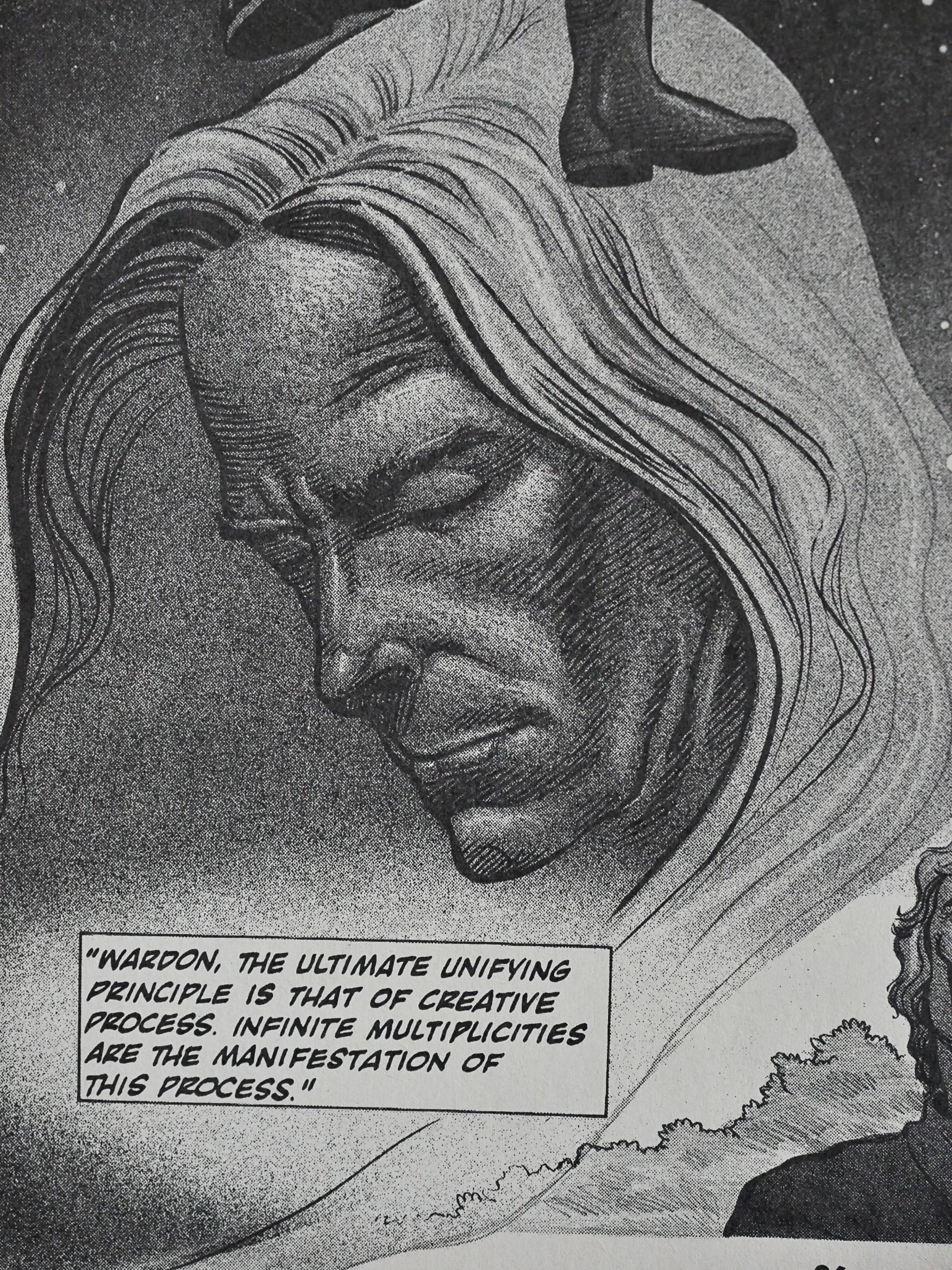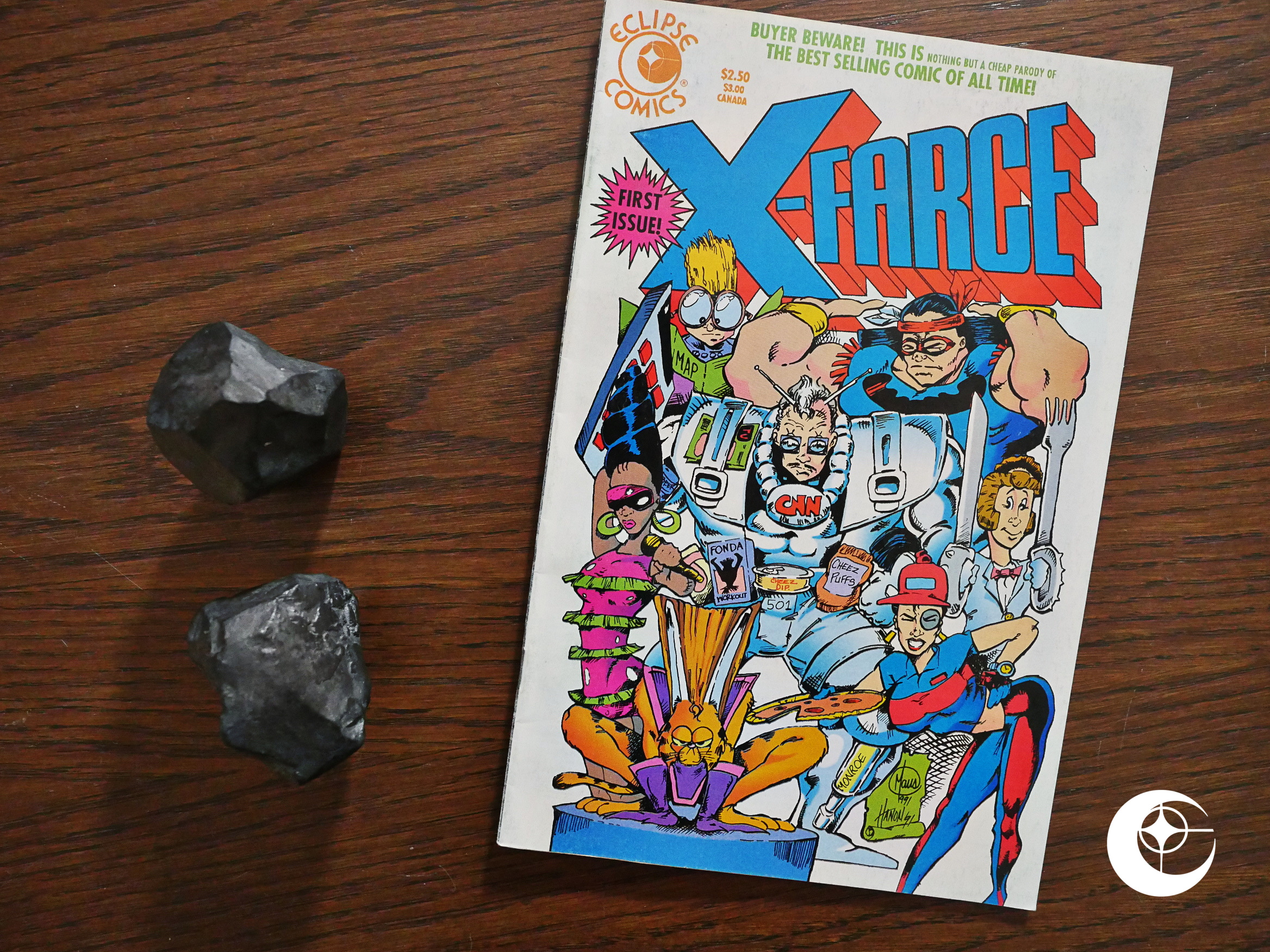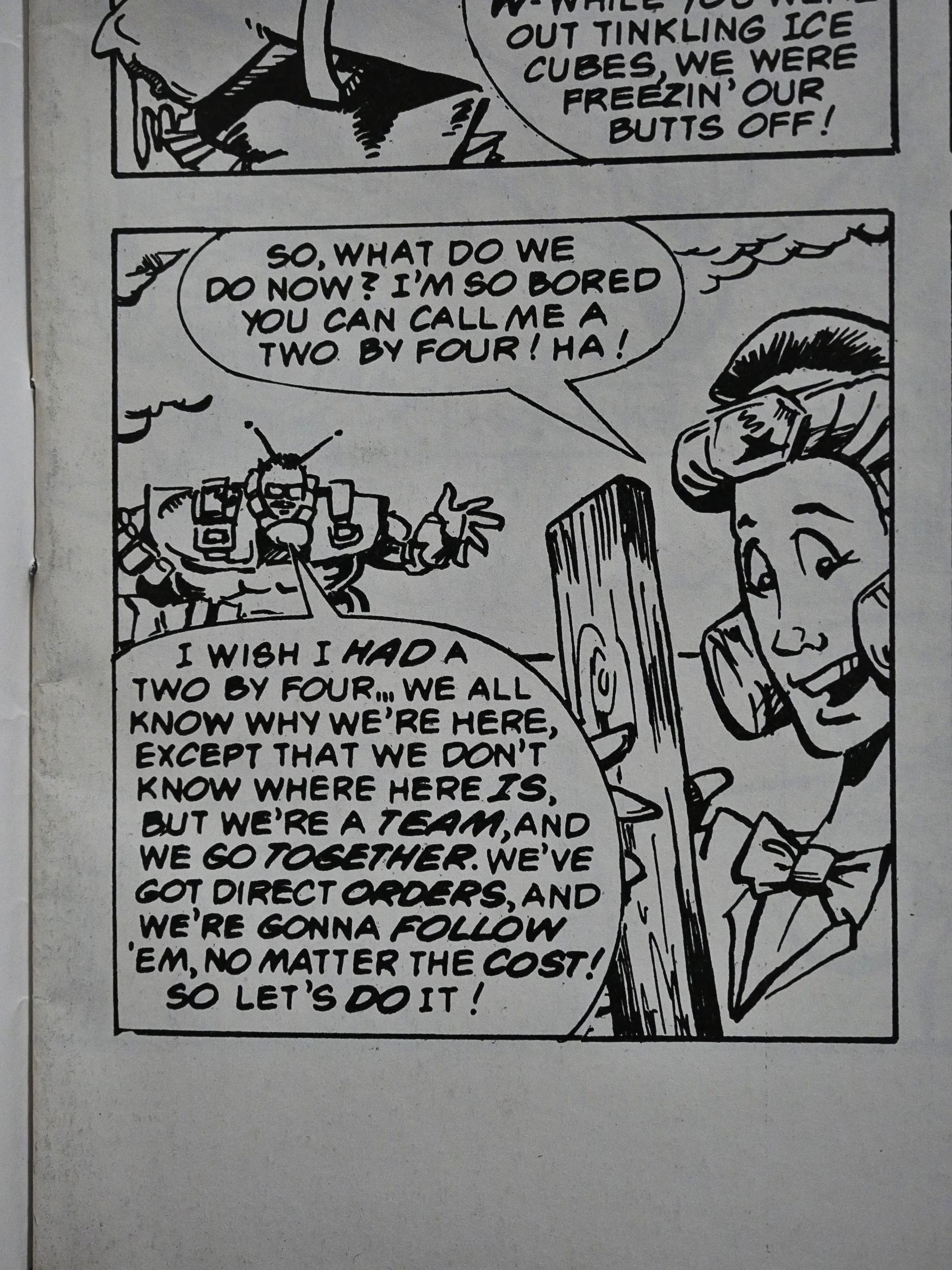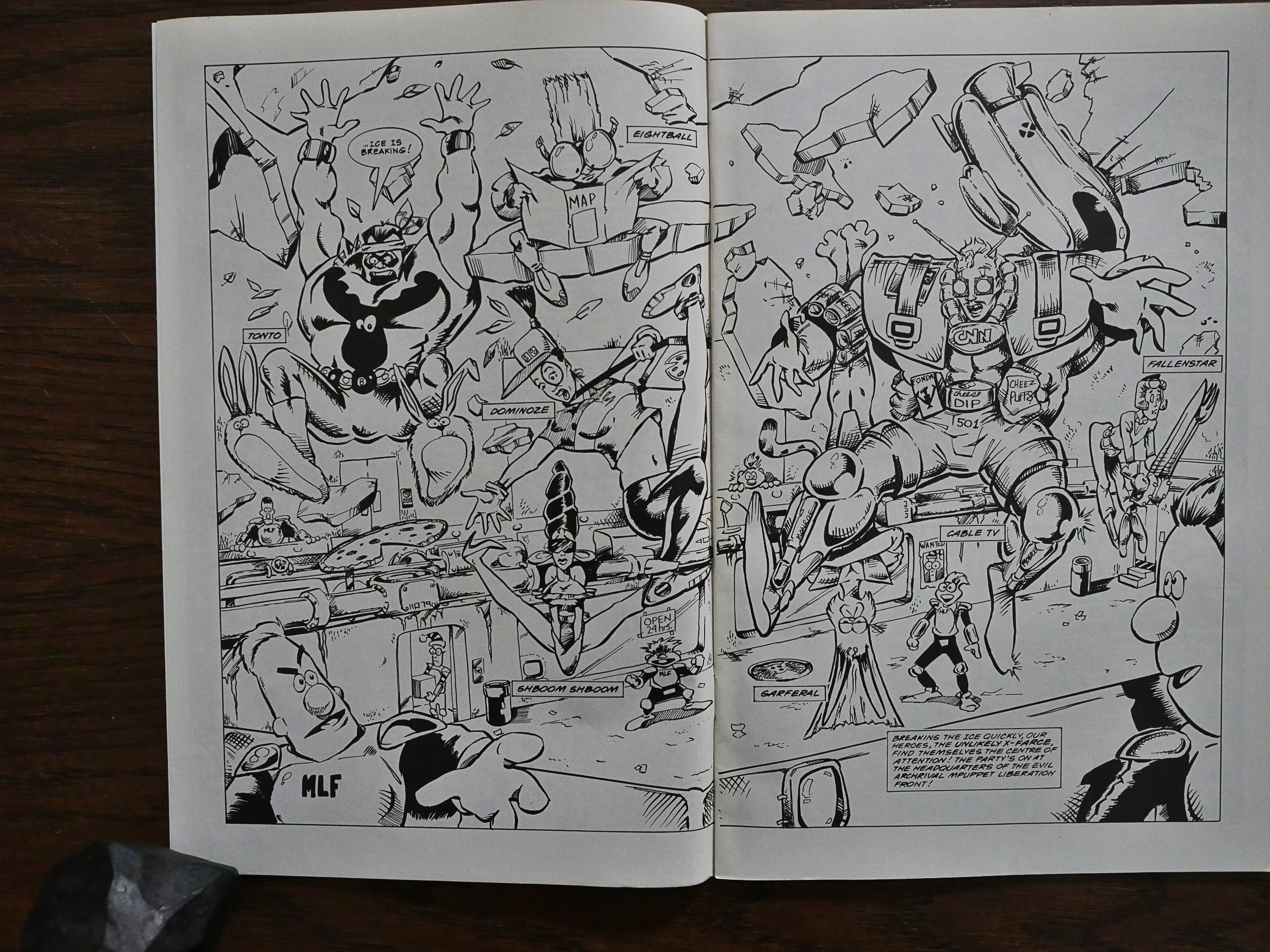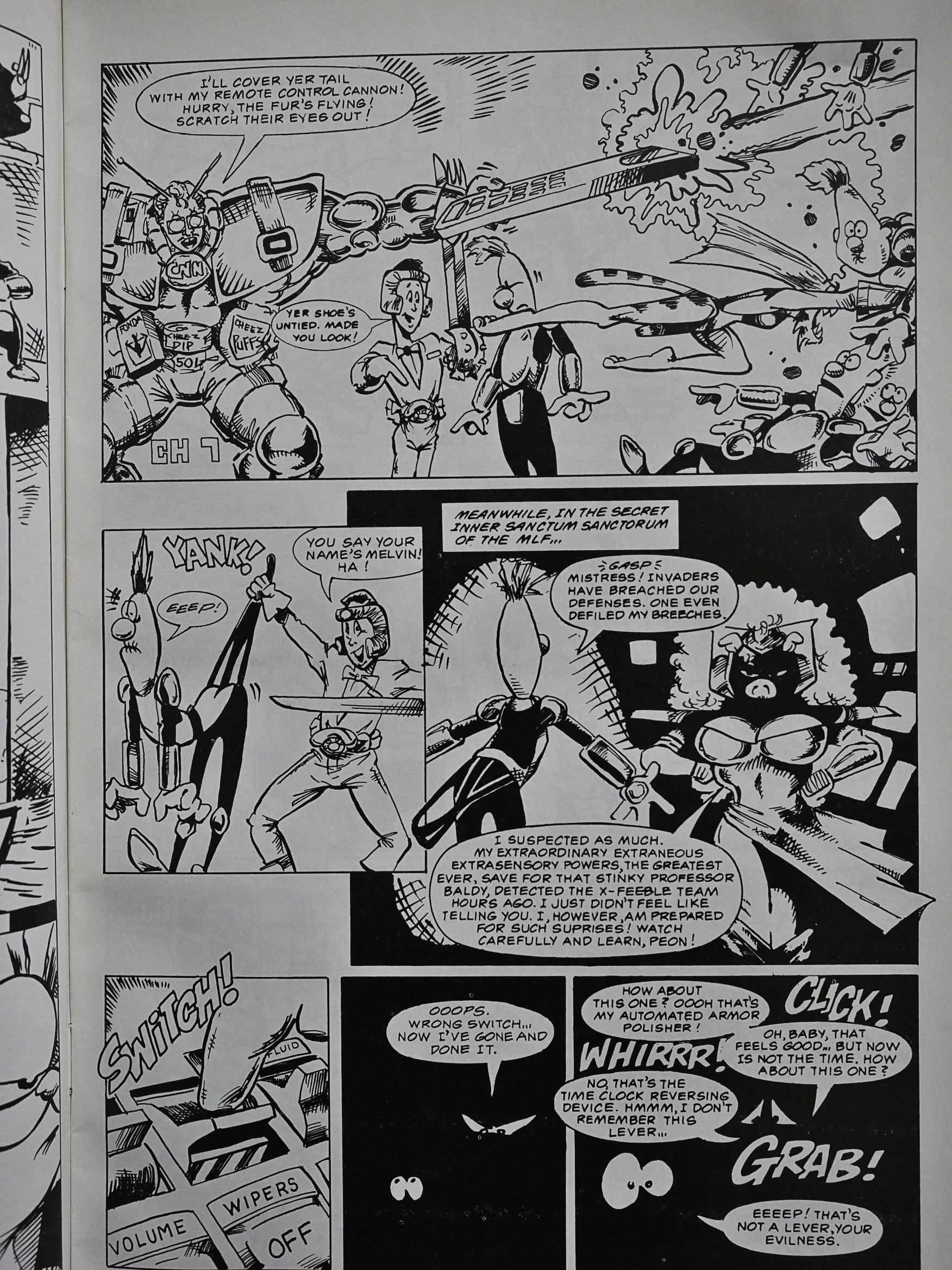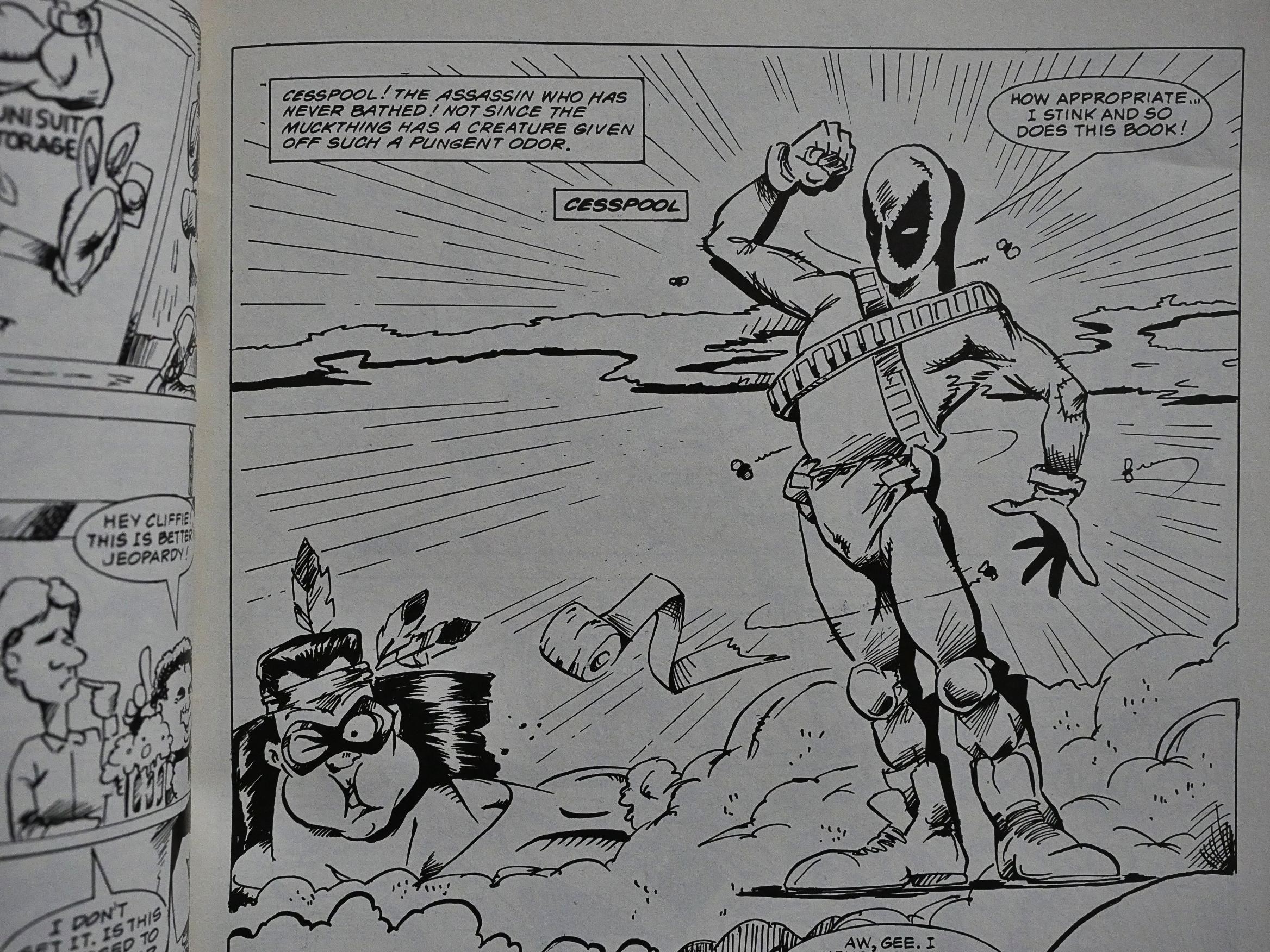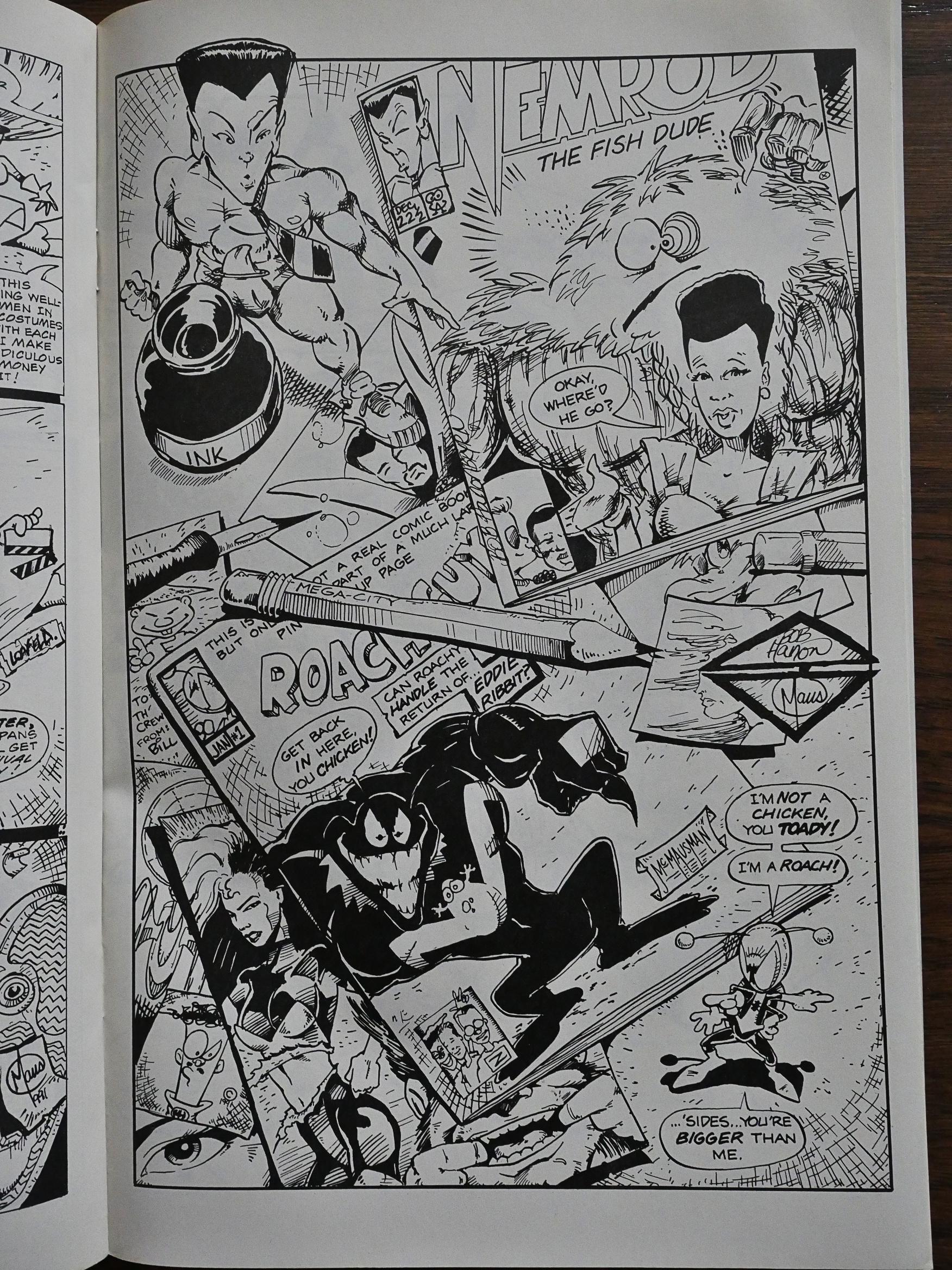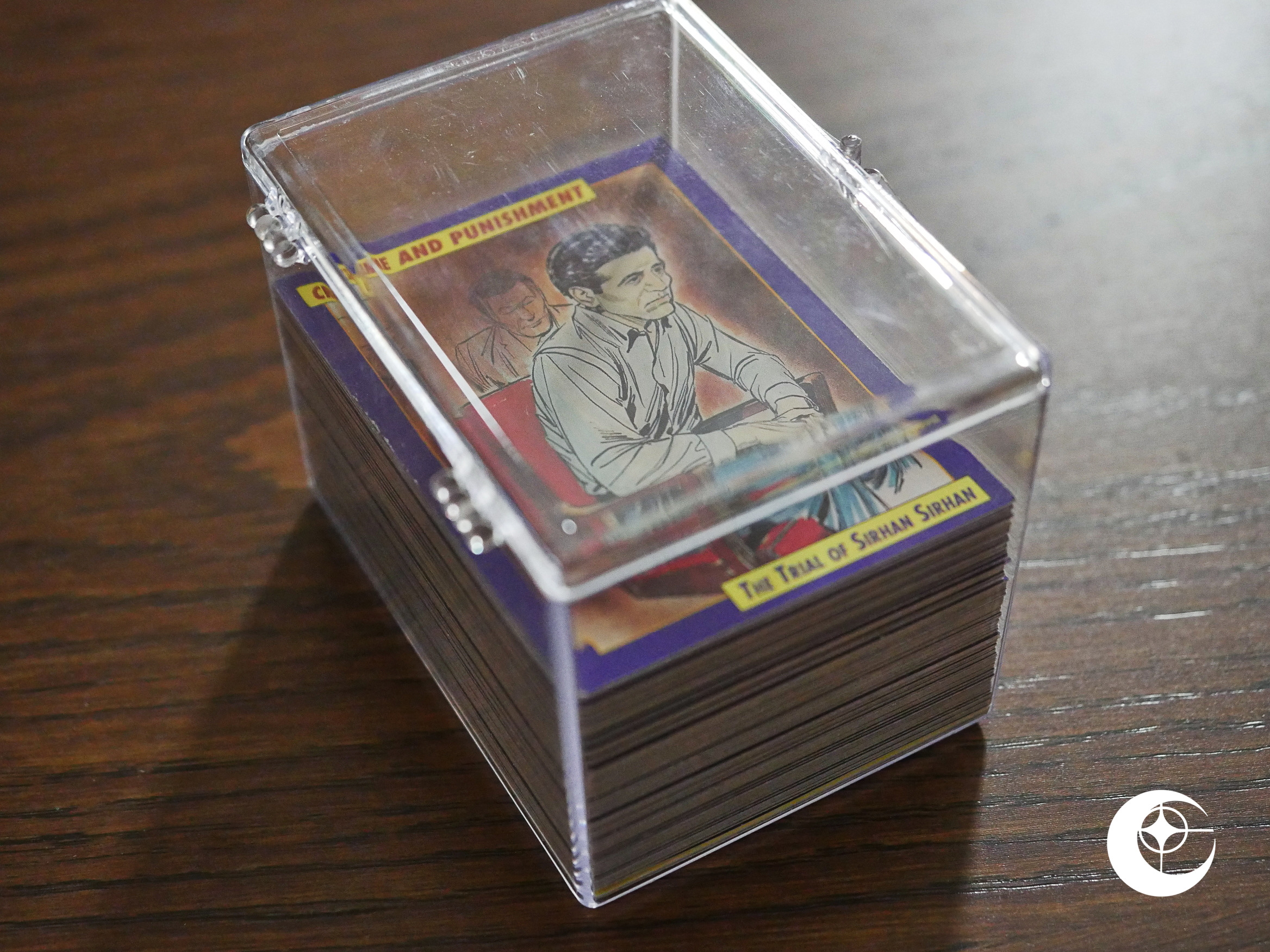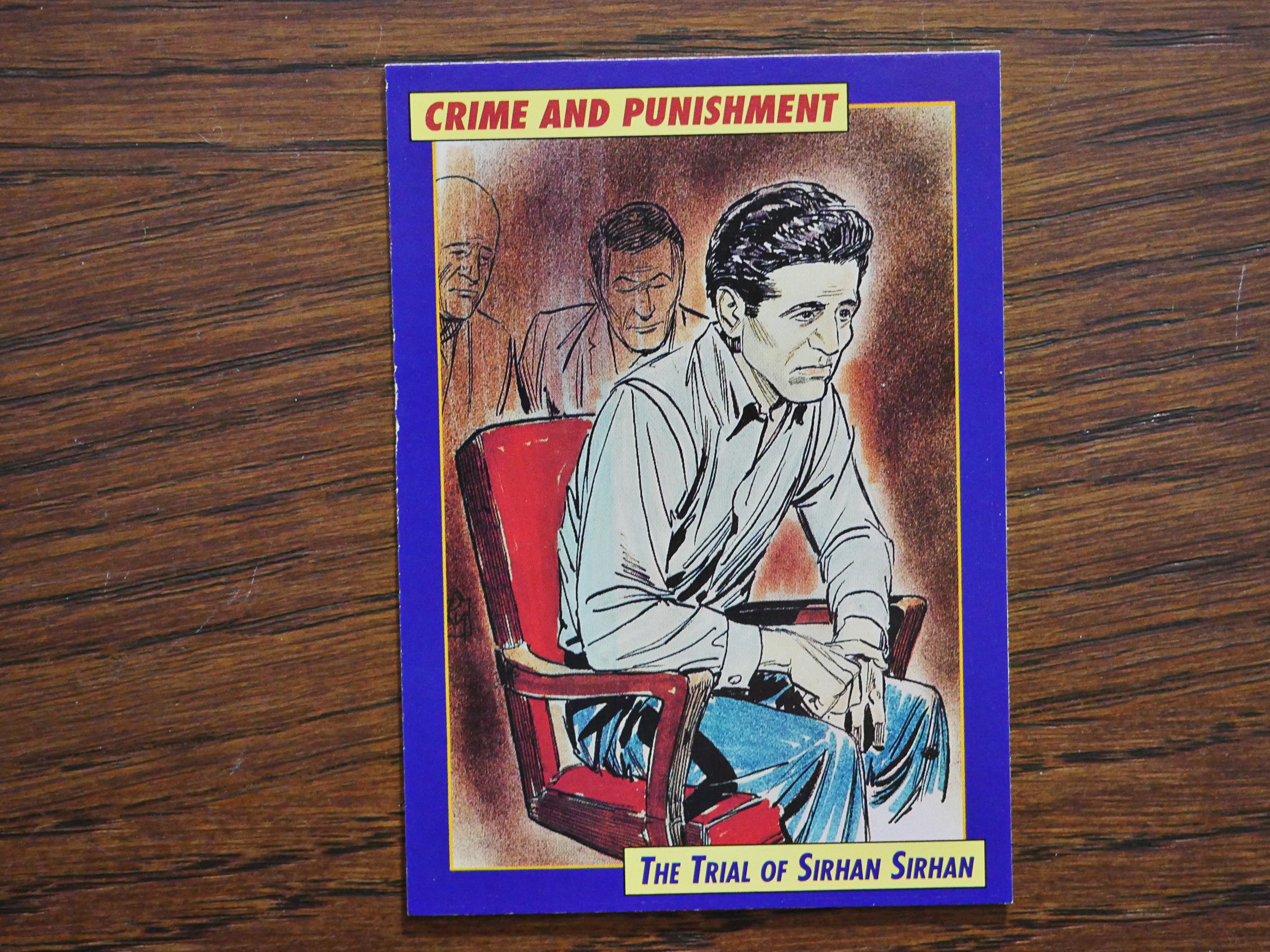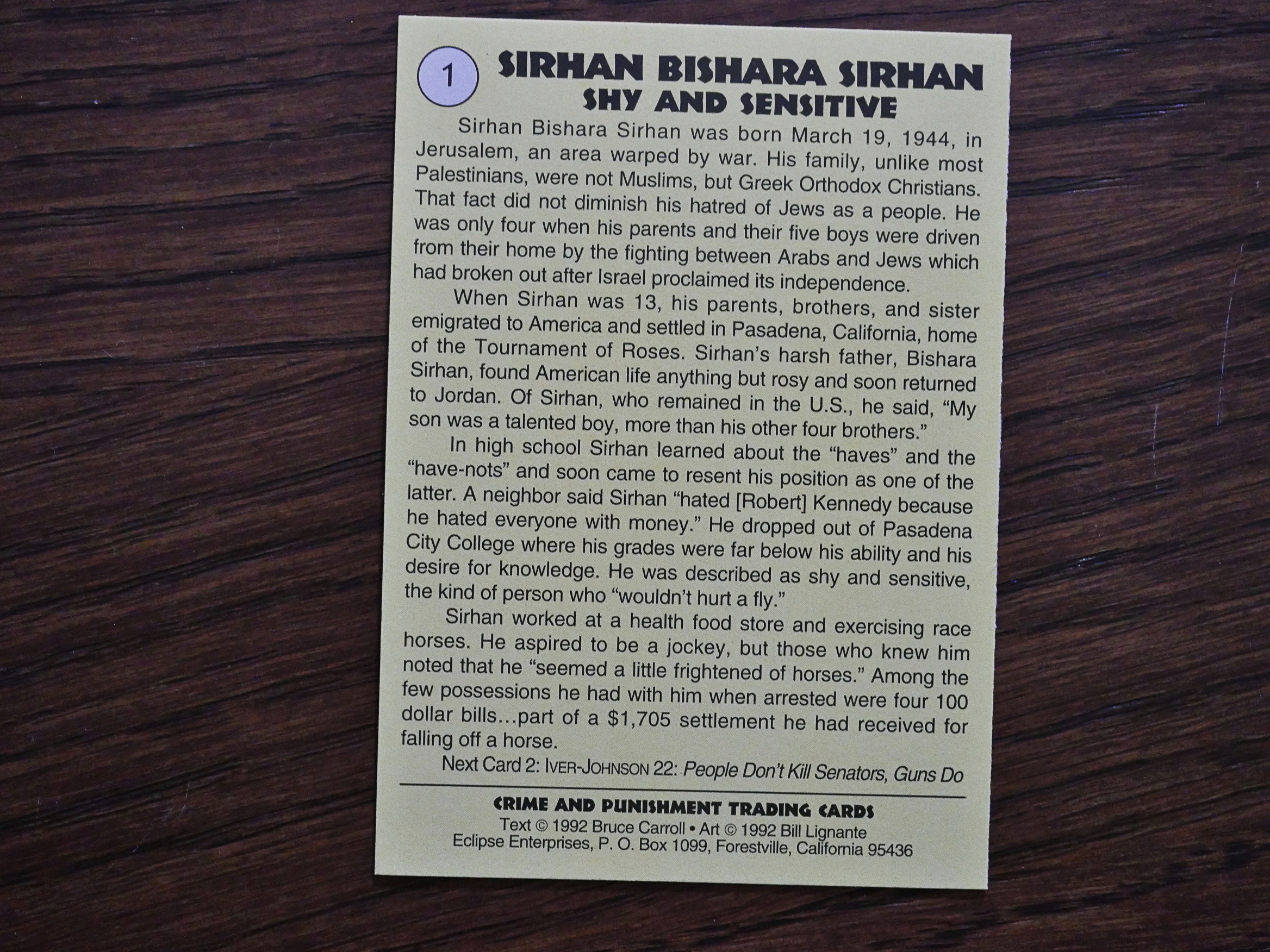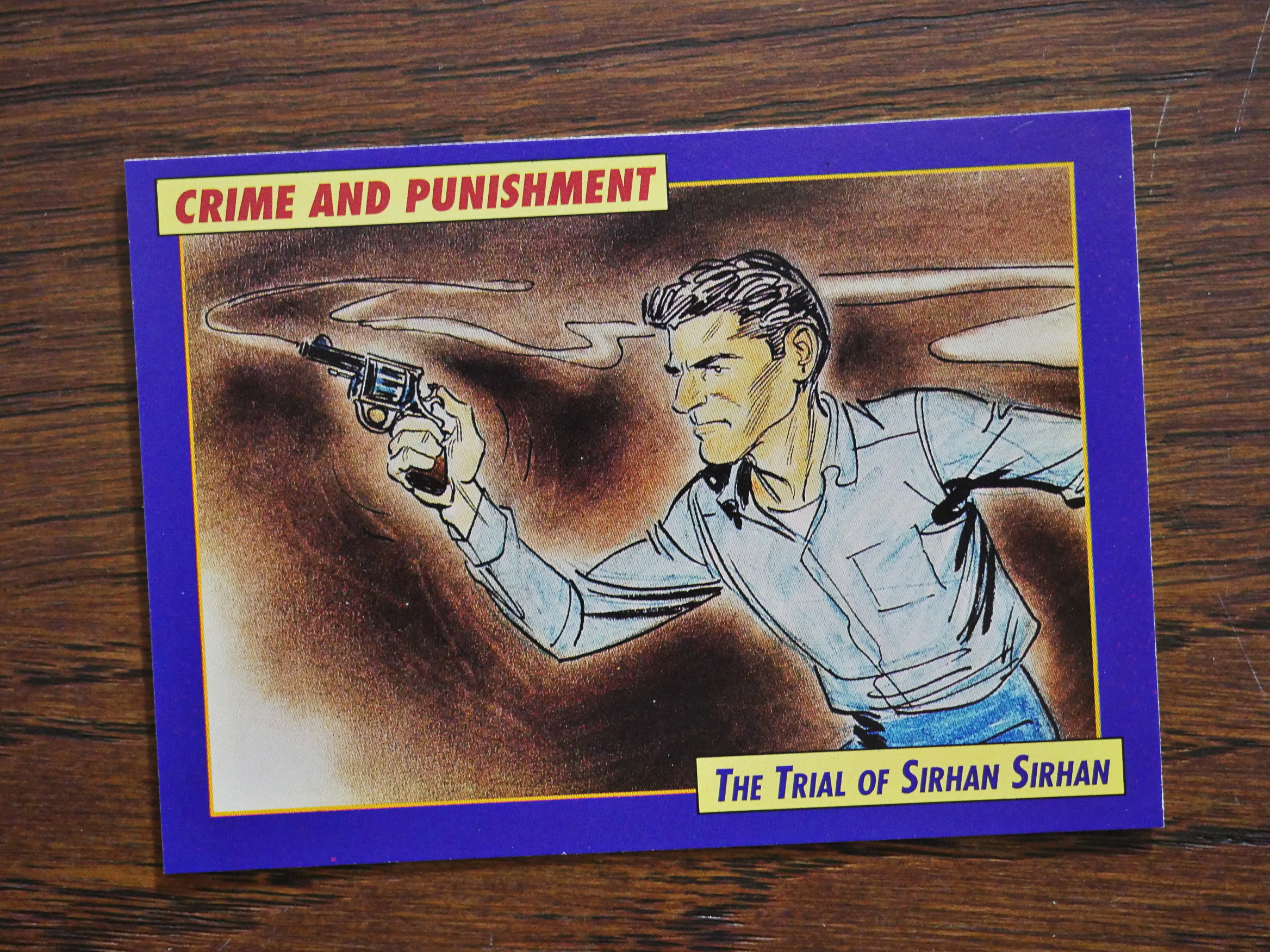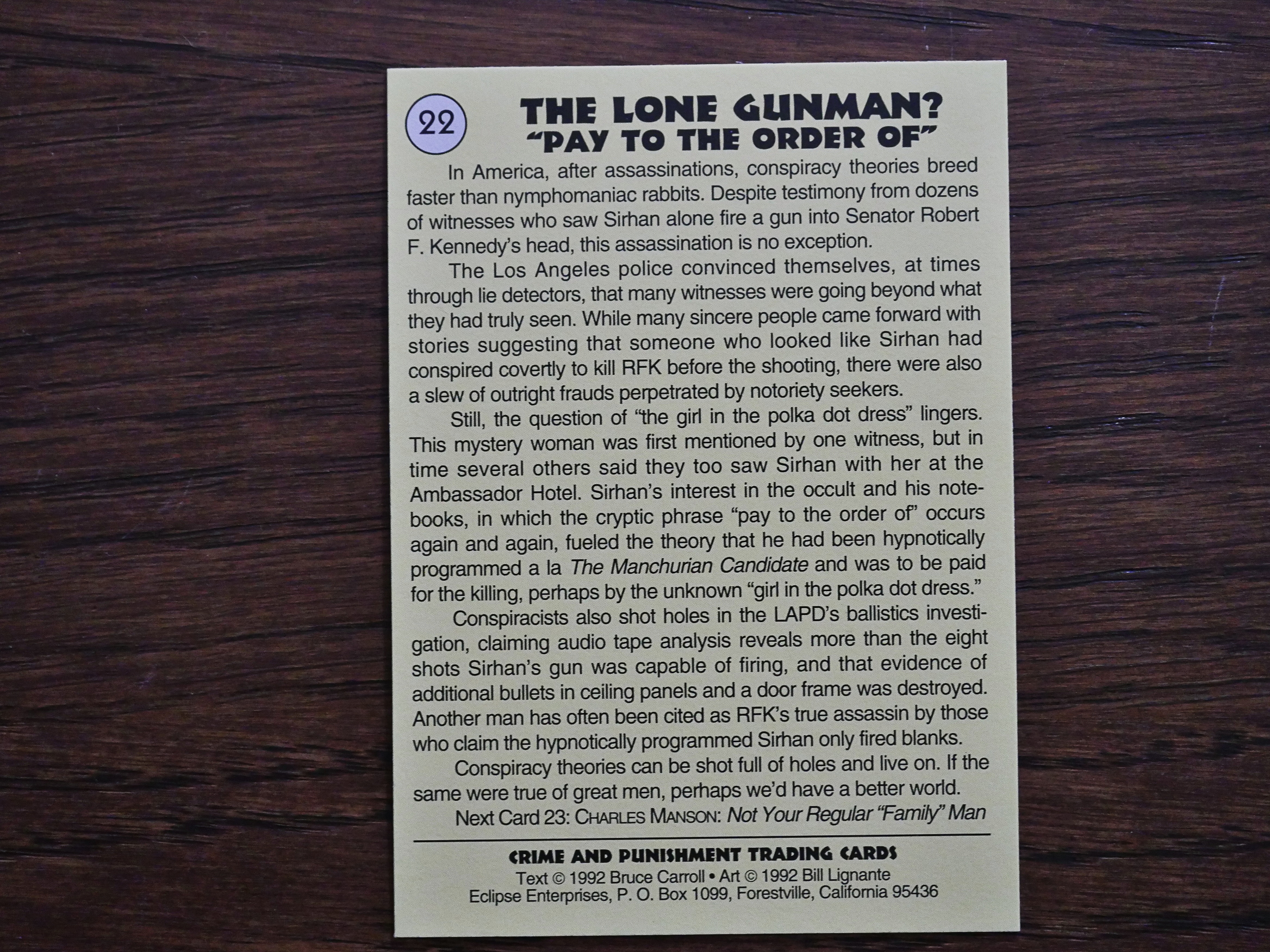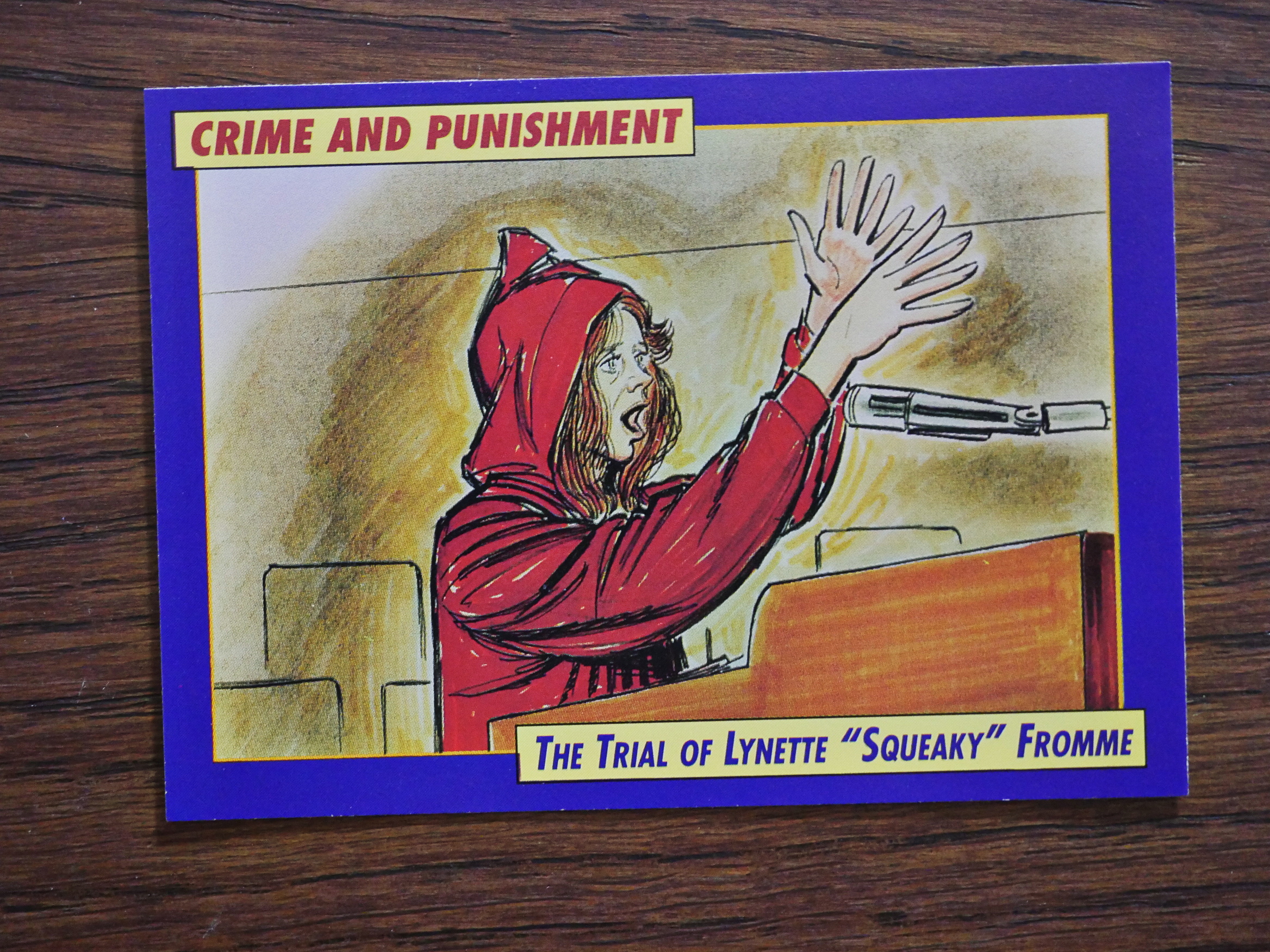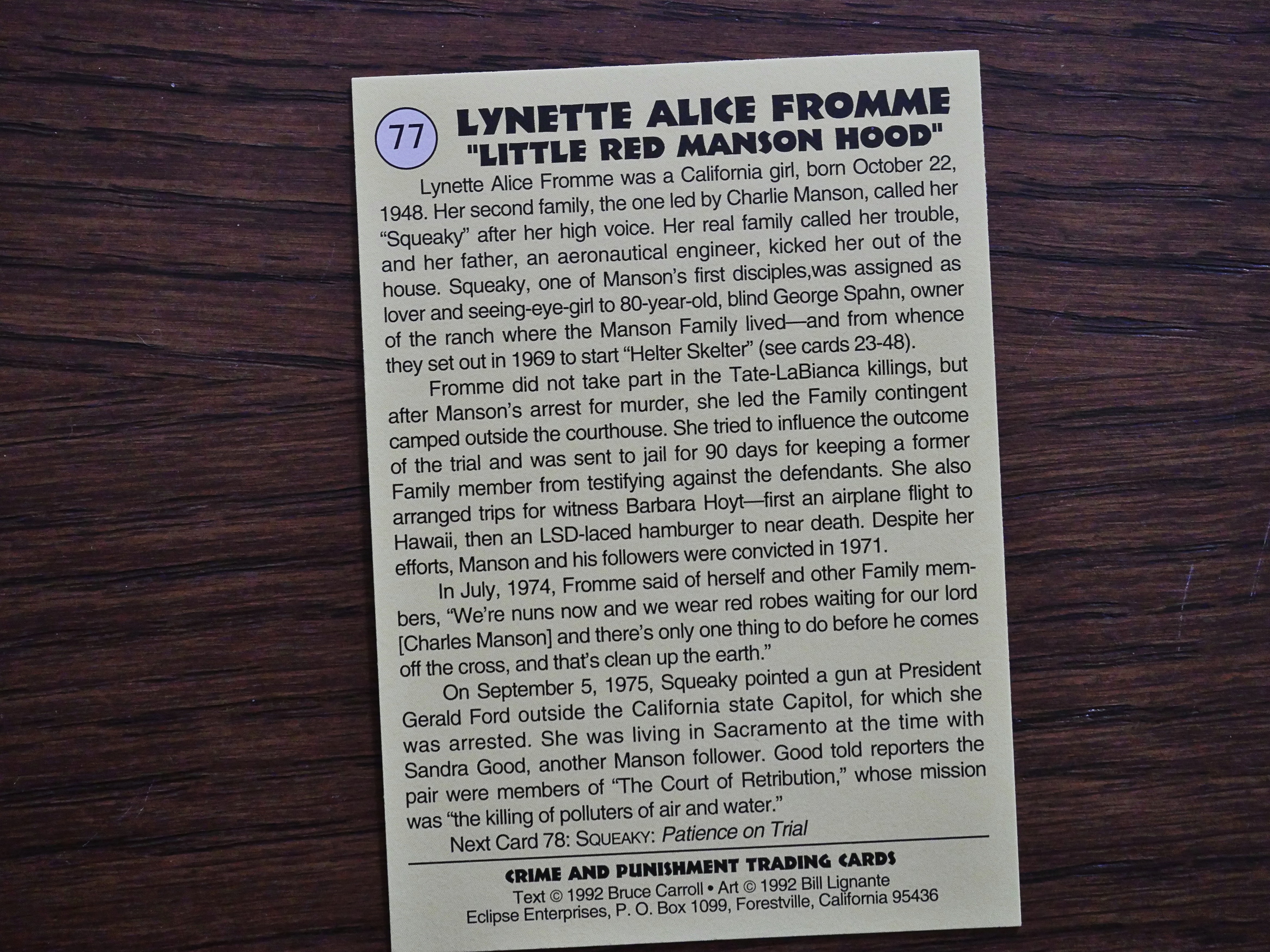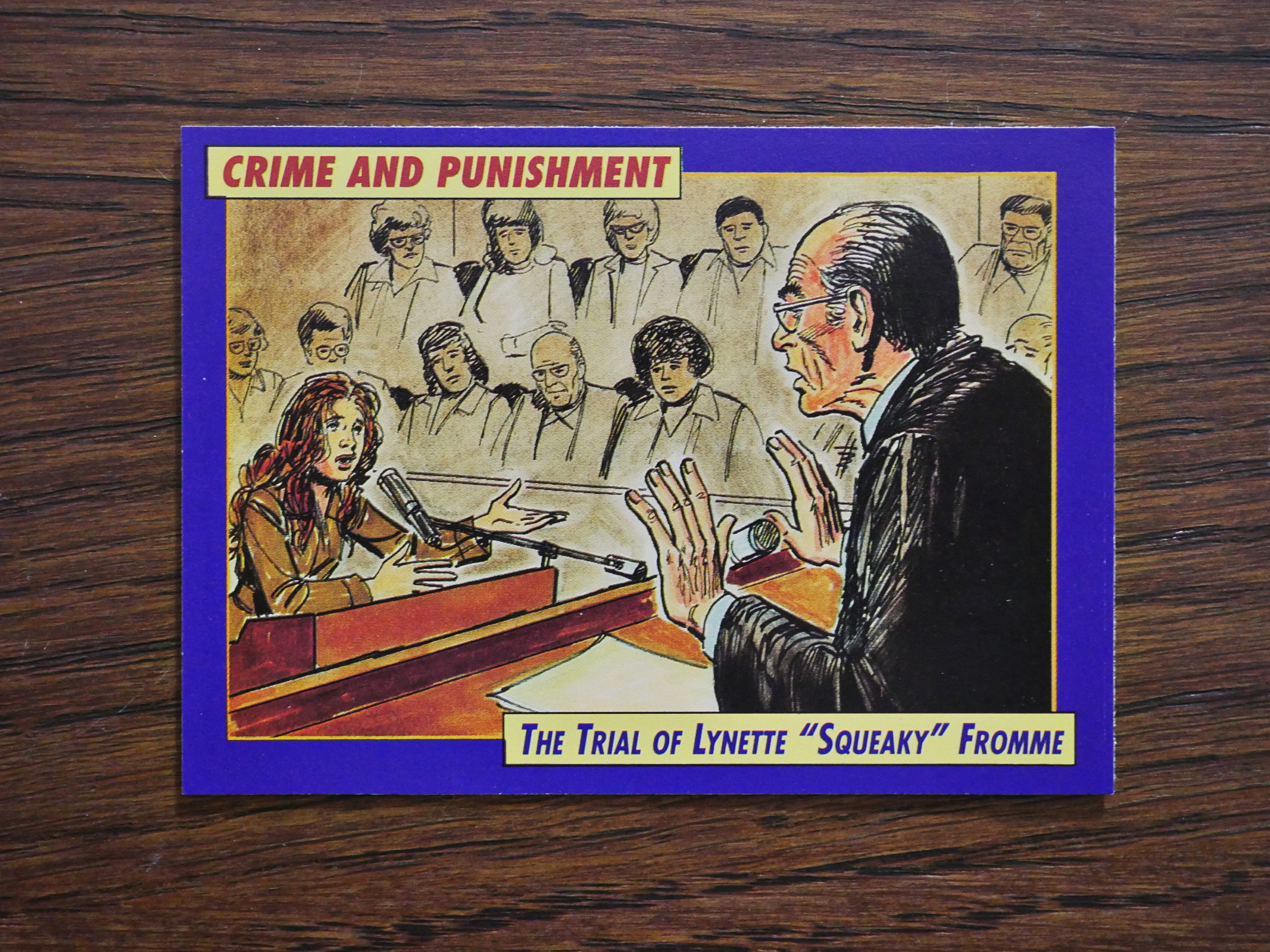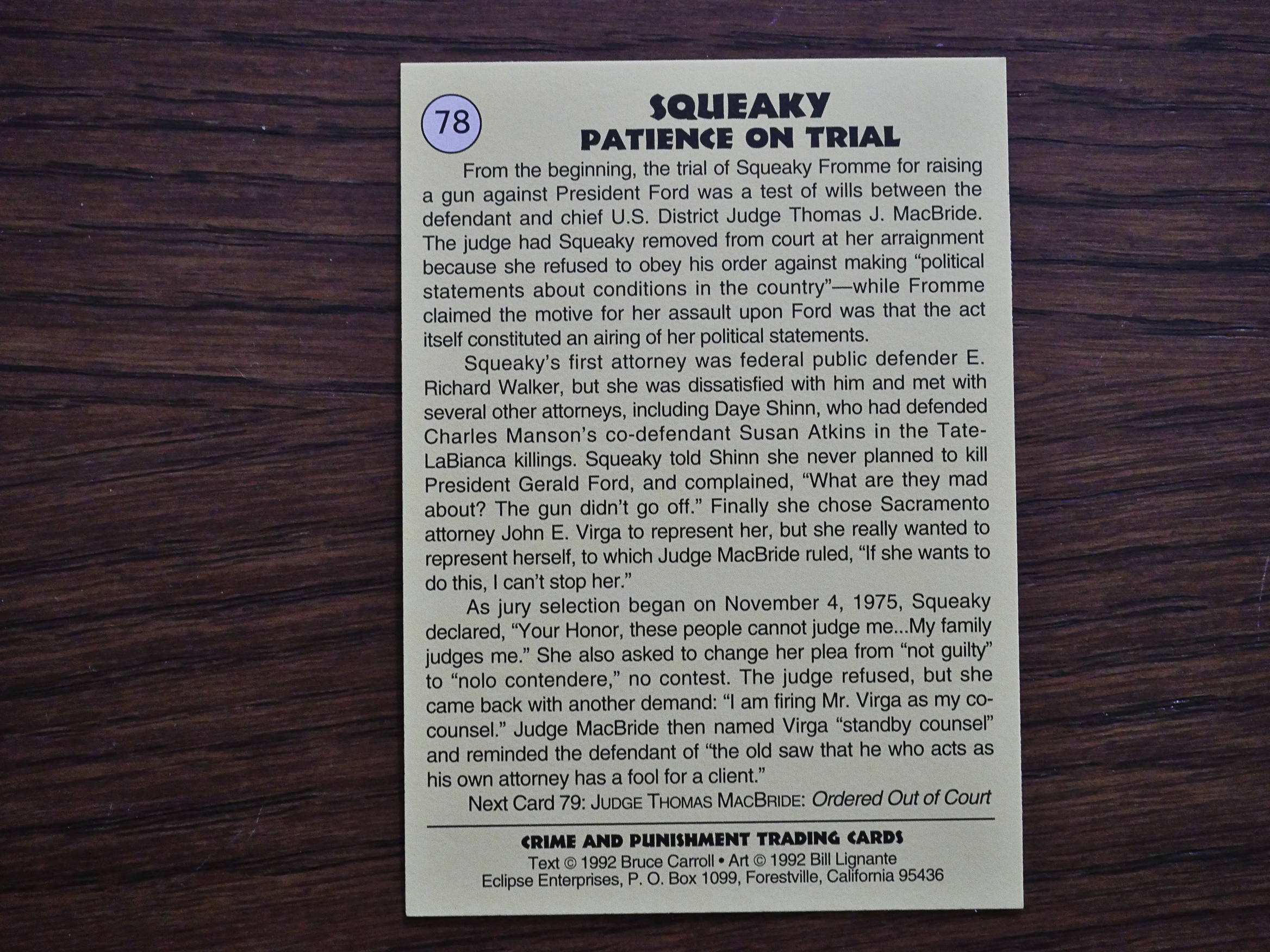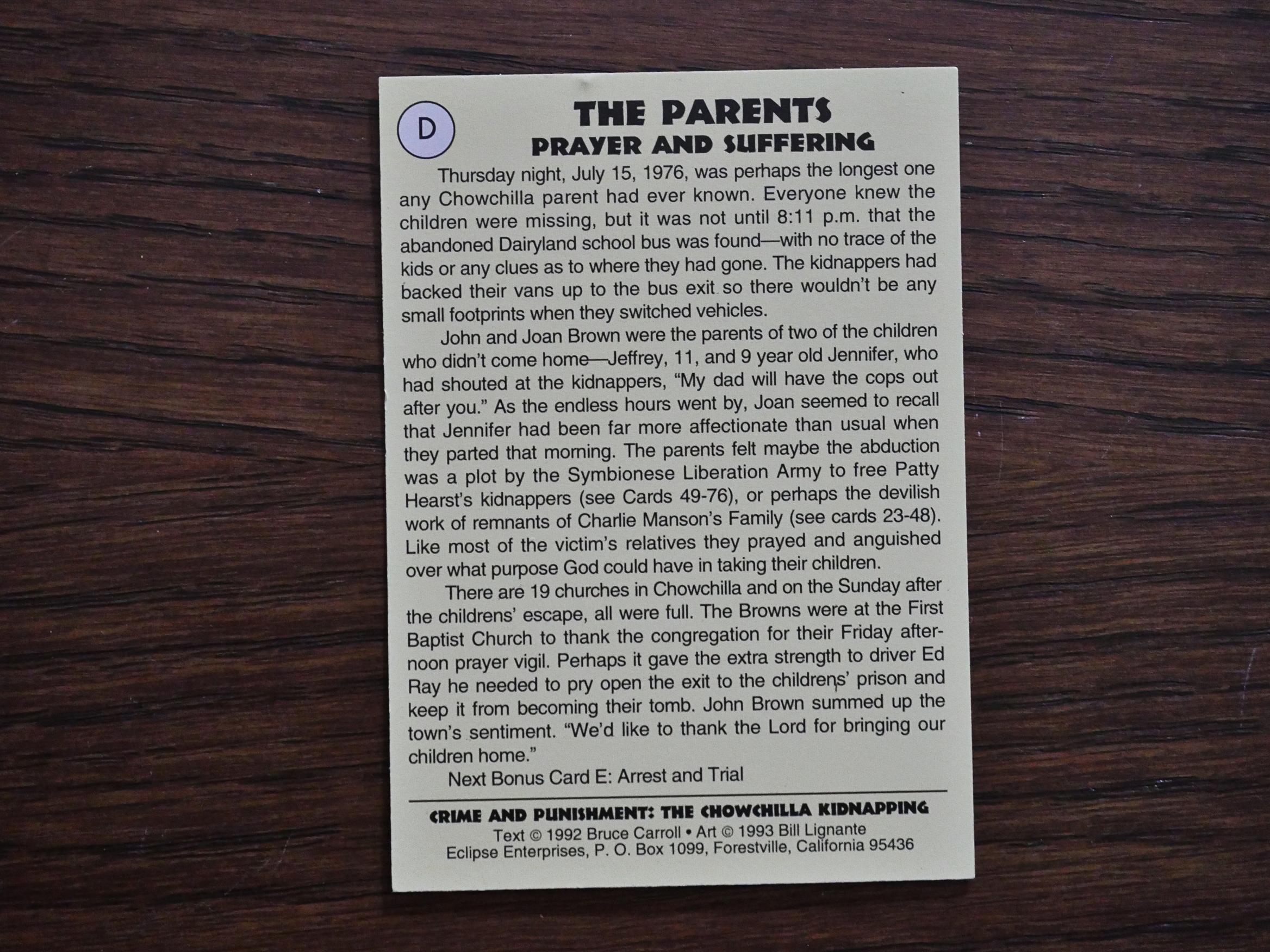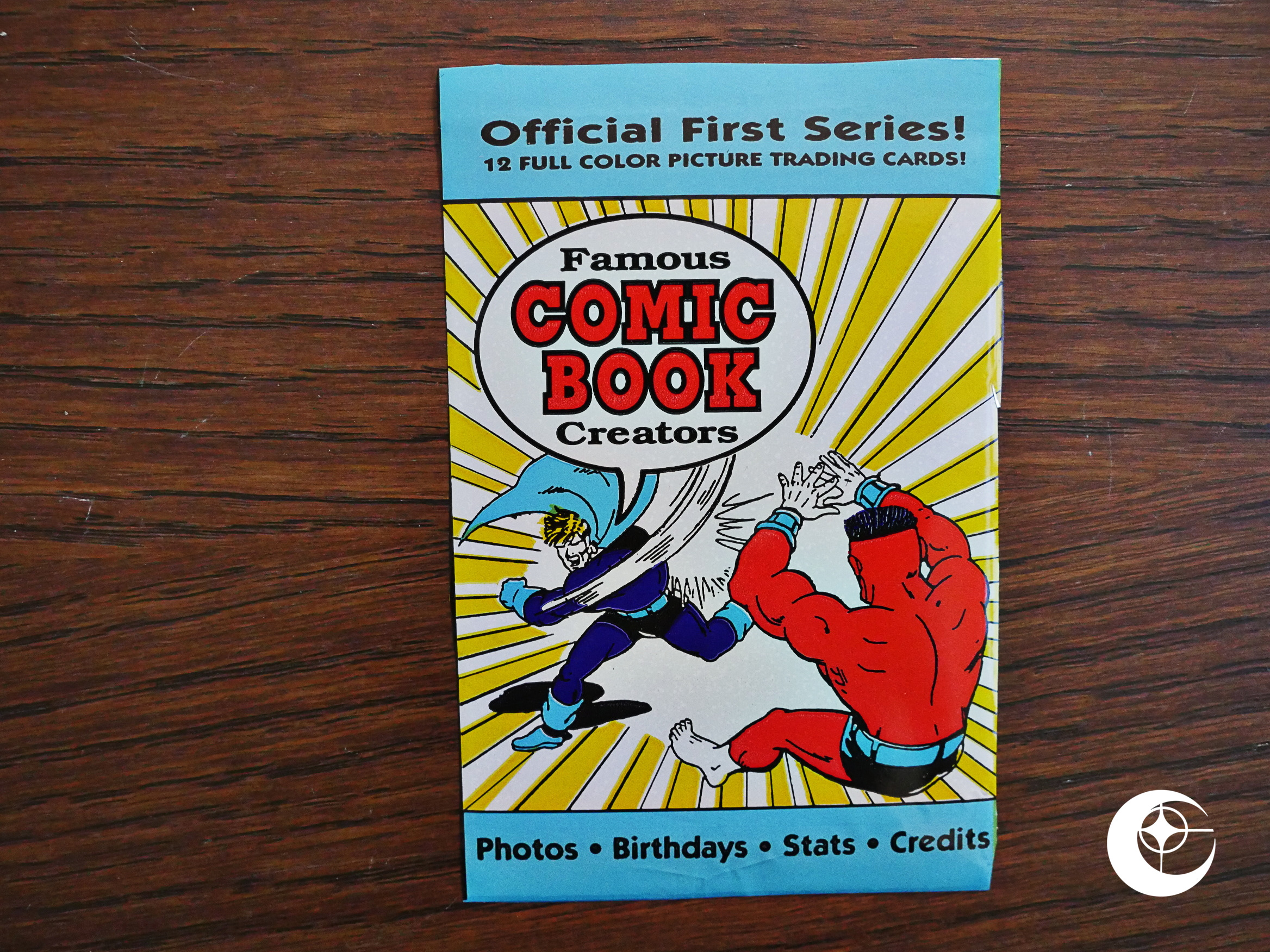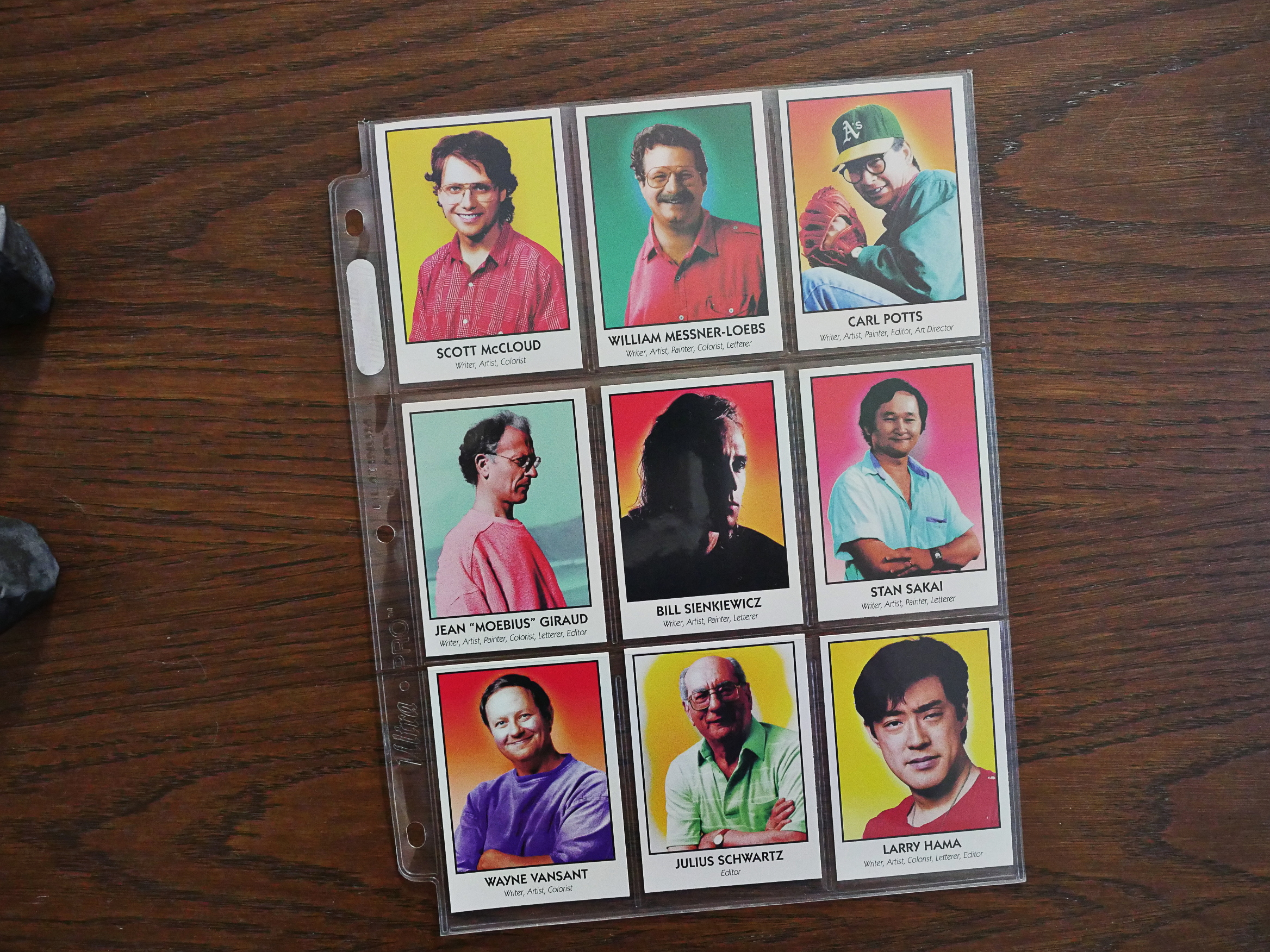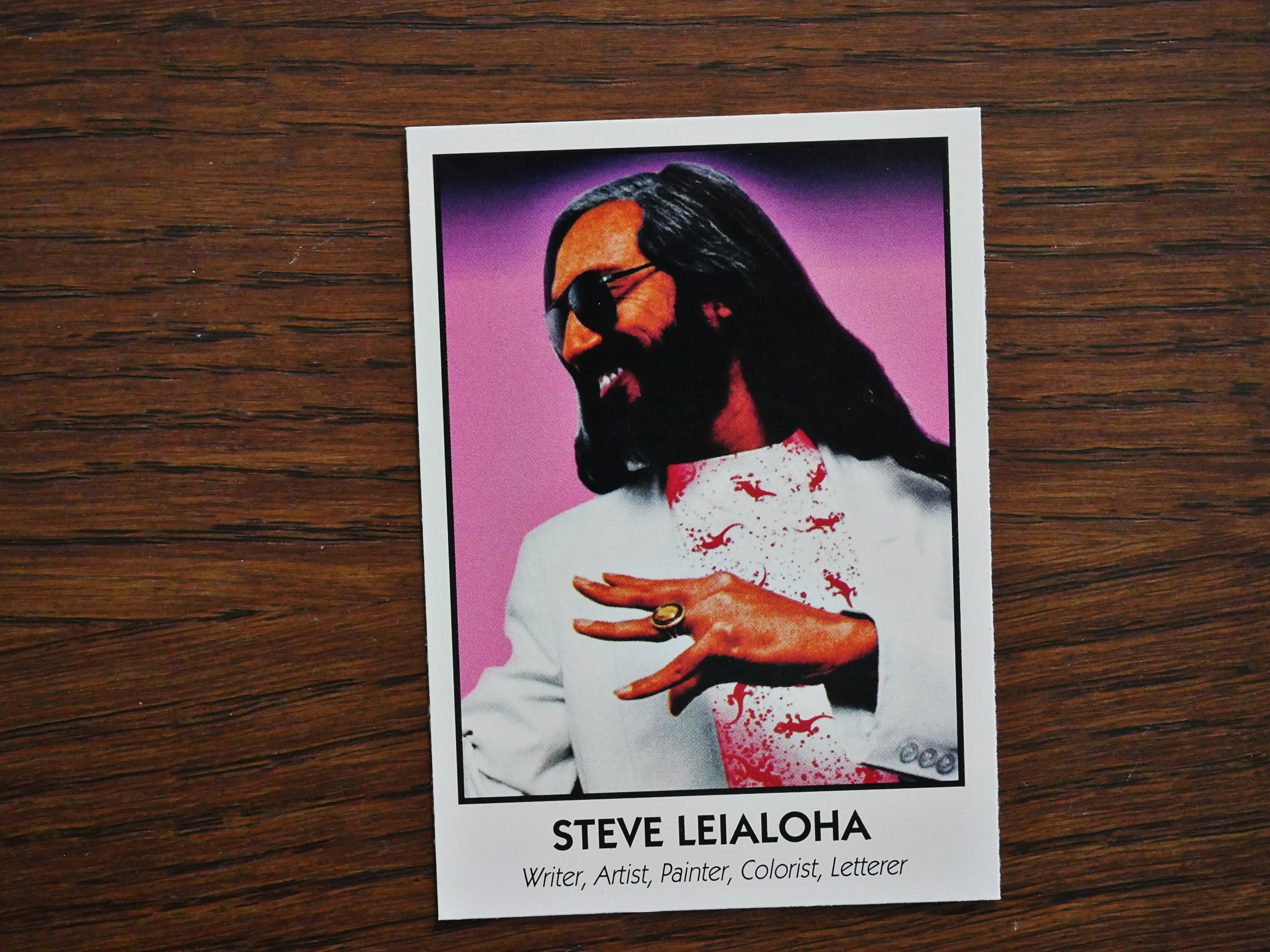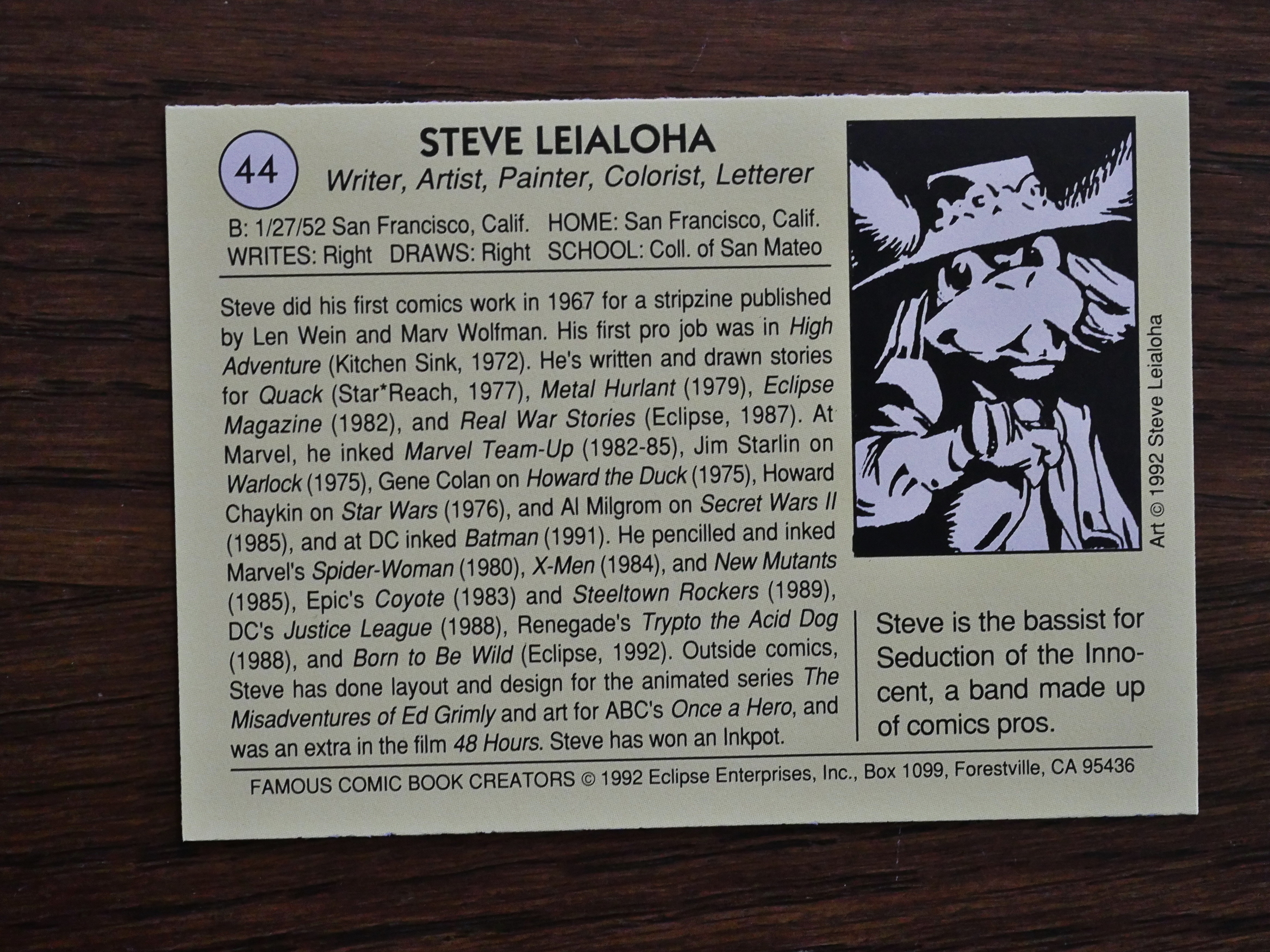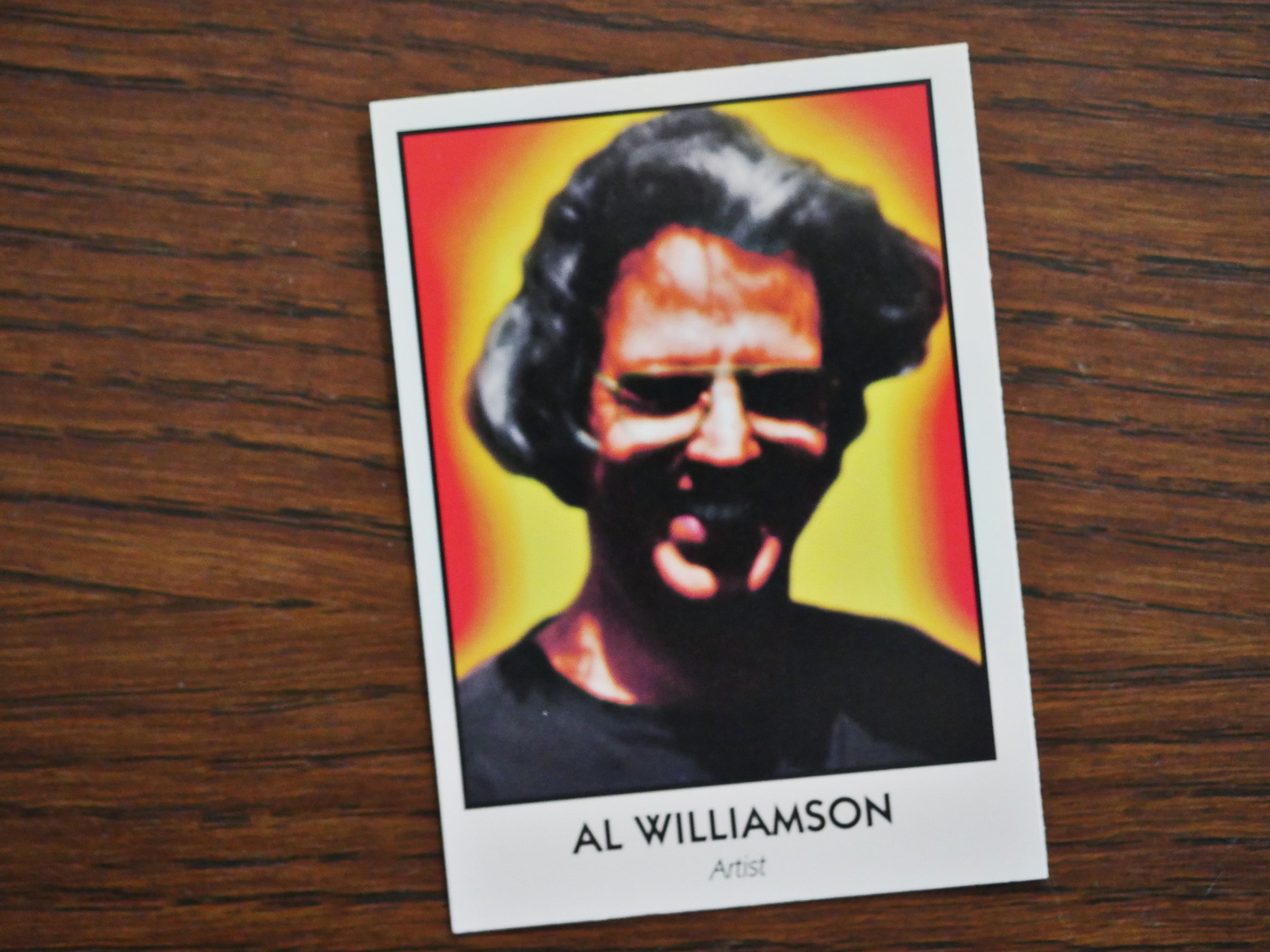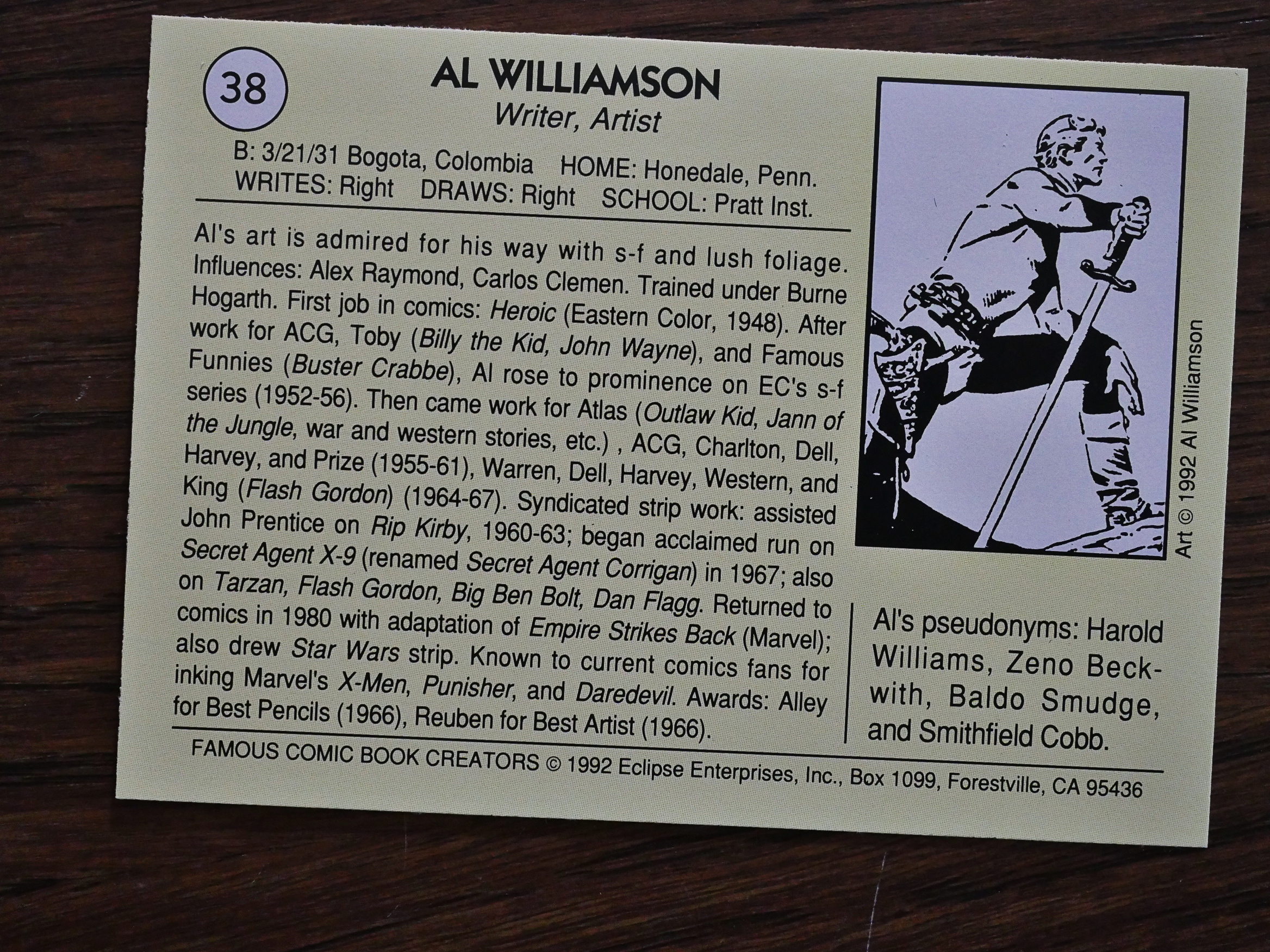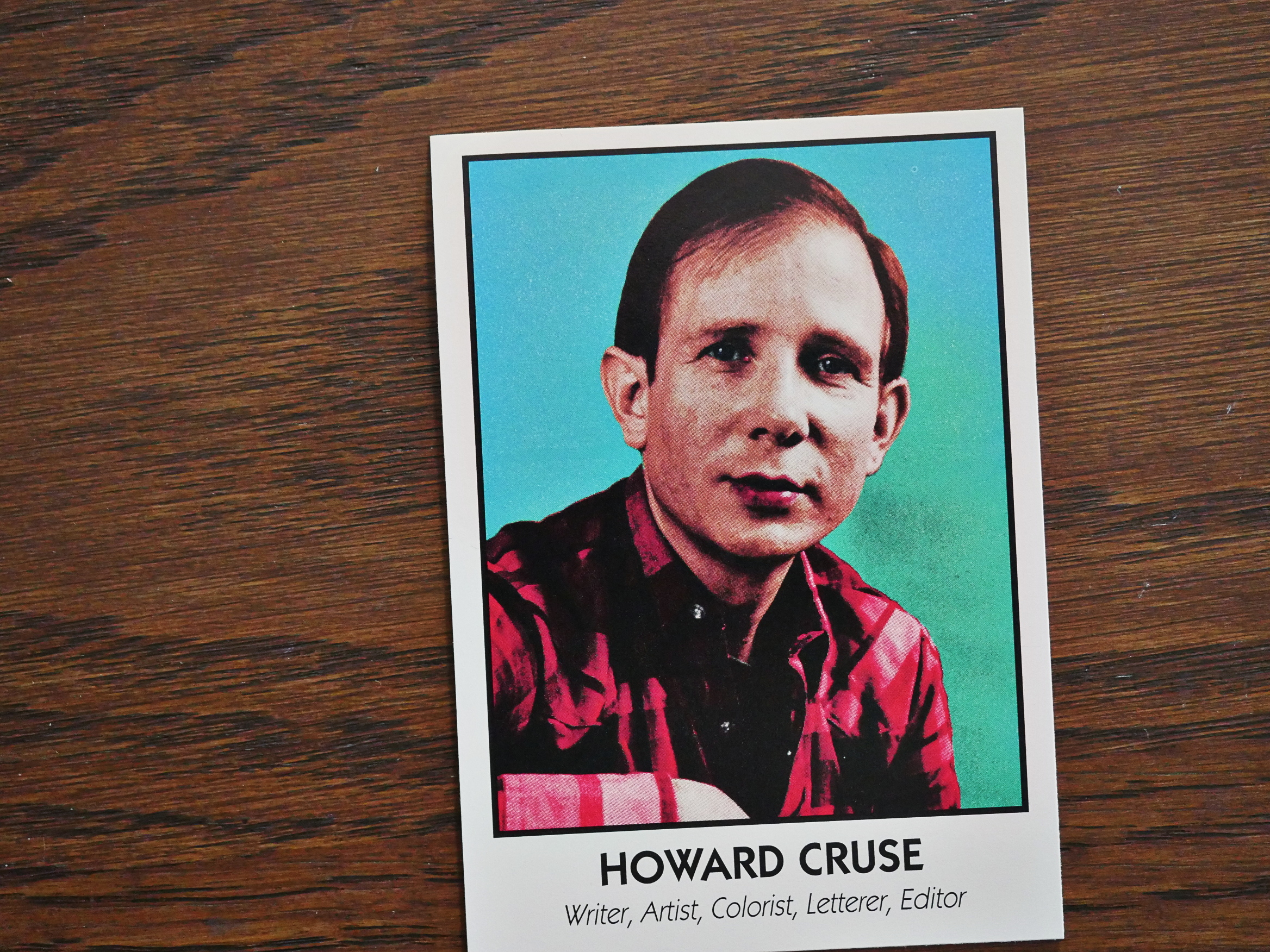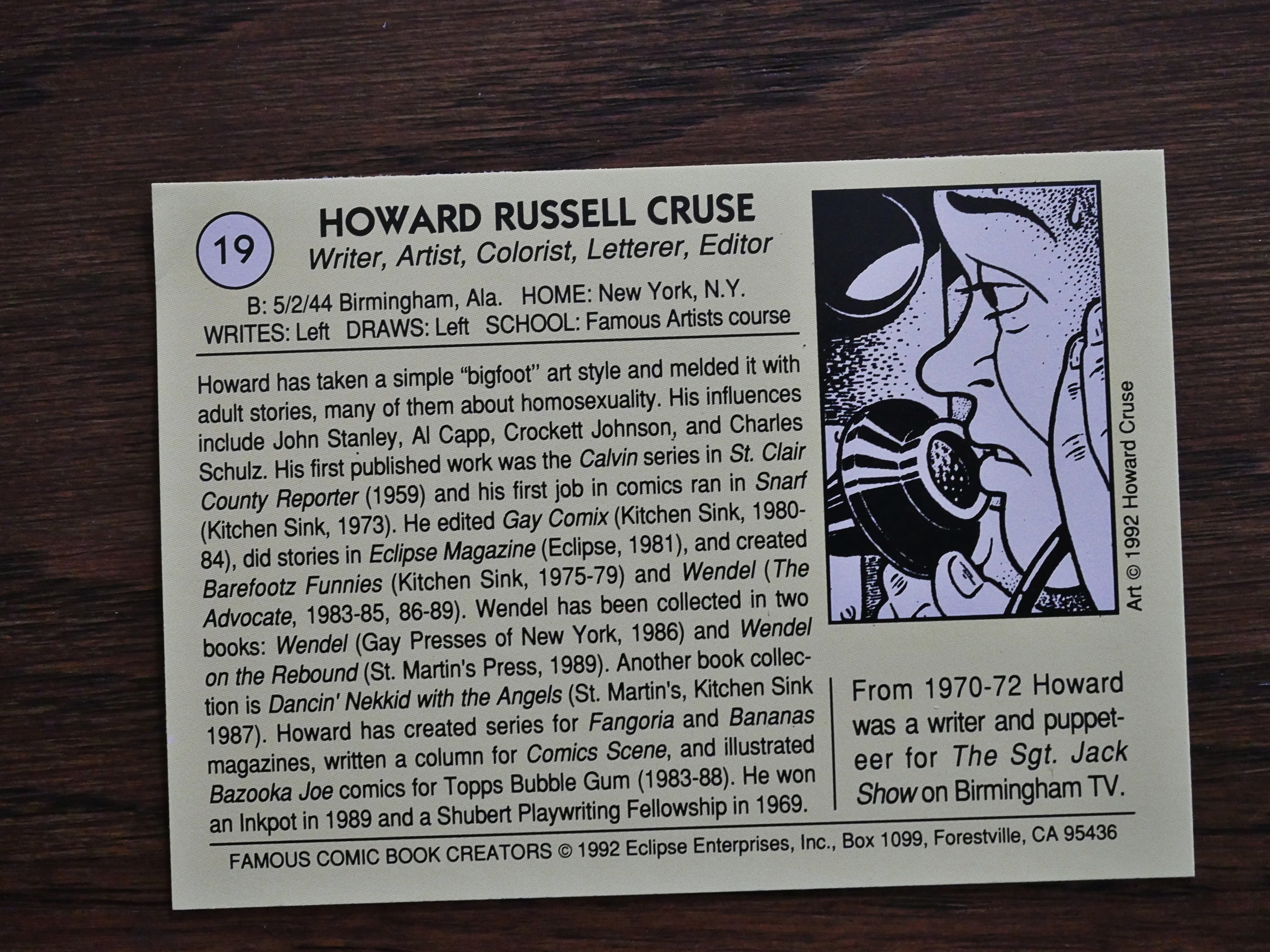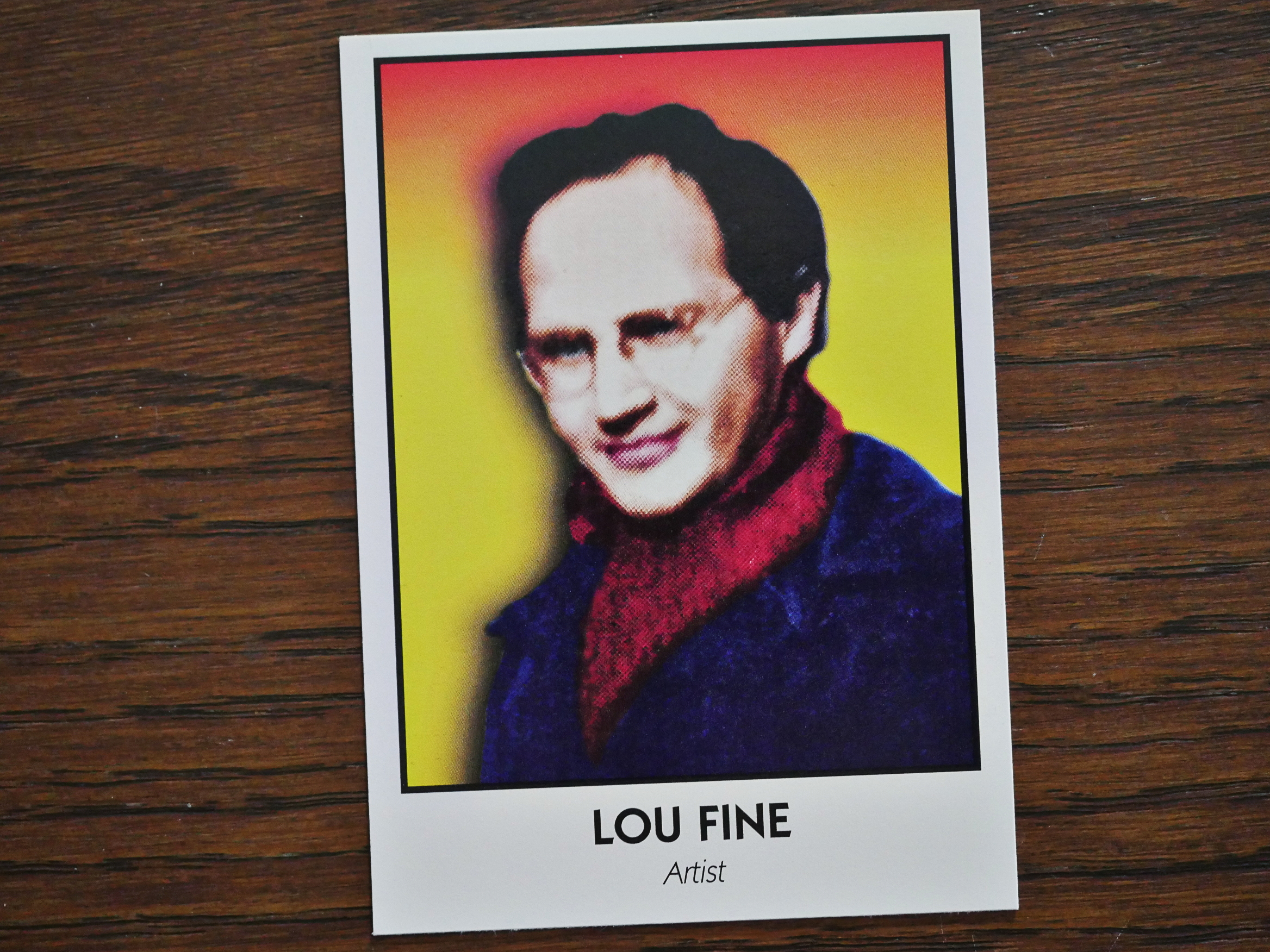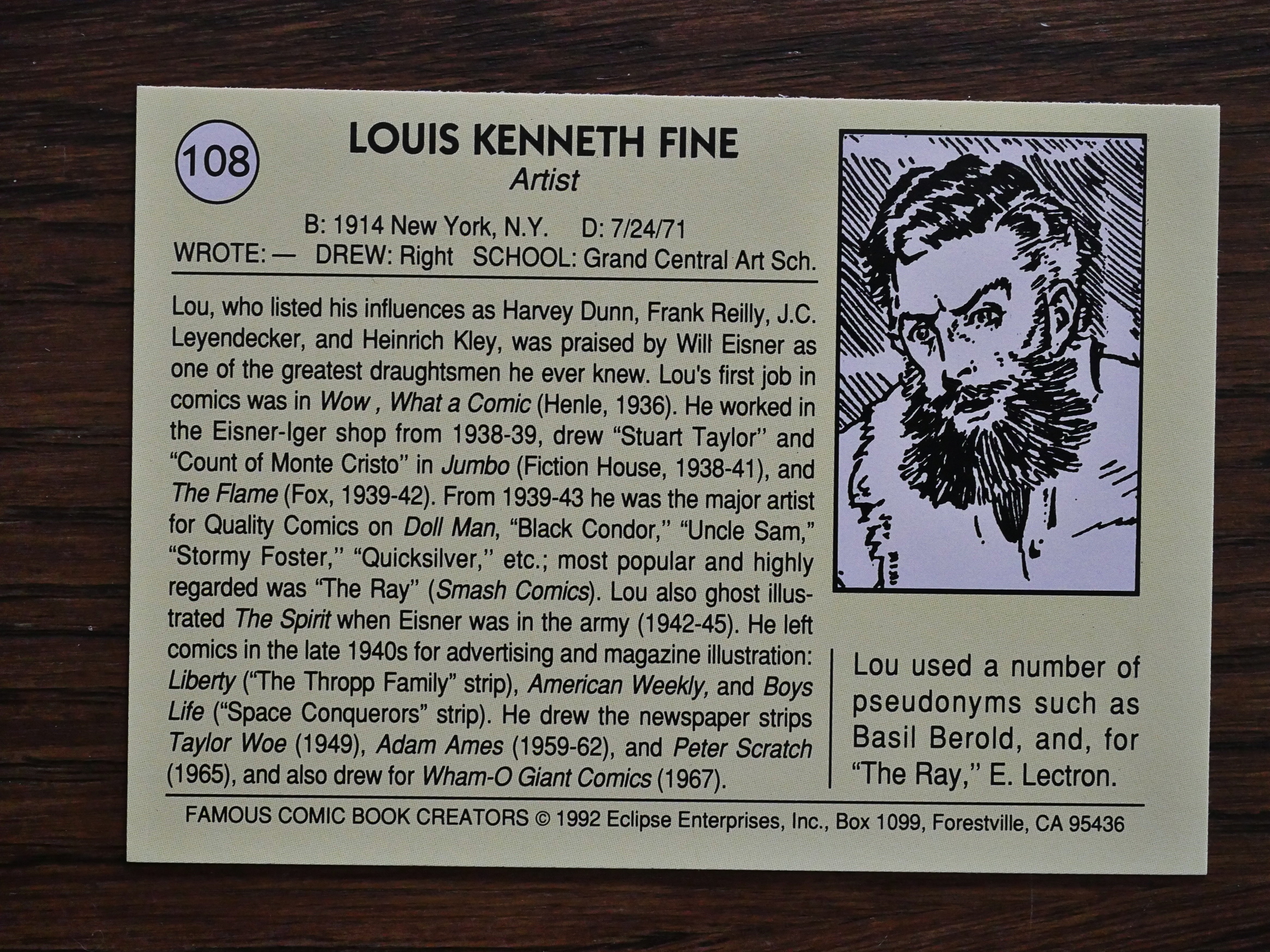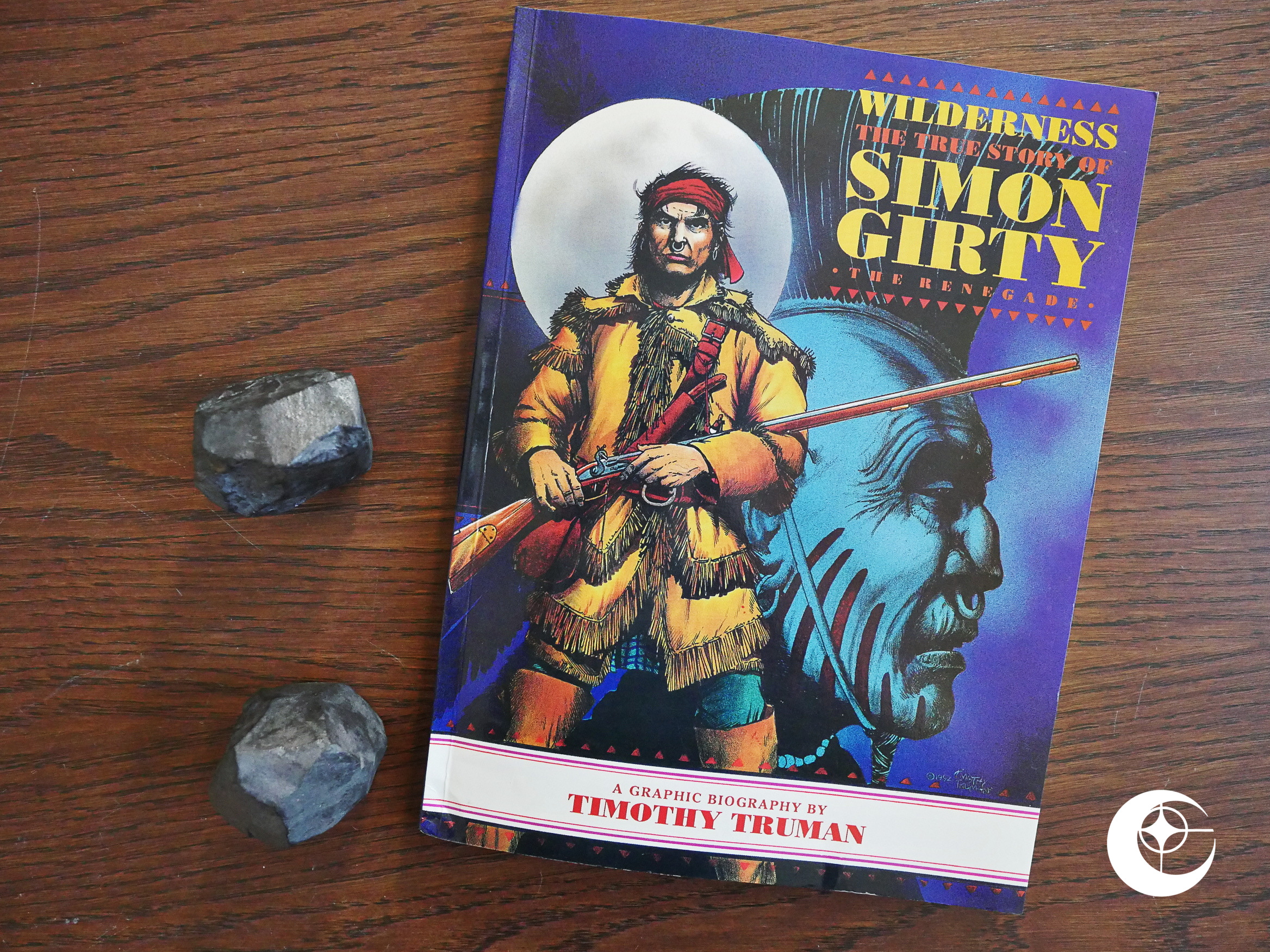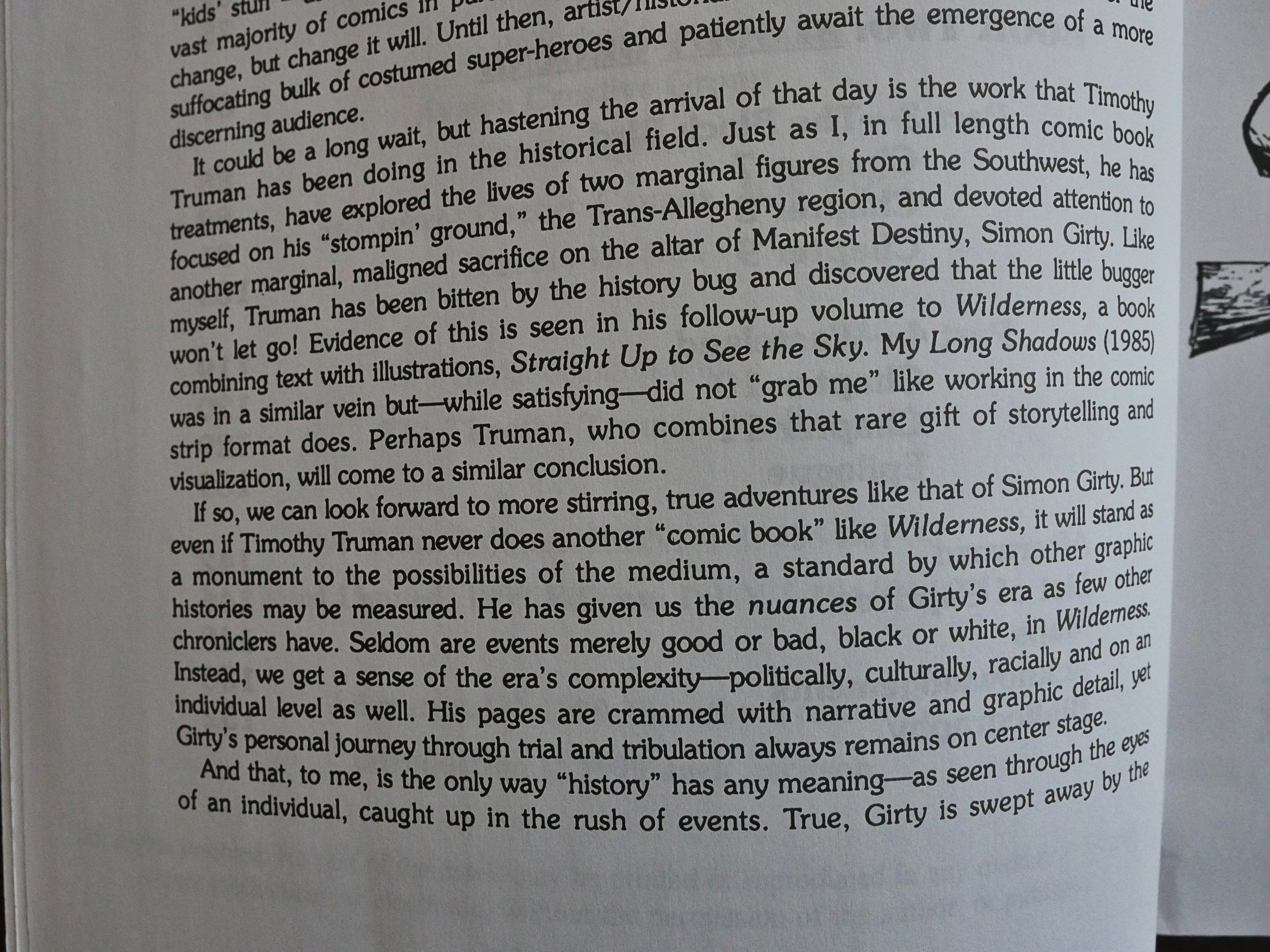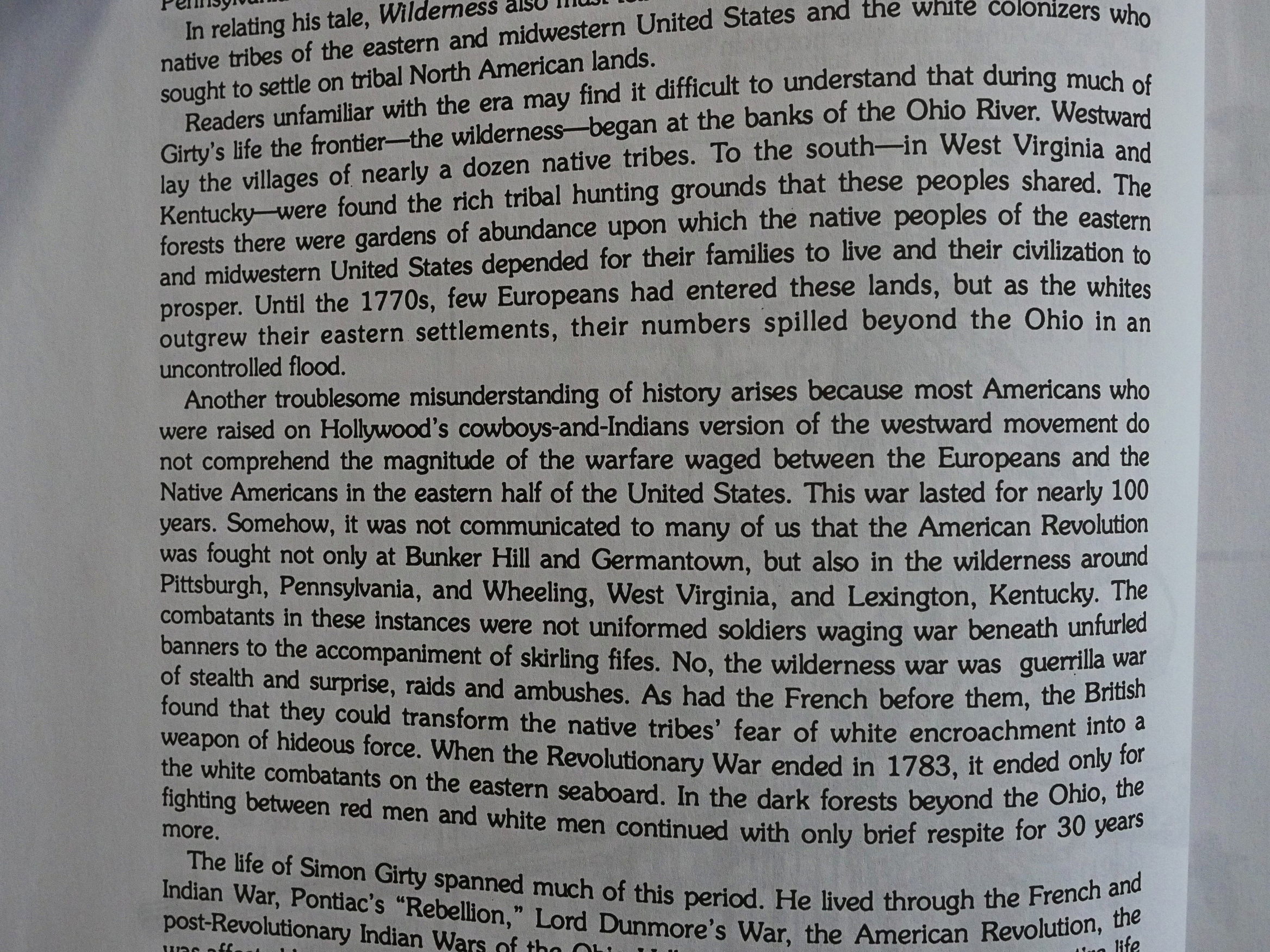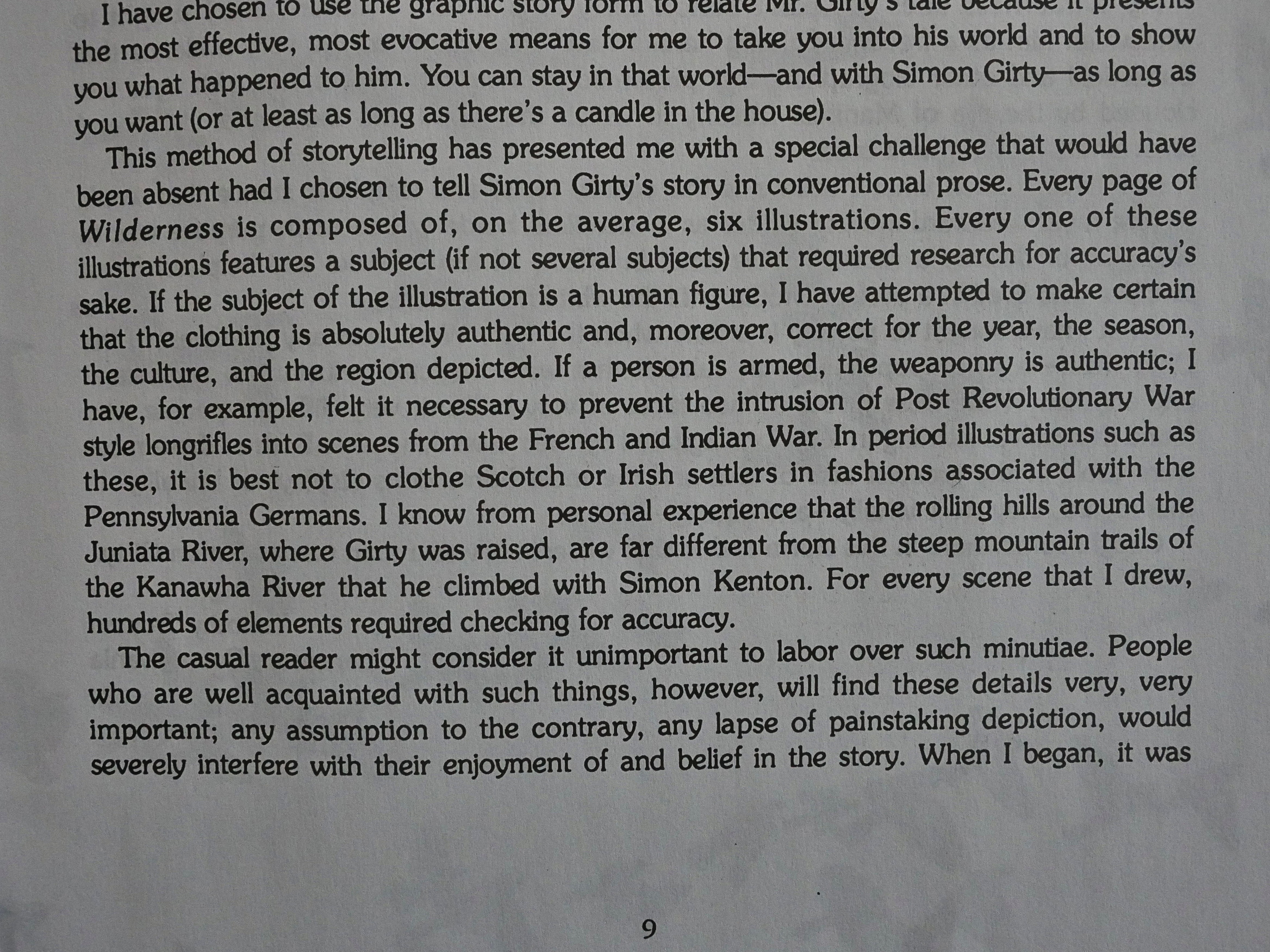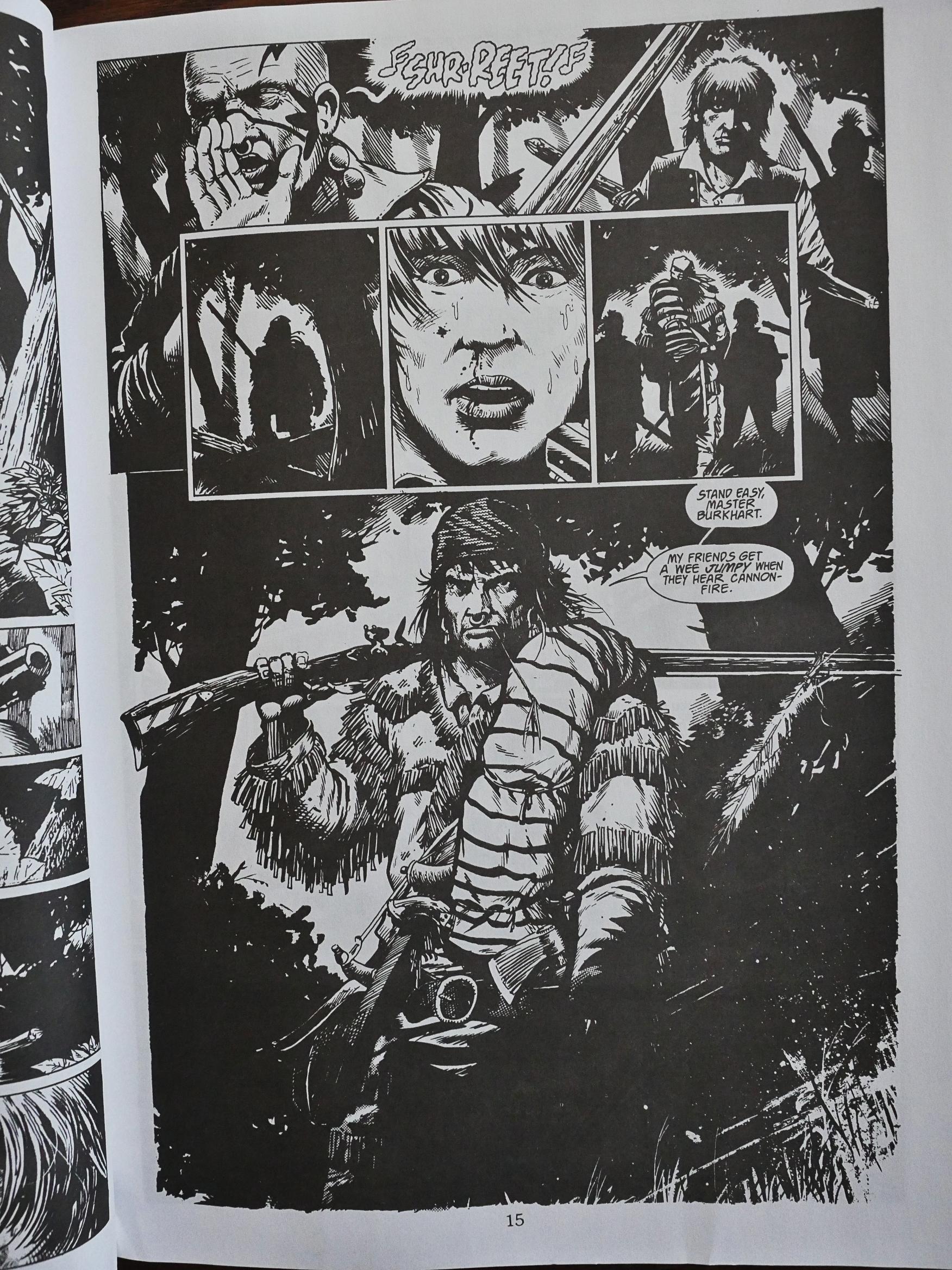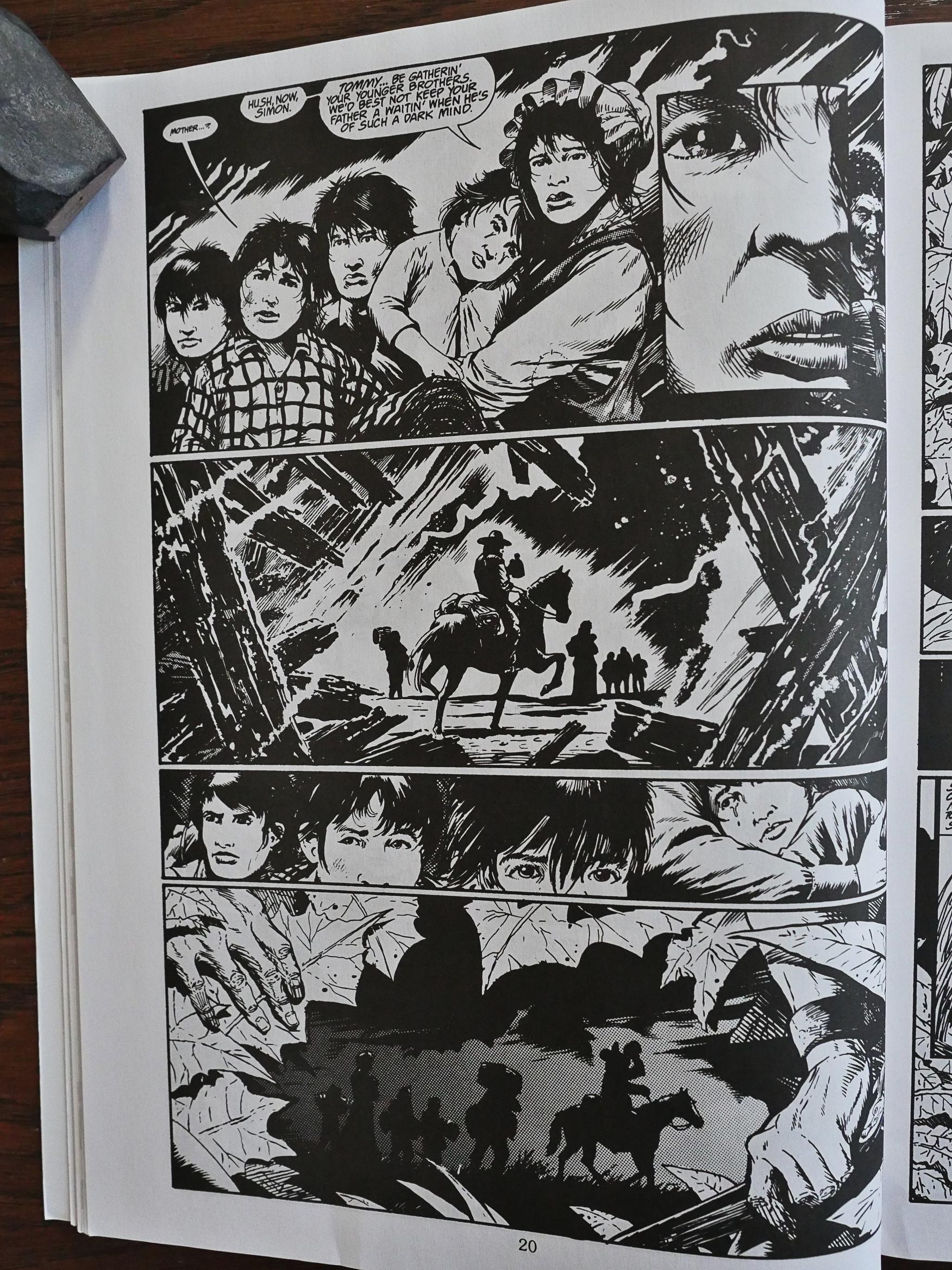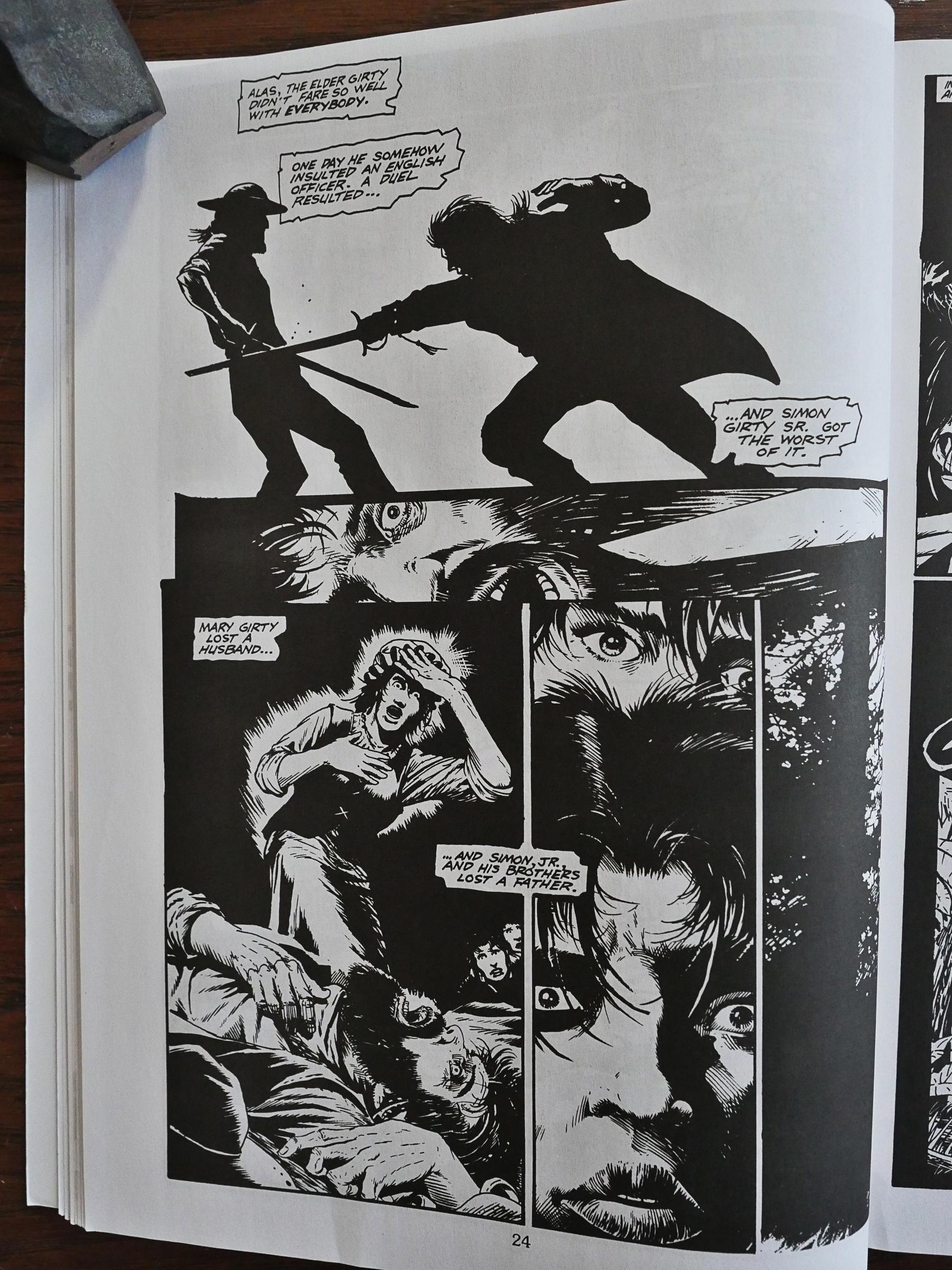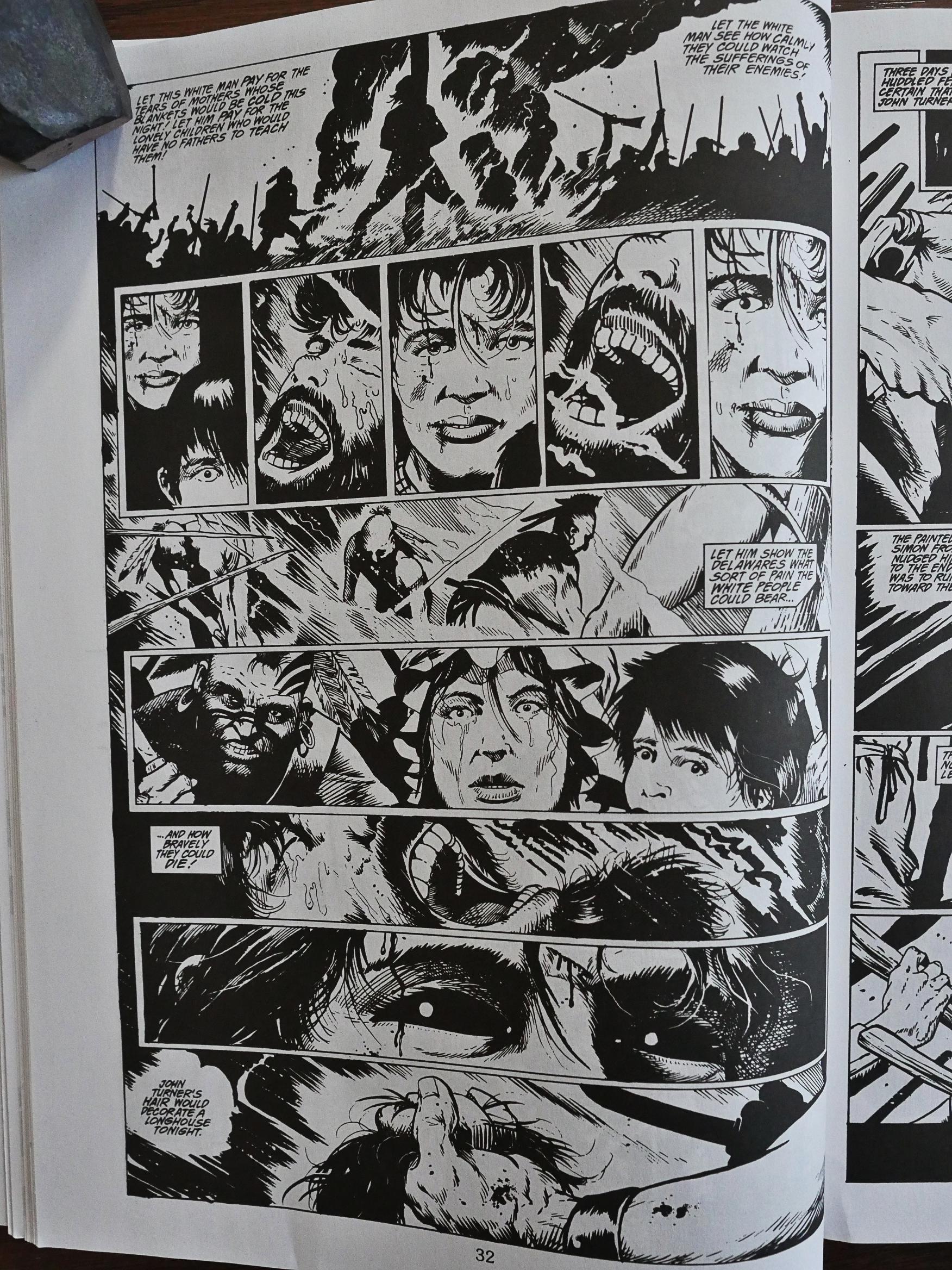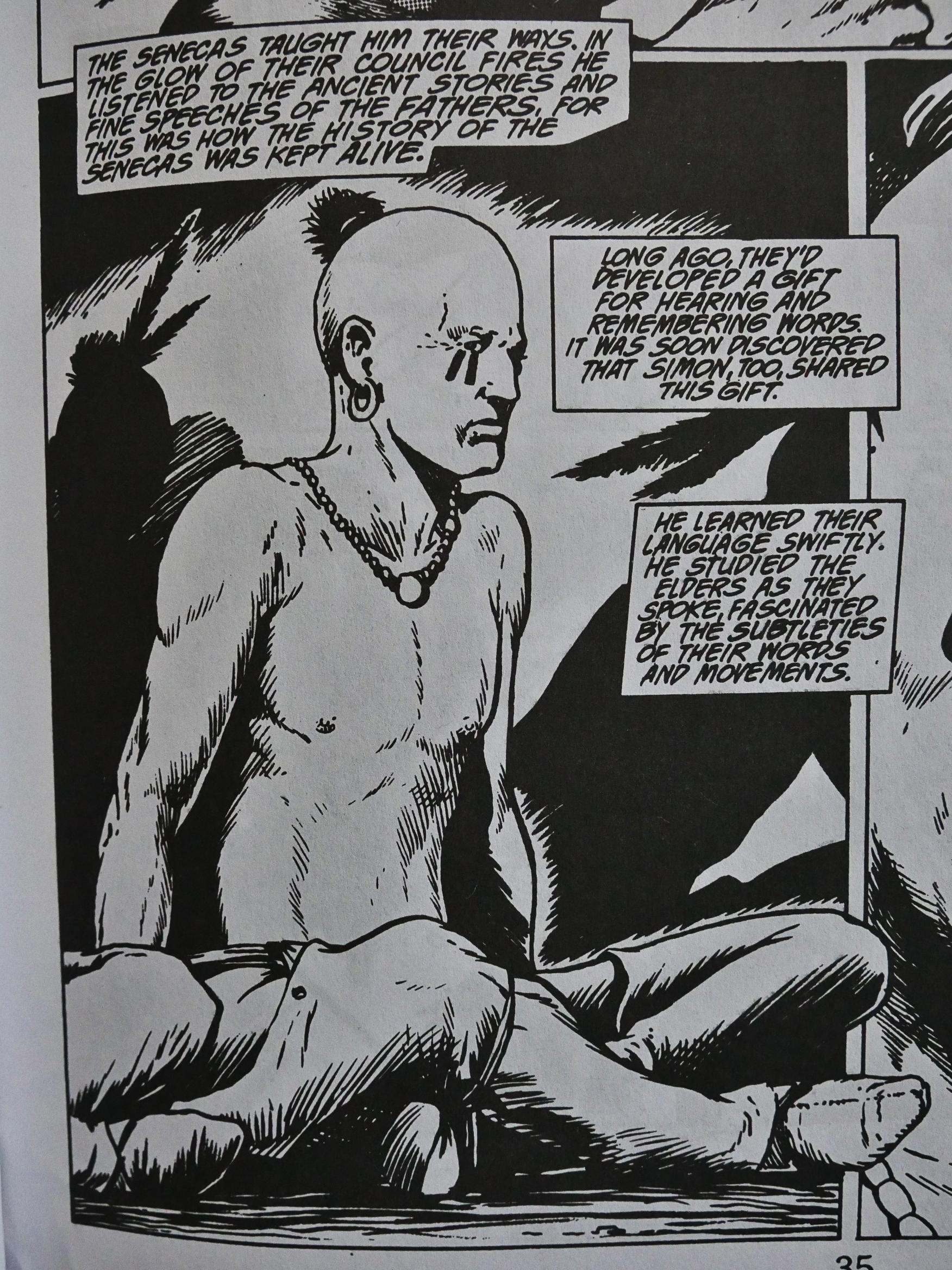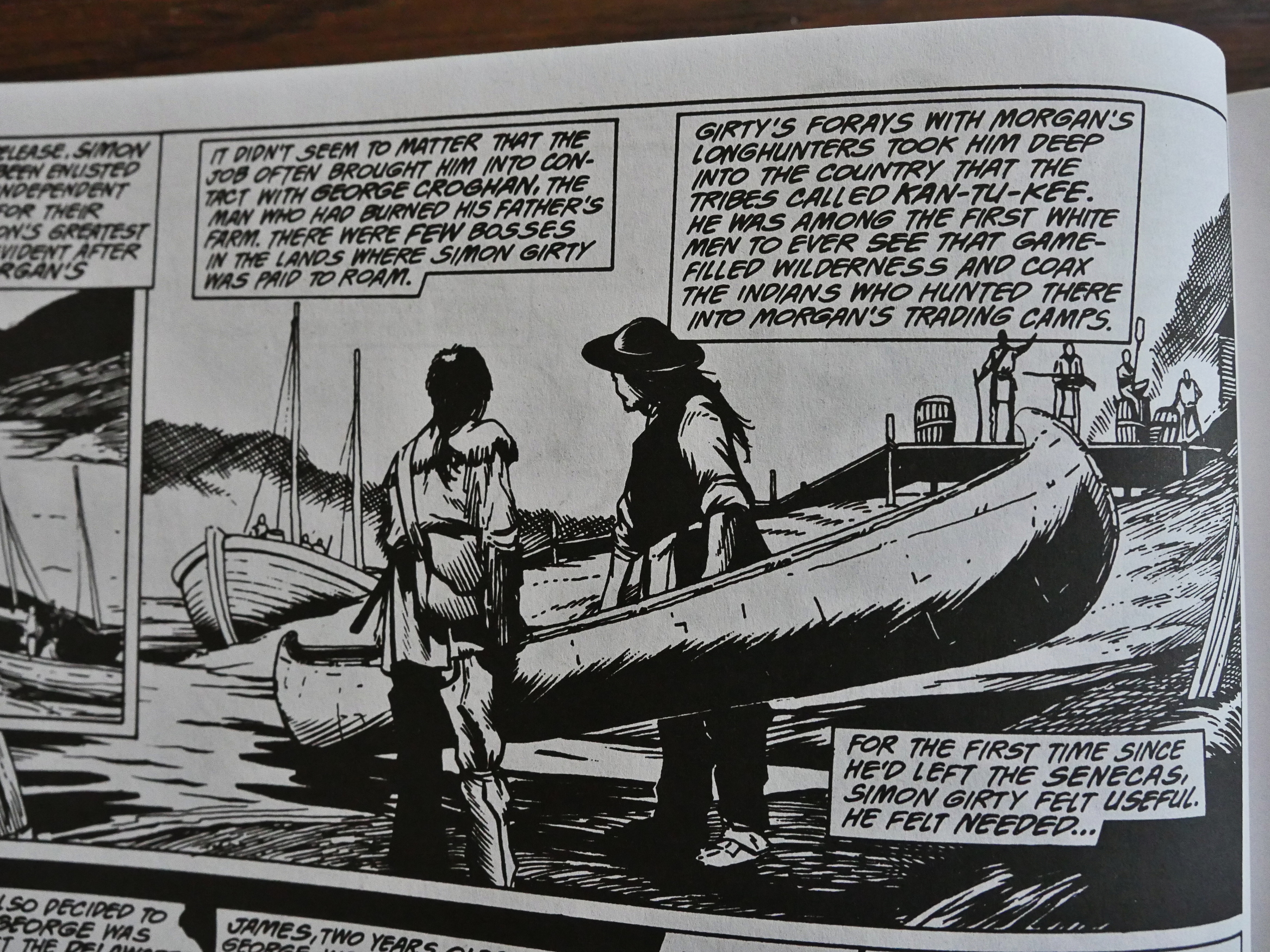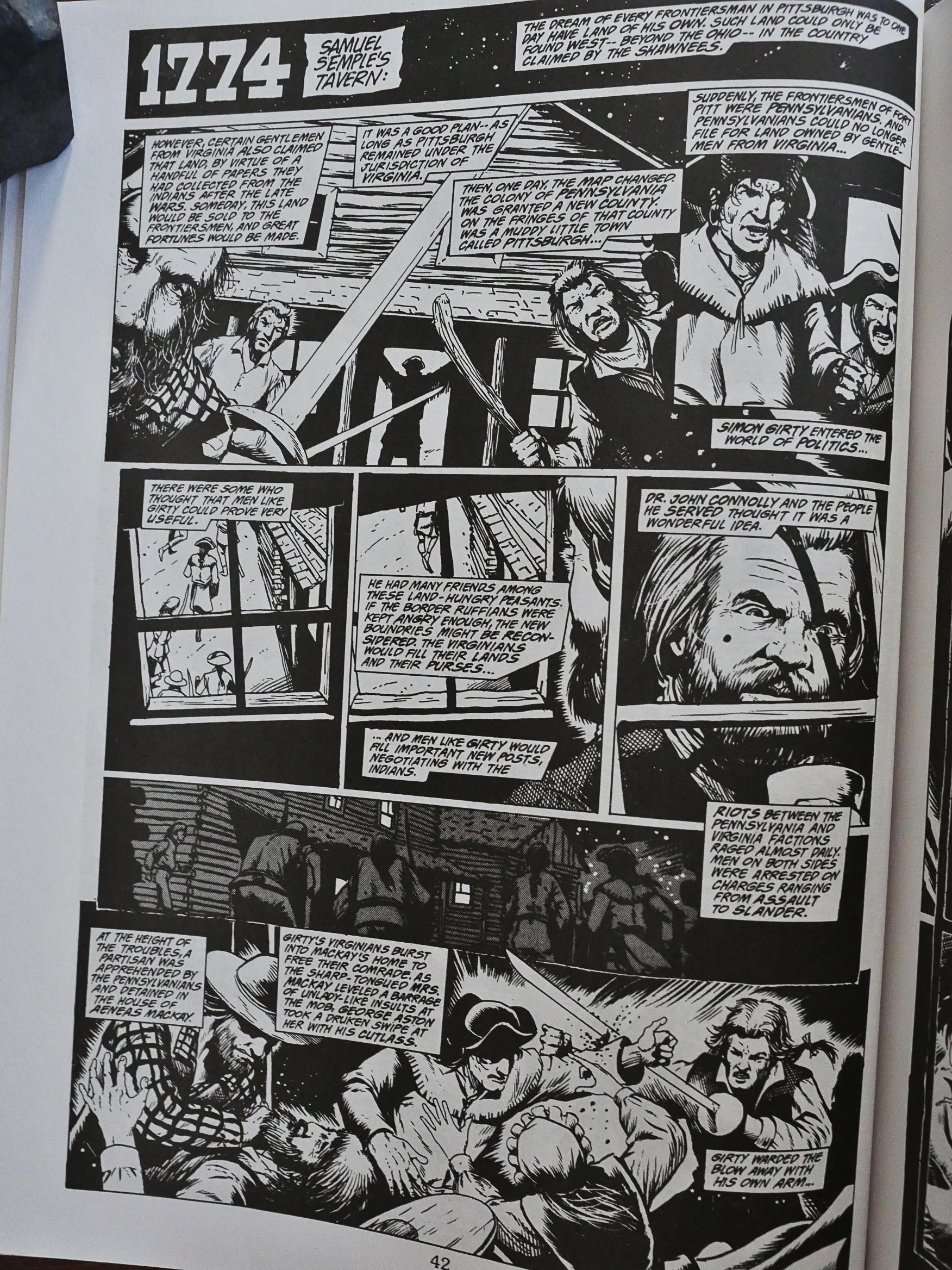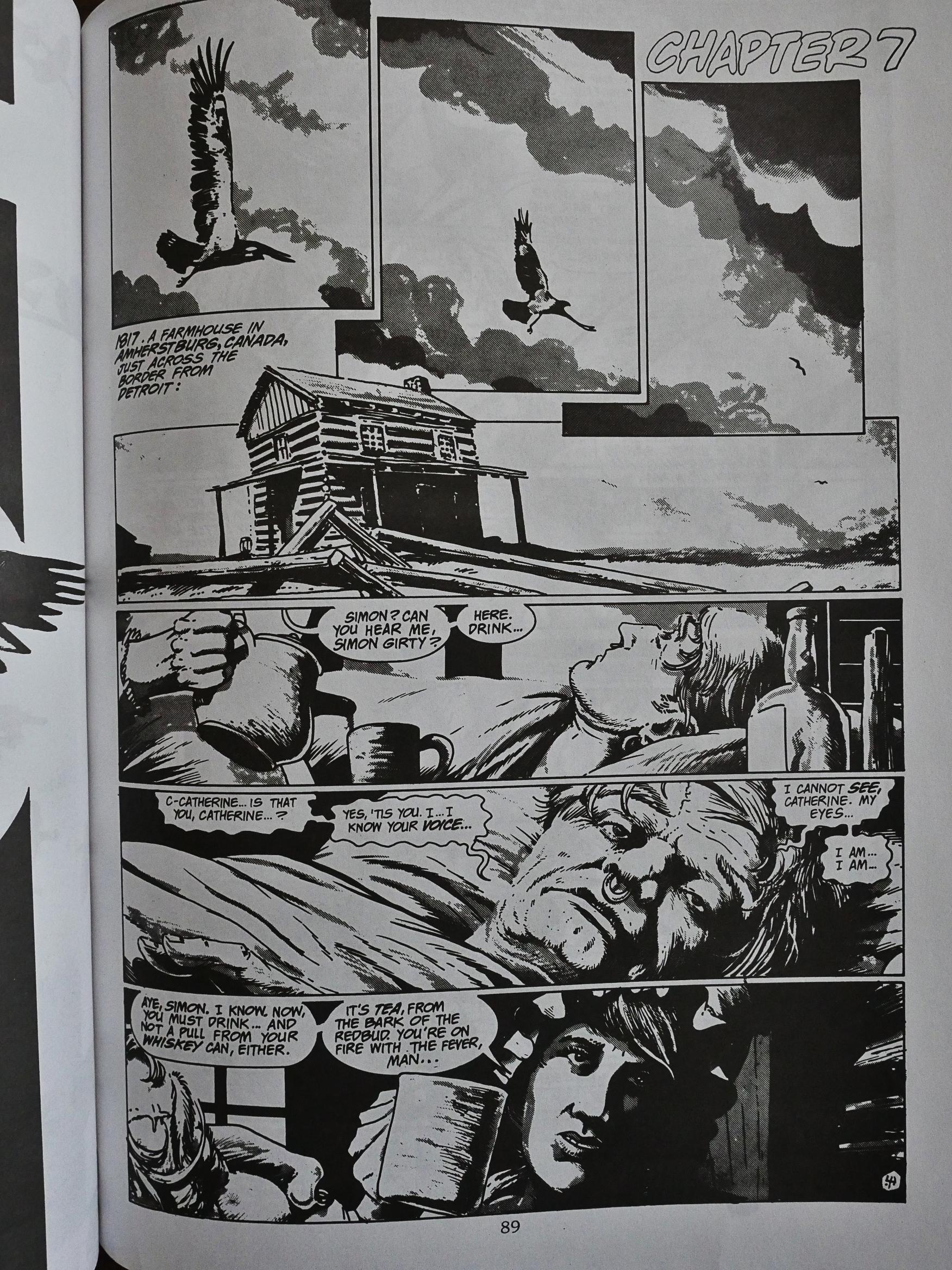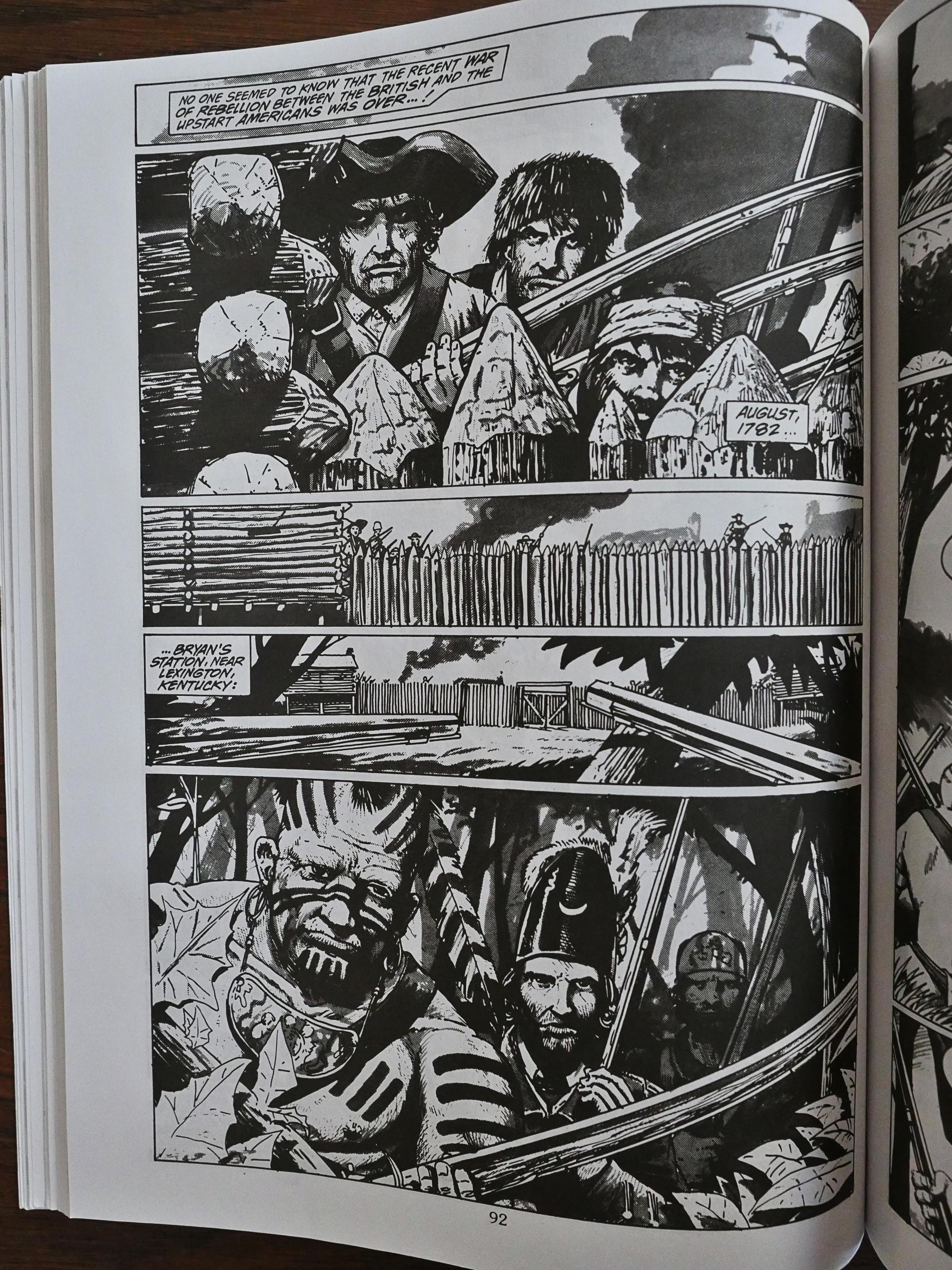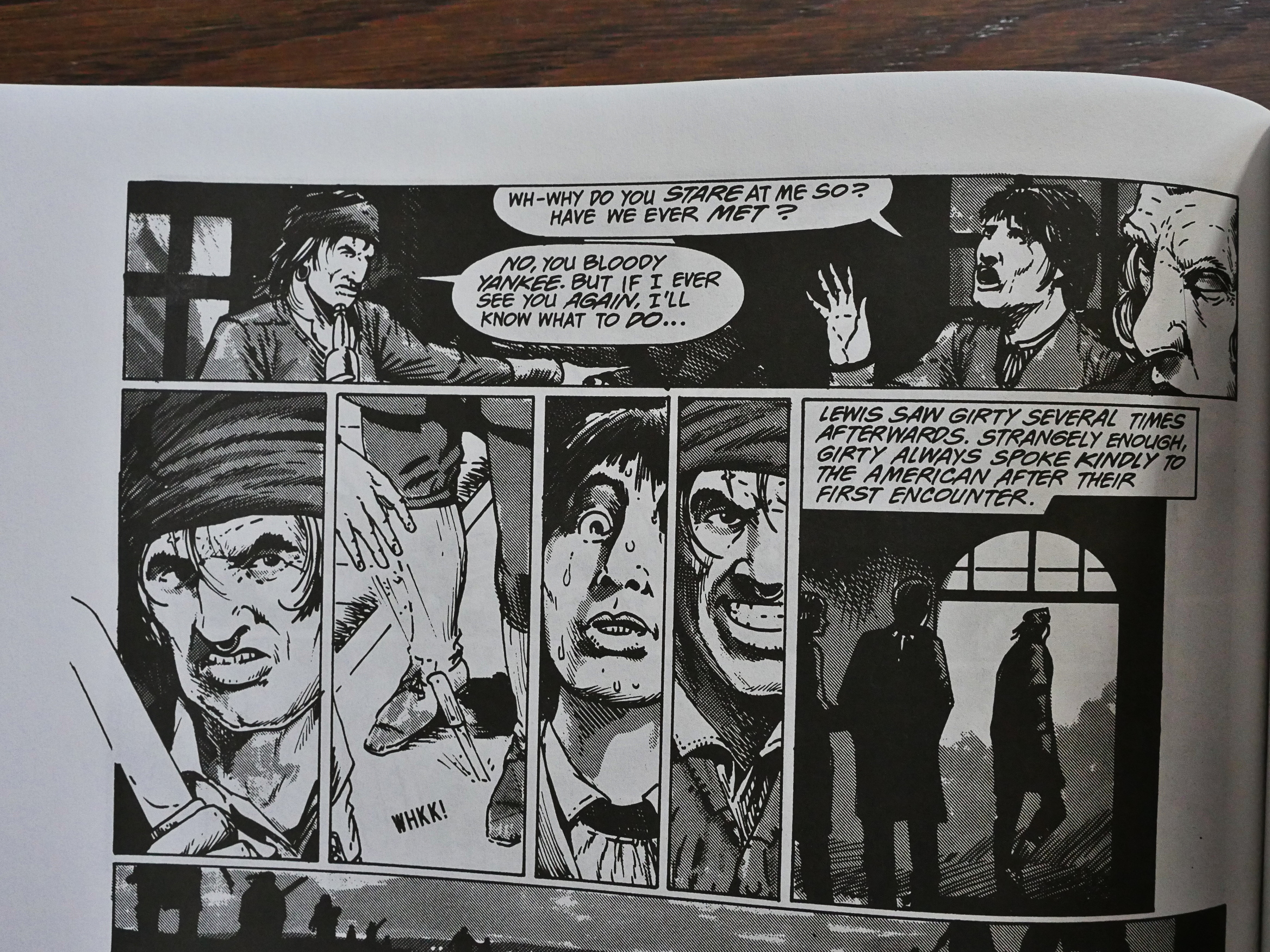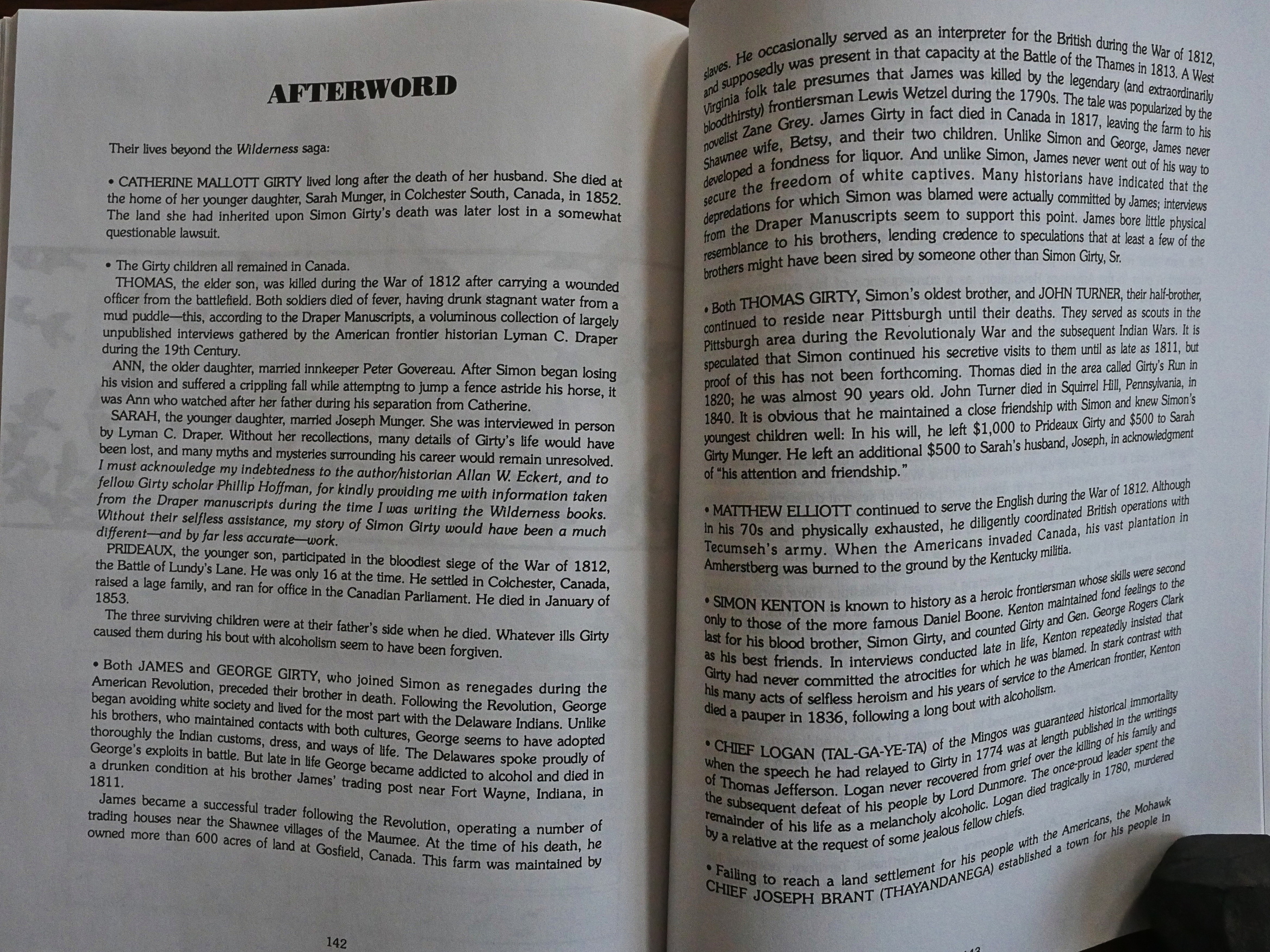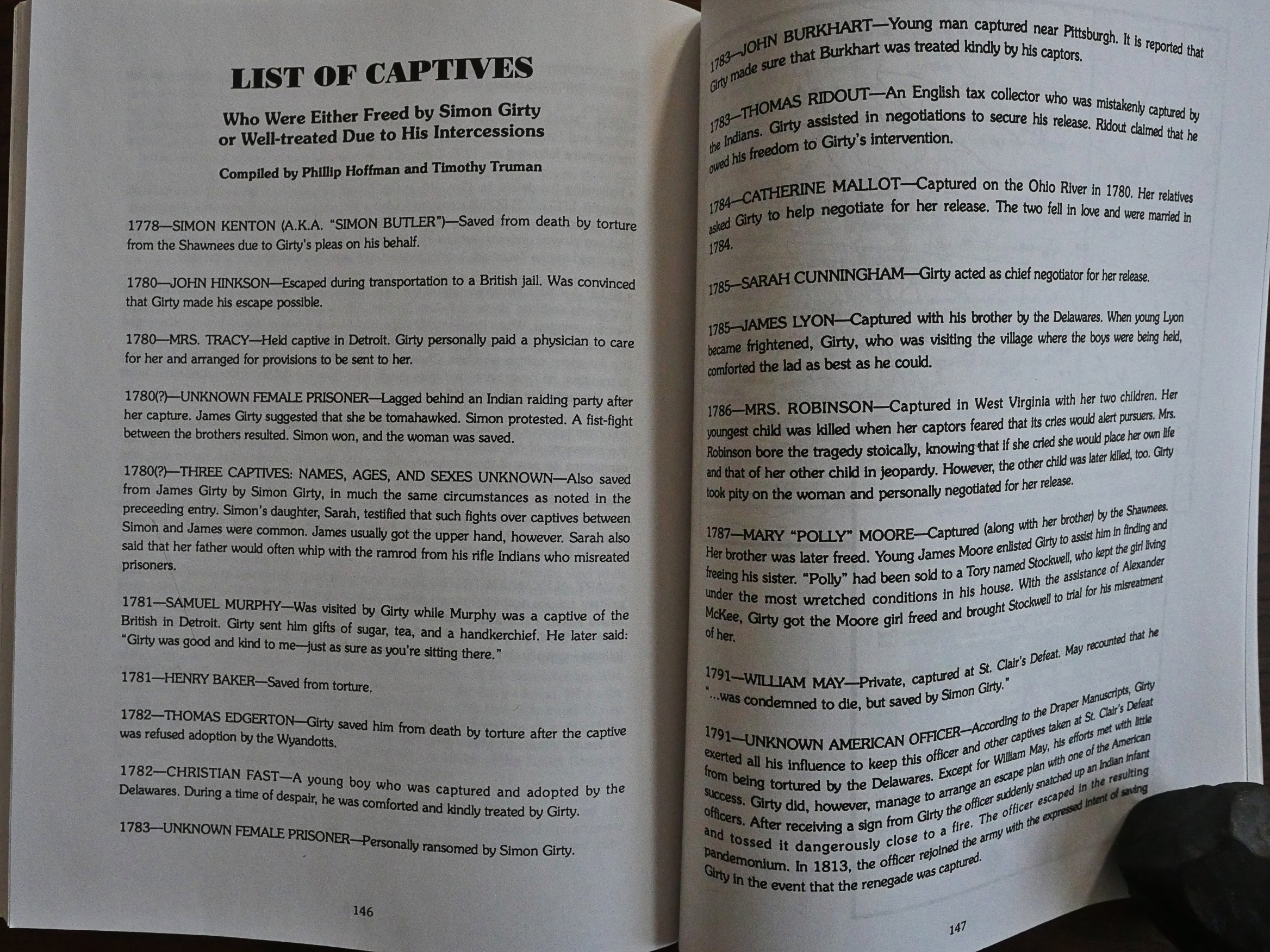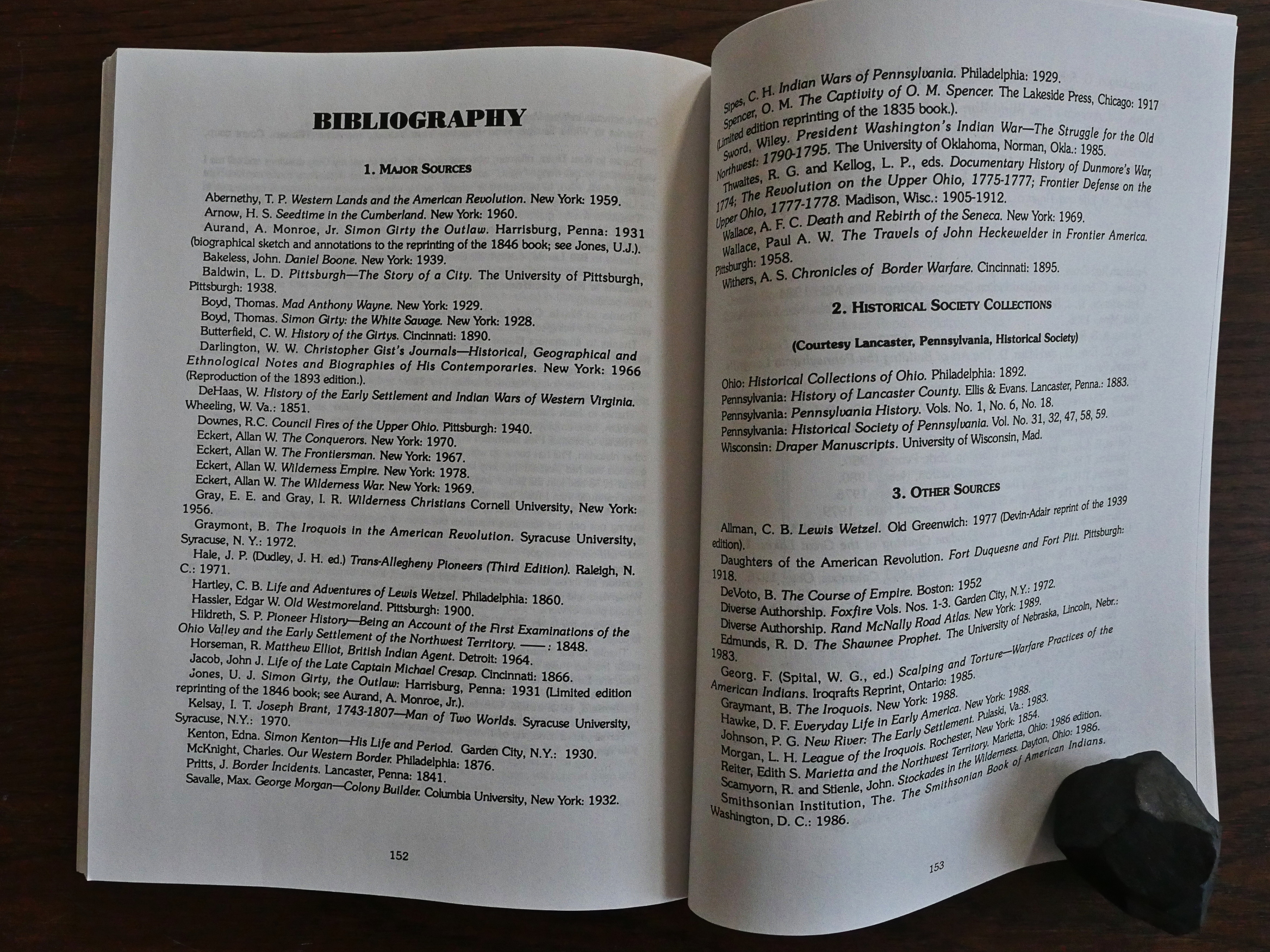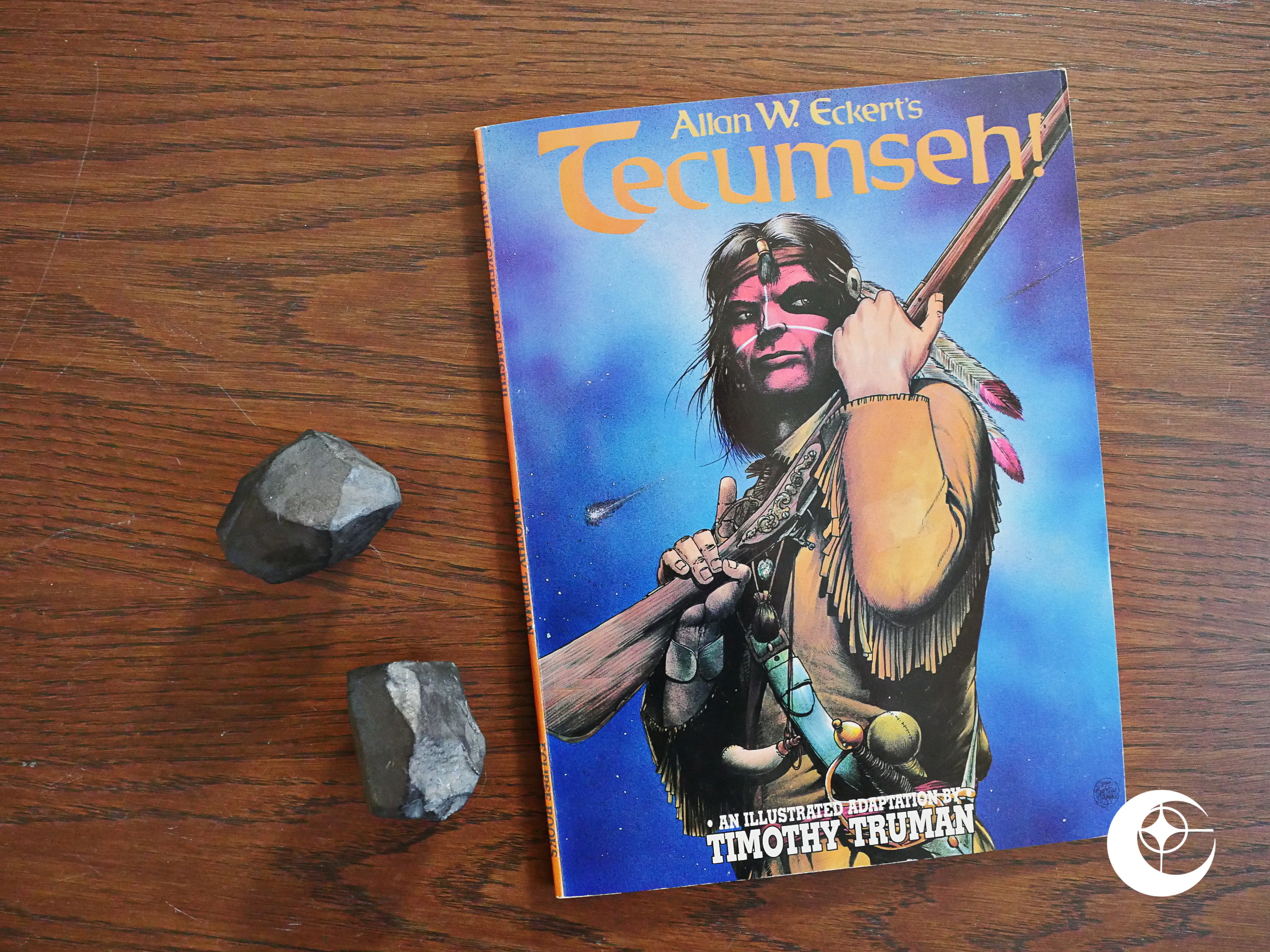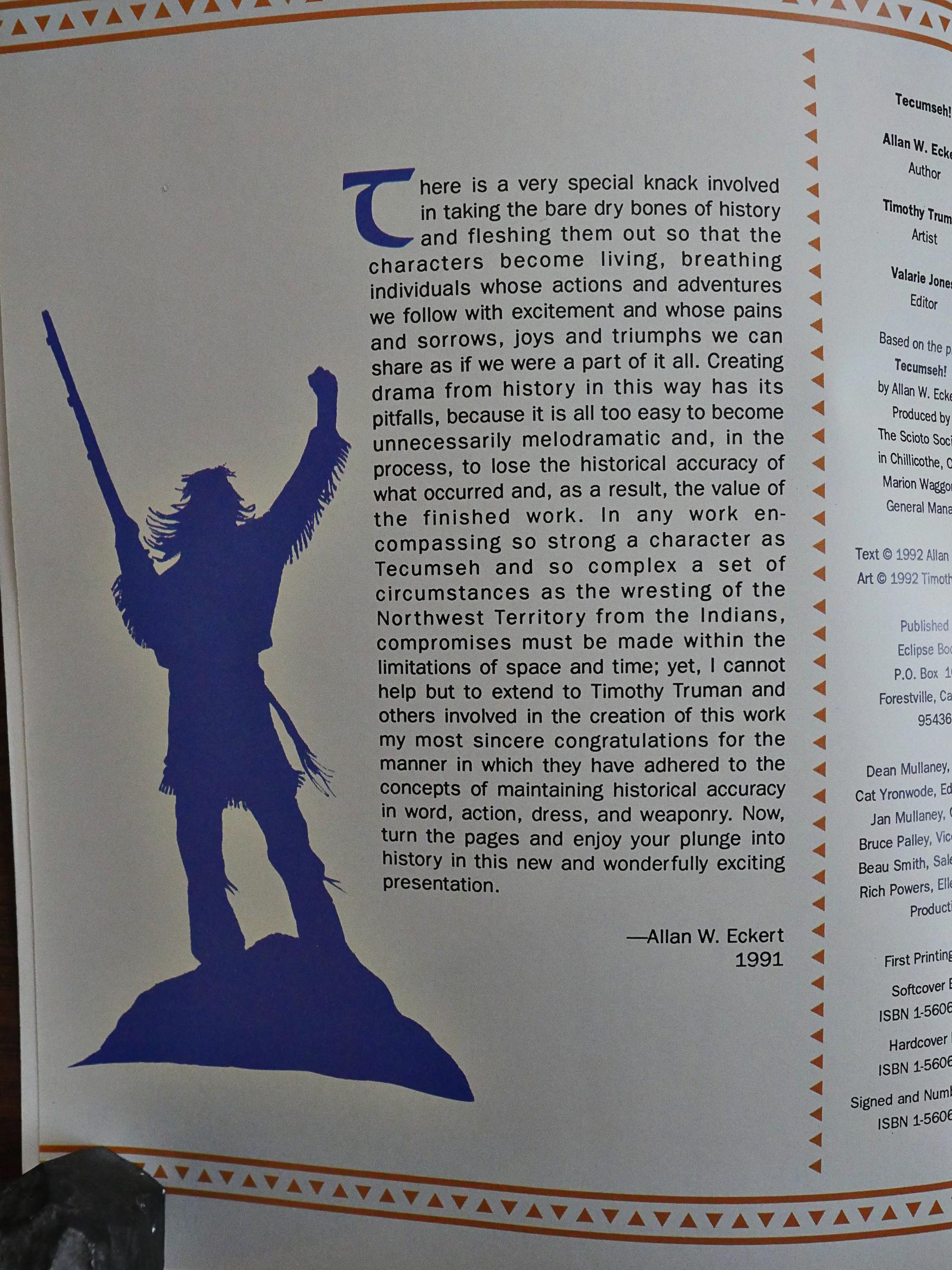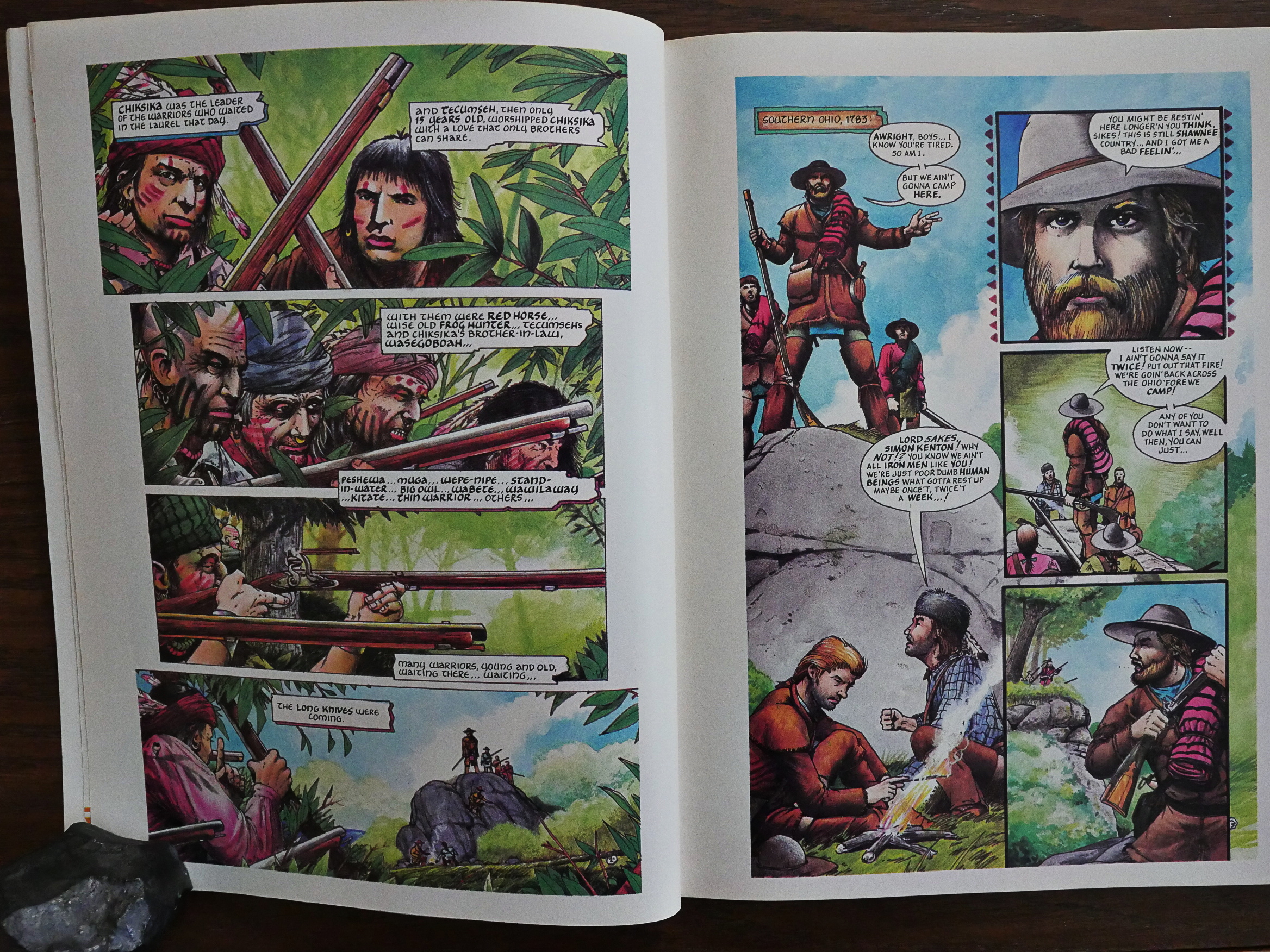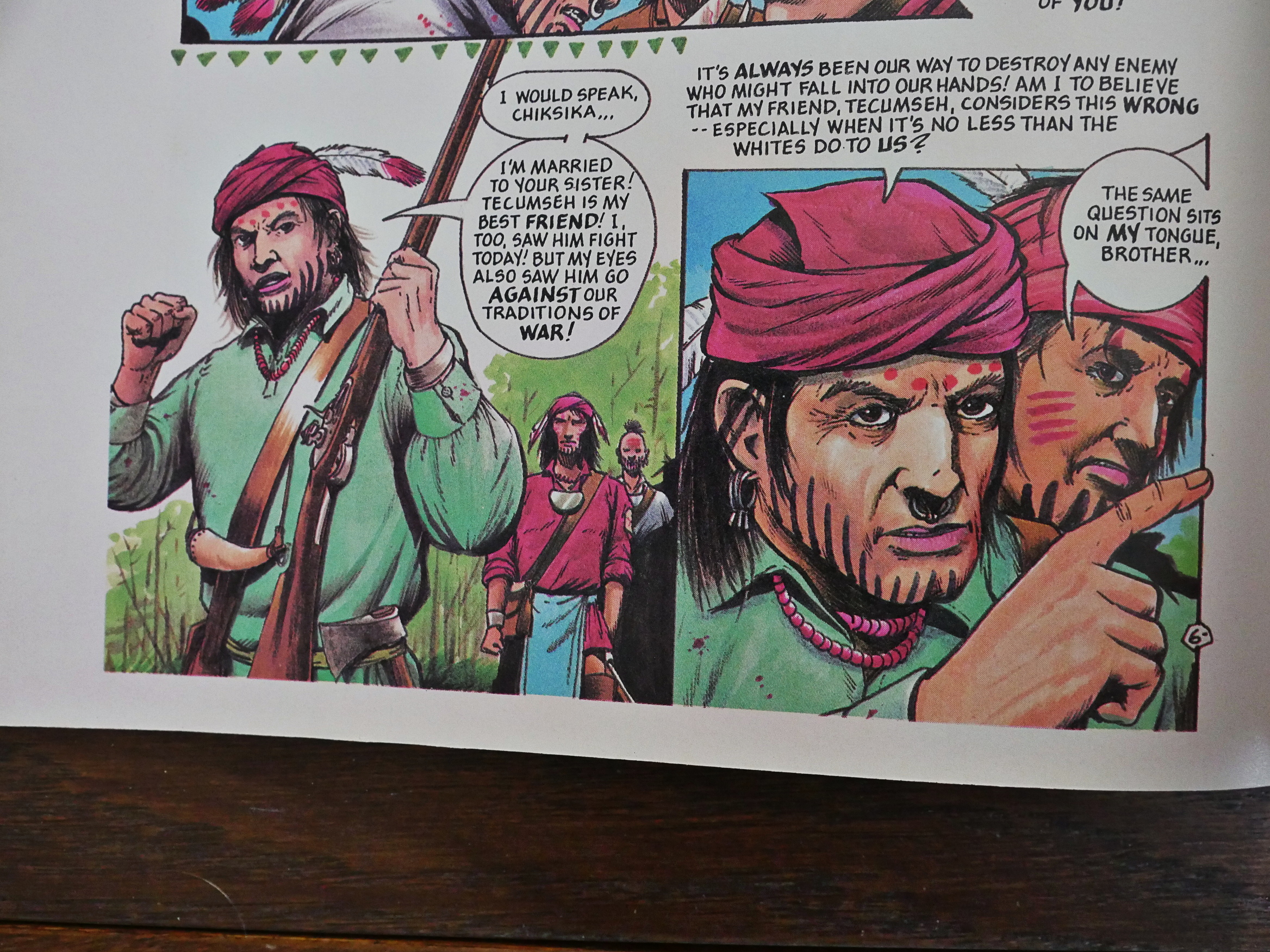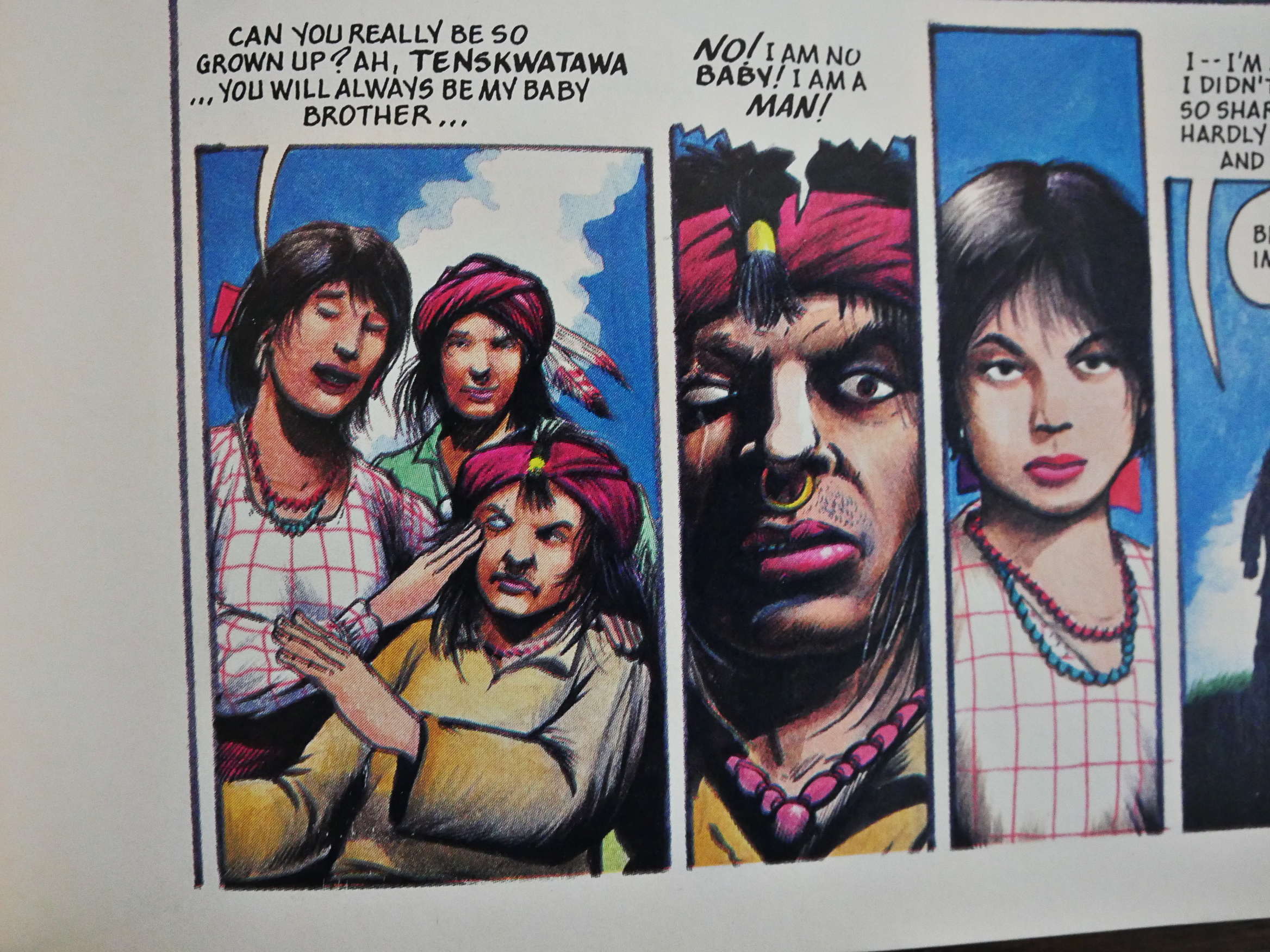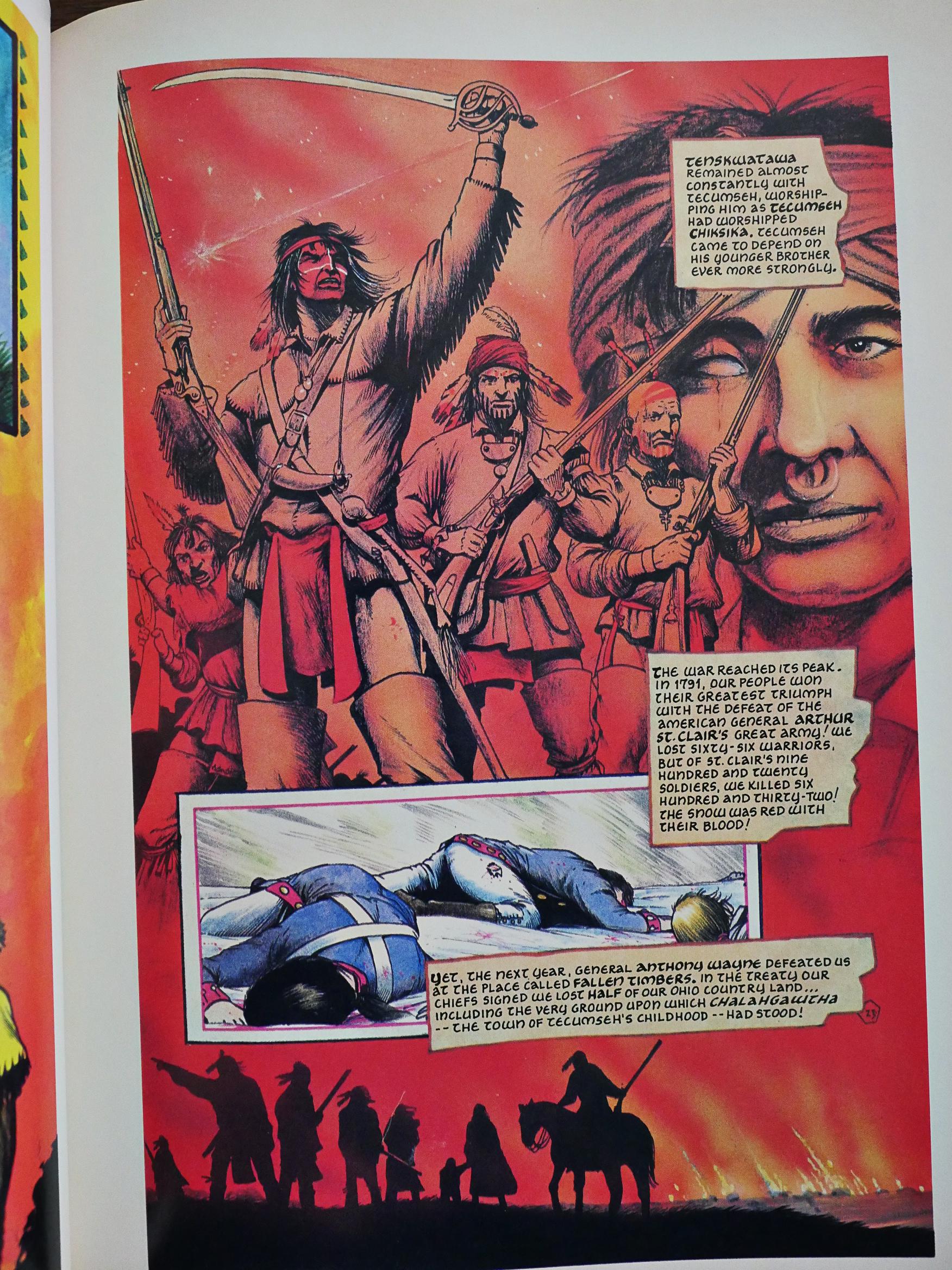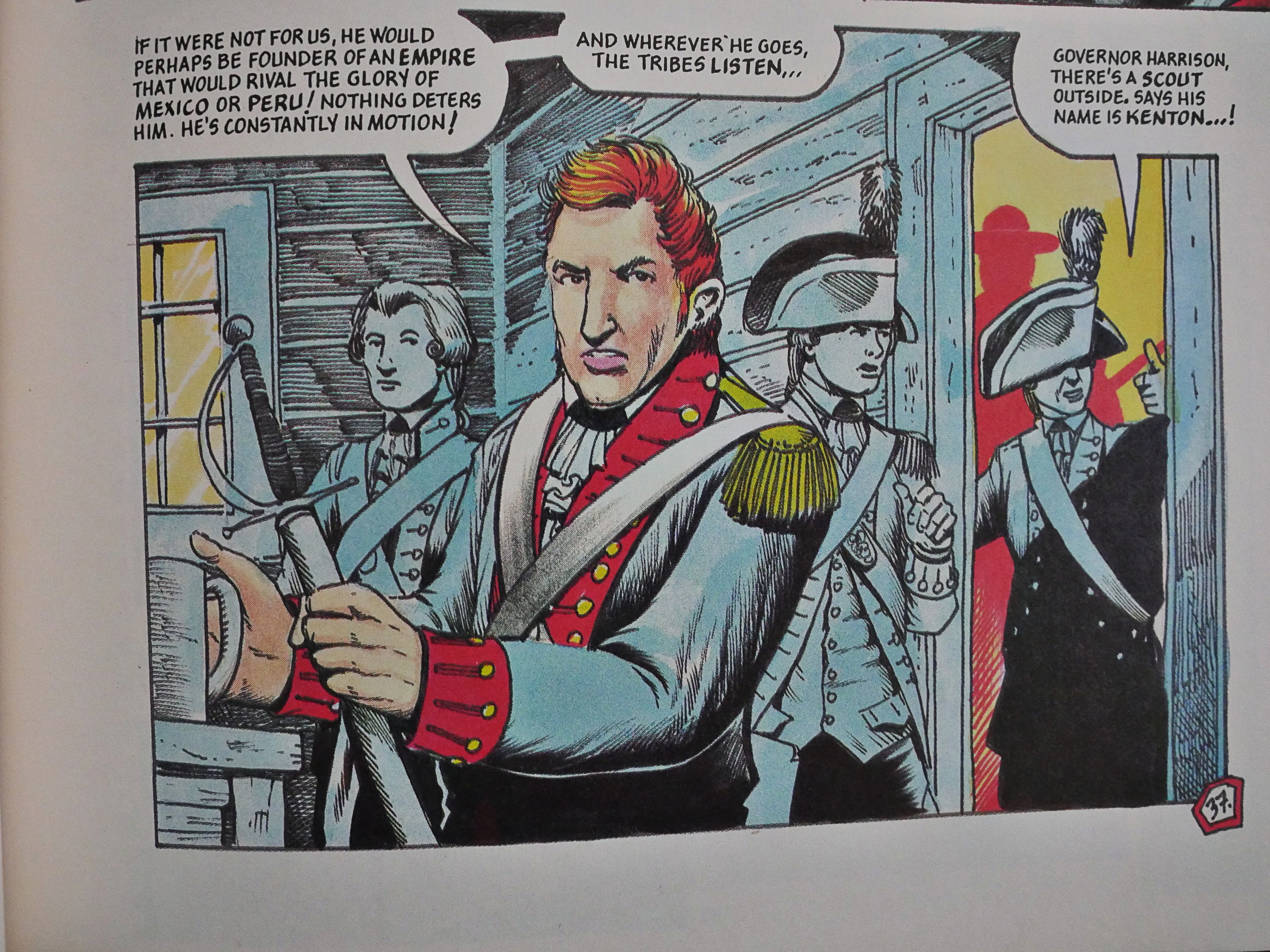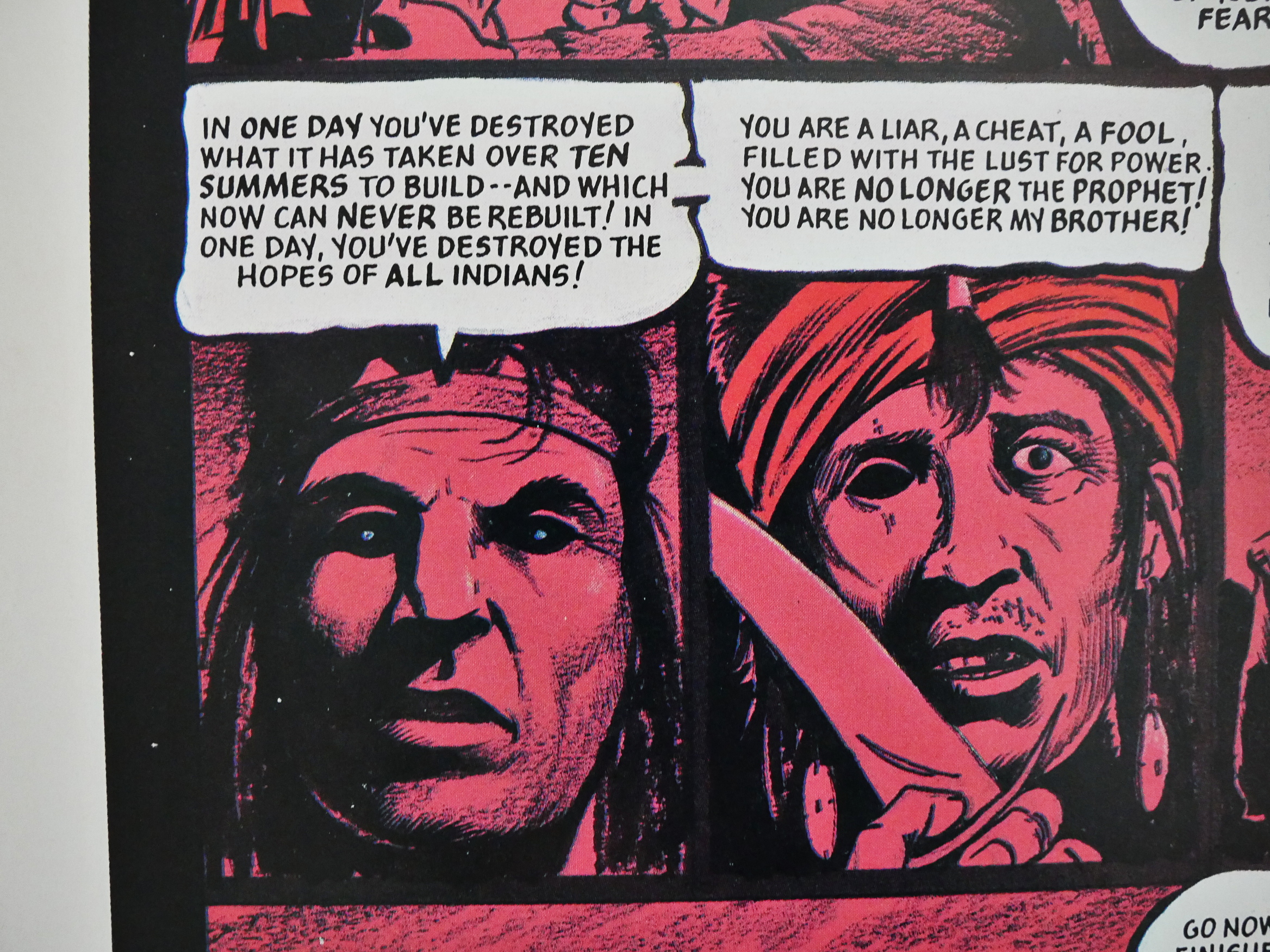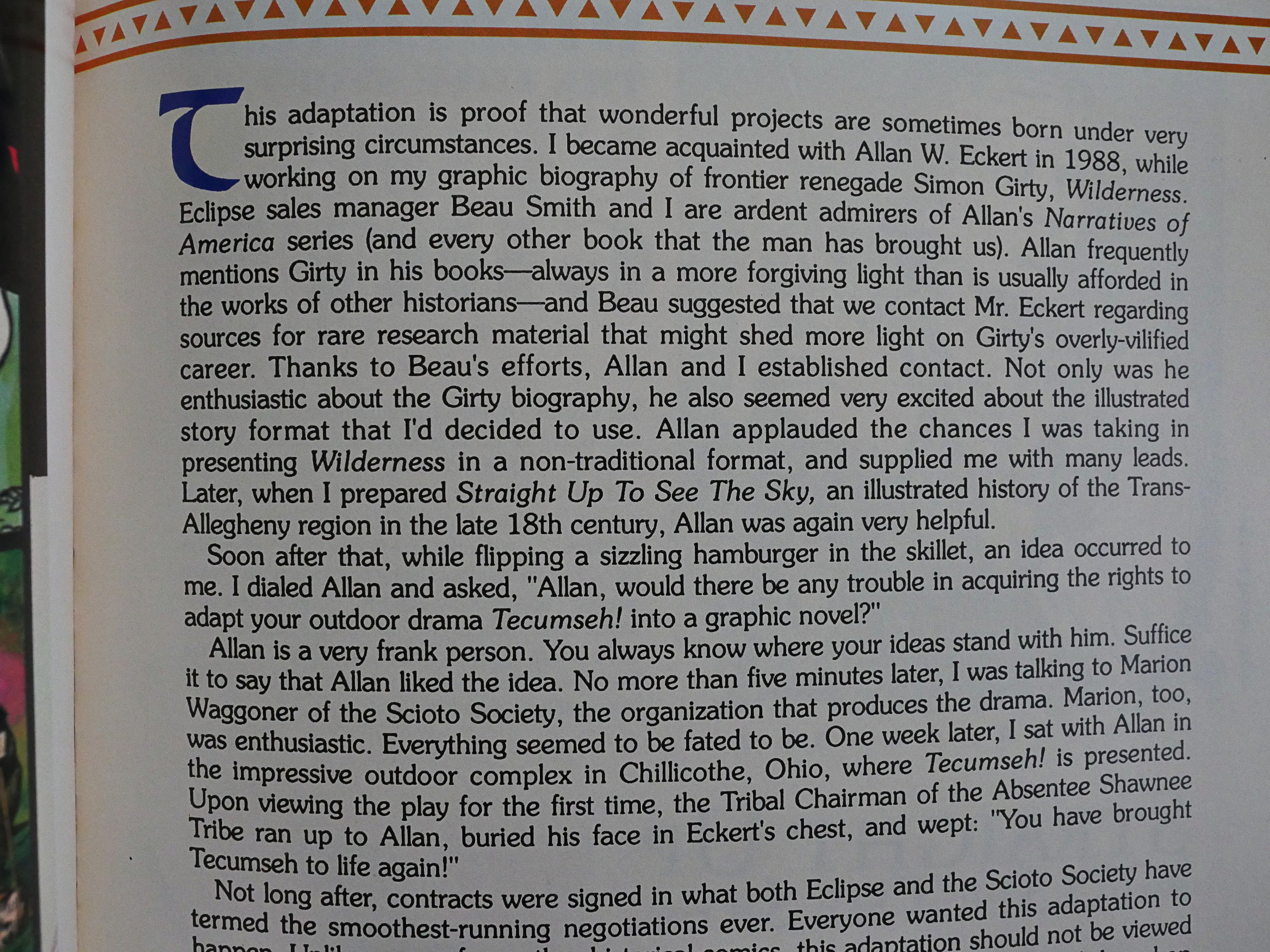Mad Dogs (1992) #1-3 by Chuck Dixon and Victor Toppi.
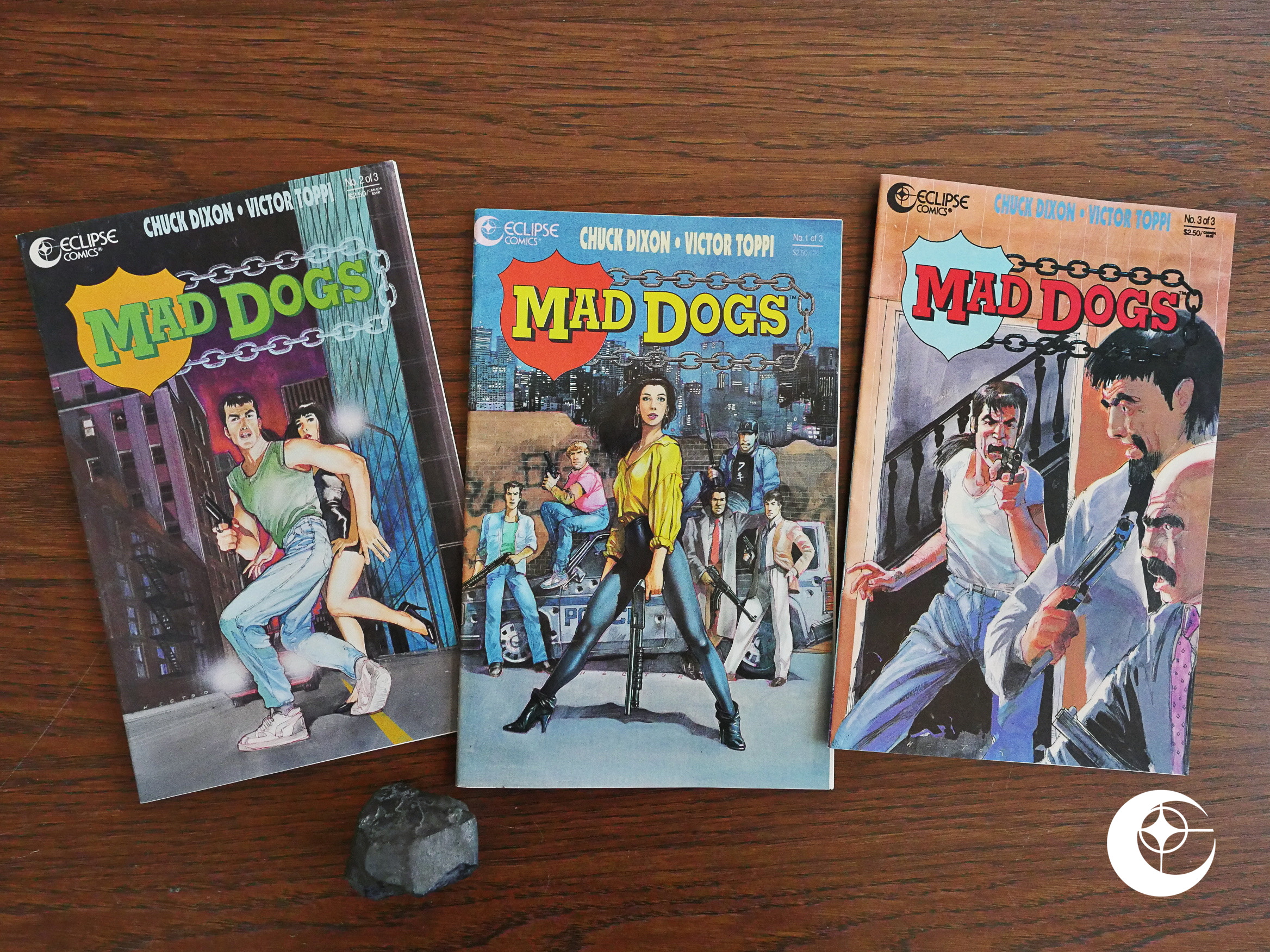
Eclipse’s 1992 trundles on with a new action series from Eclipse veteran Chuck Dixon and Eclipse newcomer Victor toppi.
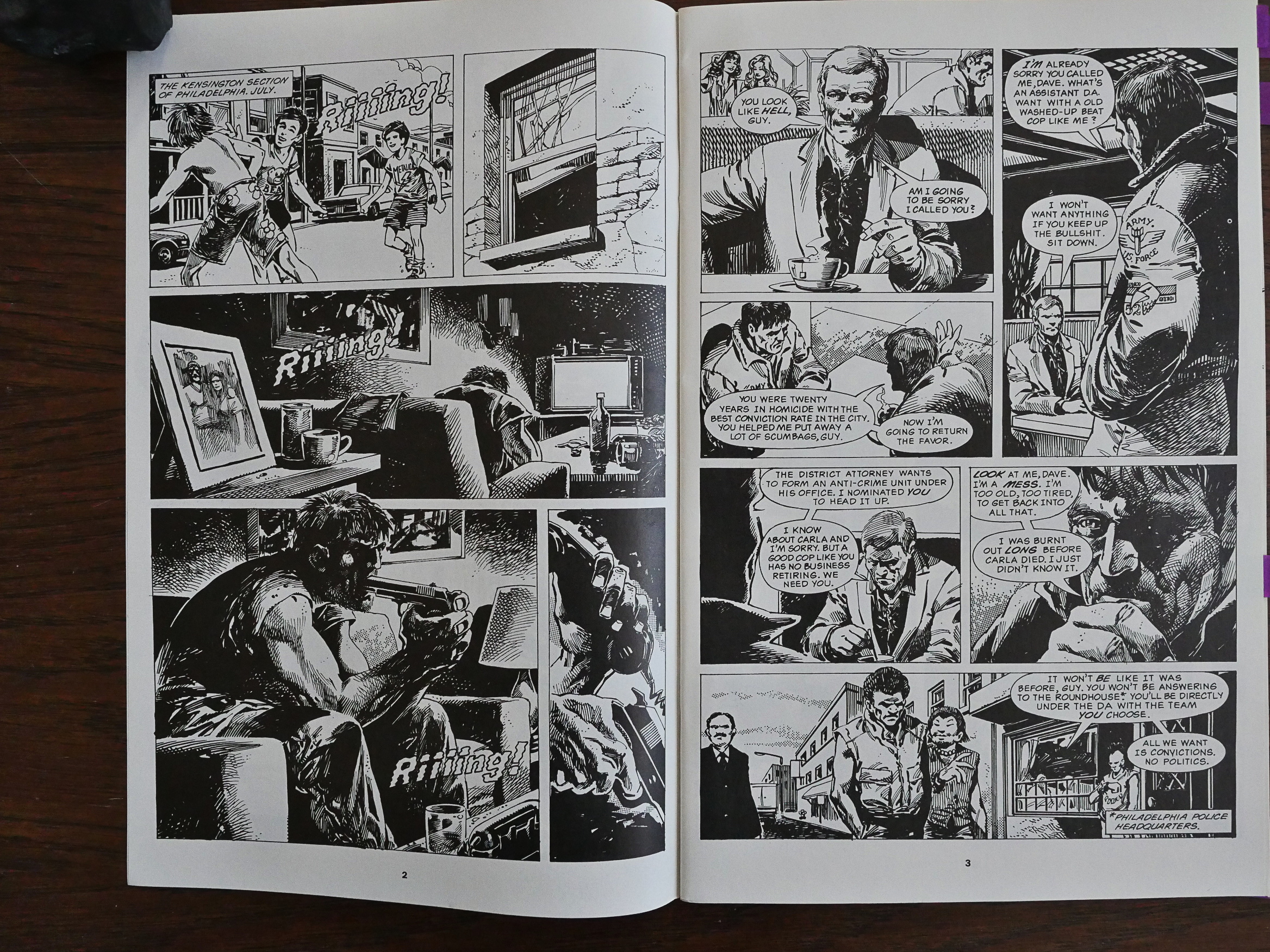
I’m not familiar with Toppi’s work, but from the looks of it, I’d guess that perhaps he’s an Argentinian who’s worked in Italy, or vice versa? The latter sounds kinda backwards, but “Toppi” does sound Italian. Anyway, Dixon had previously worked with several Argentinian artists at Eclipse, so… Perhaps? OK, I’ll do some research at the end of this blog post.
You have to hand it to Dixon: He introduces his main protagonist and the concept very efficiently. The page to the left is the first in the book, and on the second page we have two people who know each other very well stating out loud everything we need to know (but they already know). It’s efficient, but it’s it bit eye-roll-inducing.
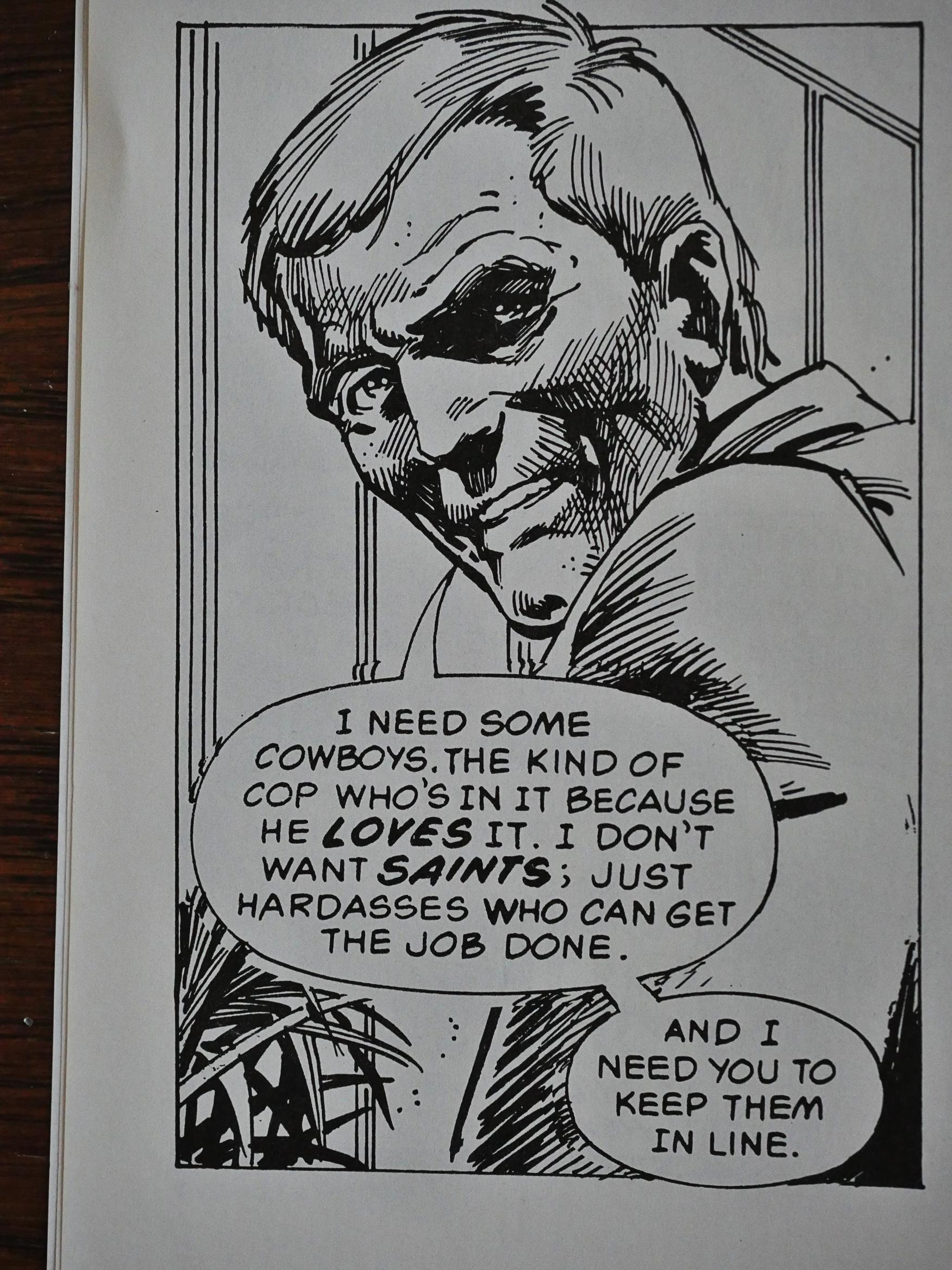
The concept is: It’s a dirty world, so we need totally out-of-control semi-cops to take down the really bad people.
Most of the first issue is taken up by introducing the team. I found it a strange choice (since this is a three-issue mini-series), but Dixon had a lot of fun with things like this:
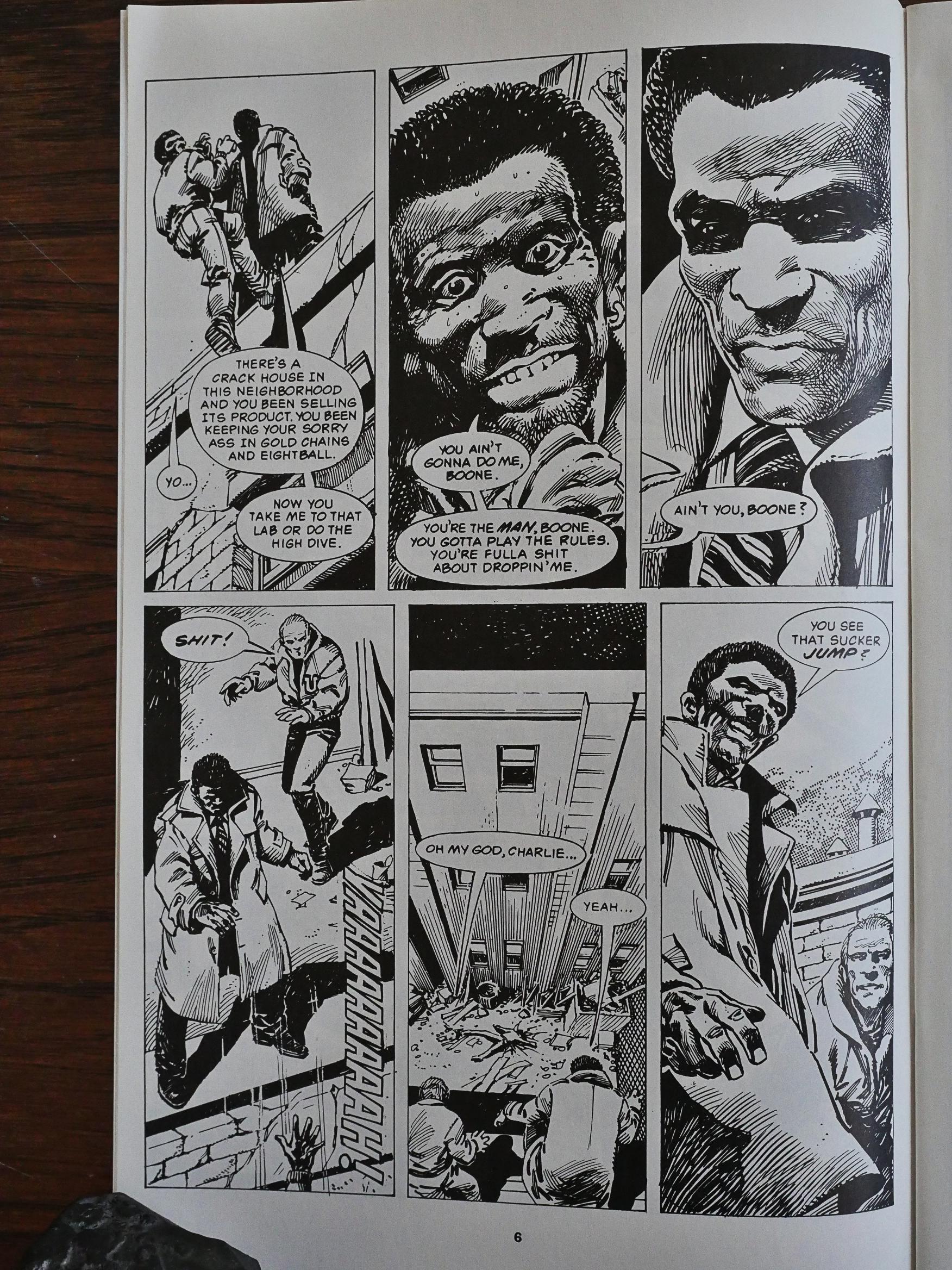
These cops as bad. So bad.
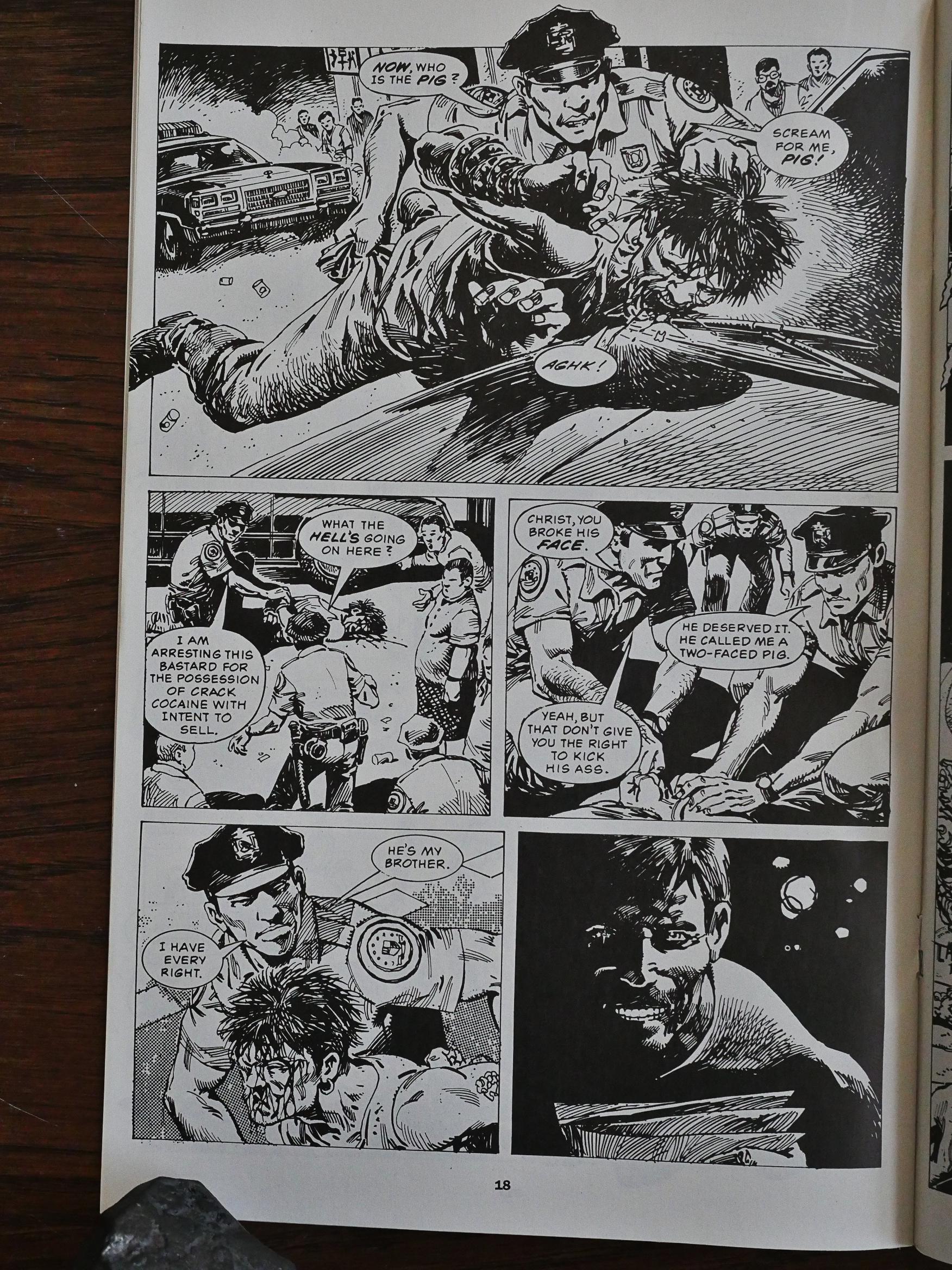
Not only are they bad, they live irony.
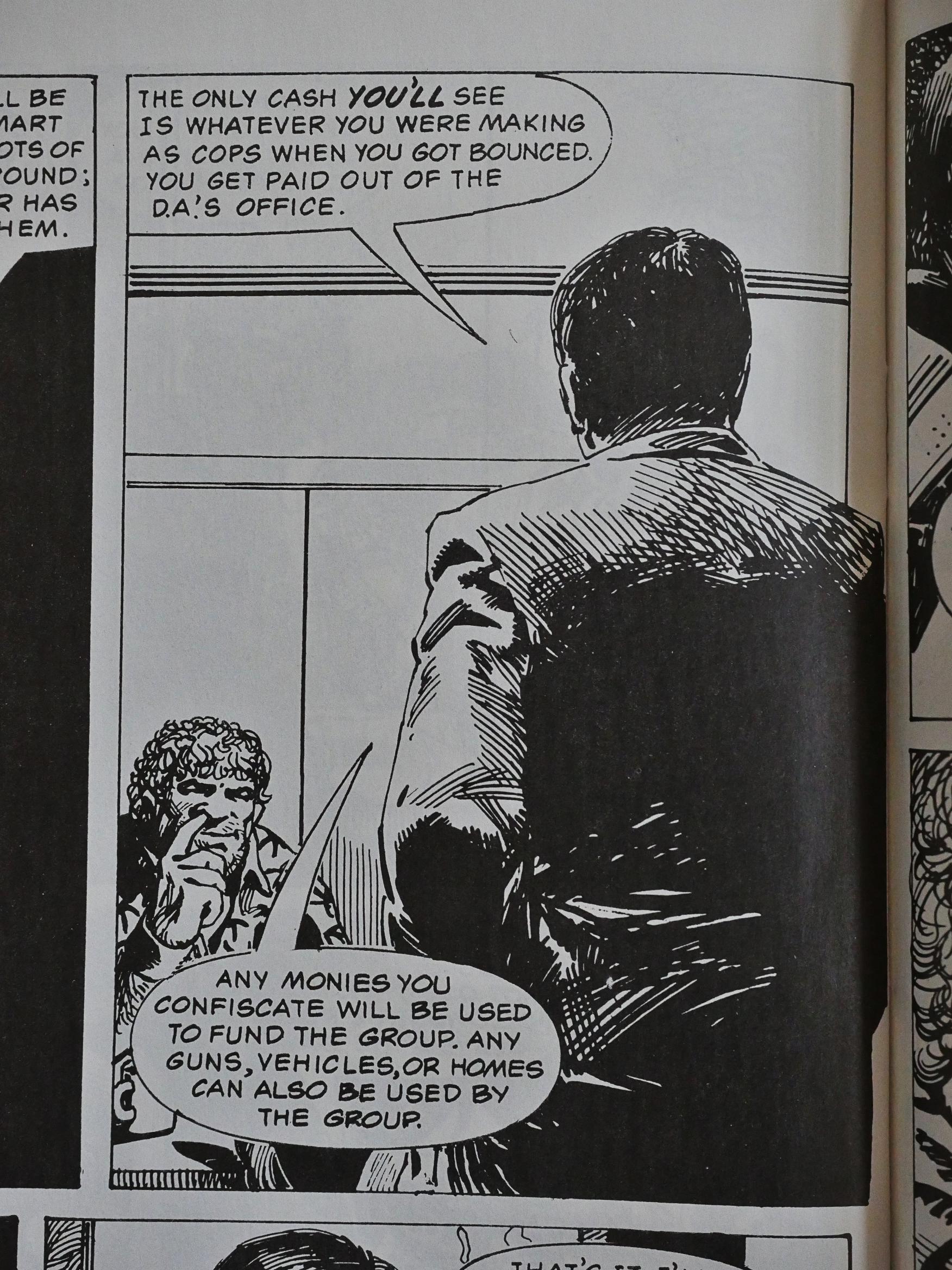
The semi-cops will be able to finance their capers by impounding all the money they encounter (from the bad guys, of course). That’ll never fly in the real world! This is so unrealistic!
So it’s the basic Fascist plotline, right? Right.

In Eclipse’s heydays, they published virtually nothing but 32-page floppies. These usually had something in the neighbourhood of 20 story pages, leaving a lot of space for letters pages and ads. These issues are, weirdly enough for a company in economic problems, chock full of story pages. They could easily have wrung another issue out of this series…
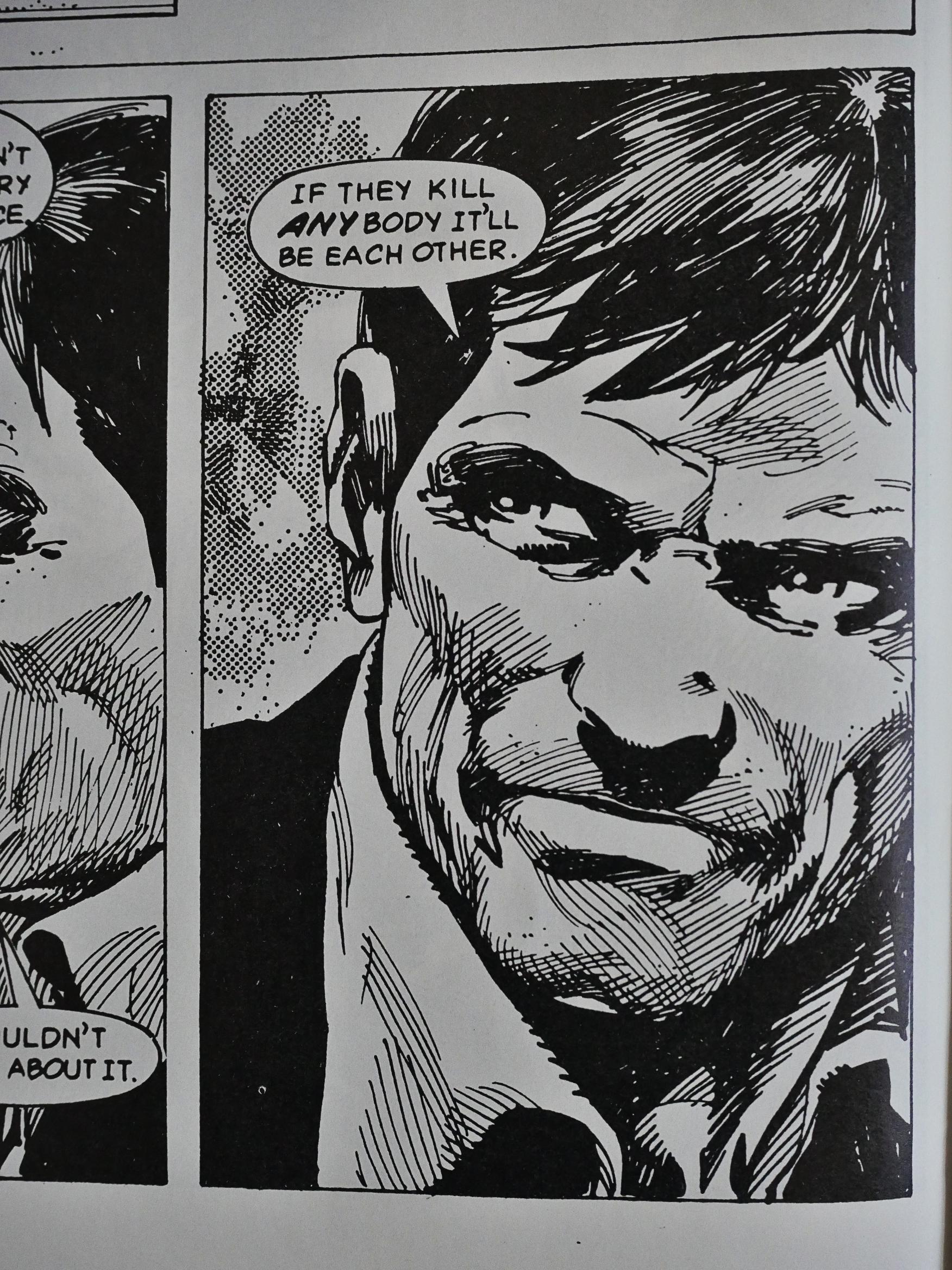
Toppi’s artwork is very Italian. Classically Italian, I’d even say, but that might be confusing. There’s a special hard-boiled noir style beloved of Italian comics artists from the… sixties? and on. Reading European comics anthologies for boys in the 80s, it was always a nice thing to encounter.
I like Toppi’s hatching, with all the identical width lines going here and there, shaping the face. Toppi uses tone very sparingly, just blotches for extra grittiness like in the panel above in the background.
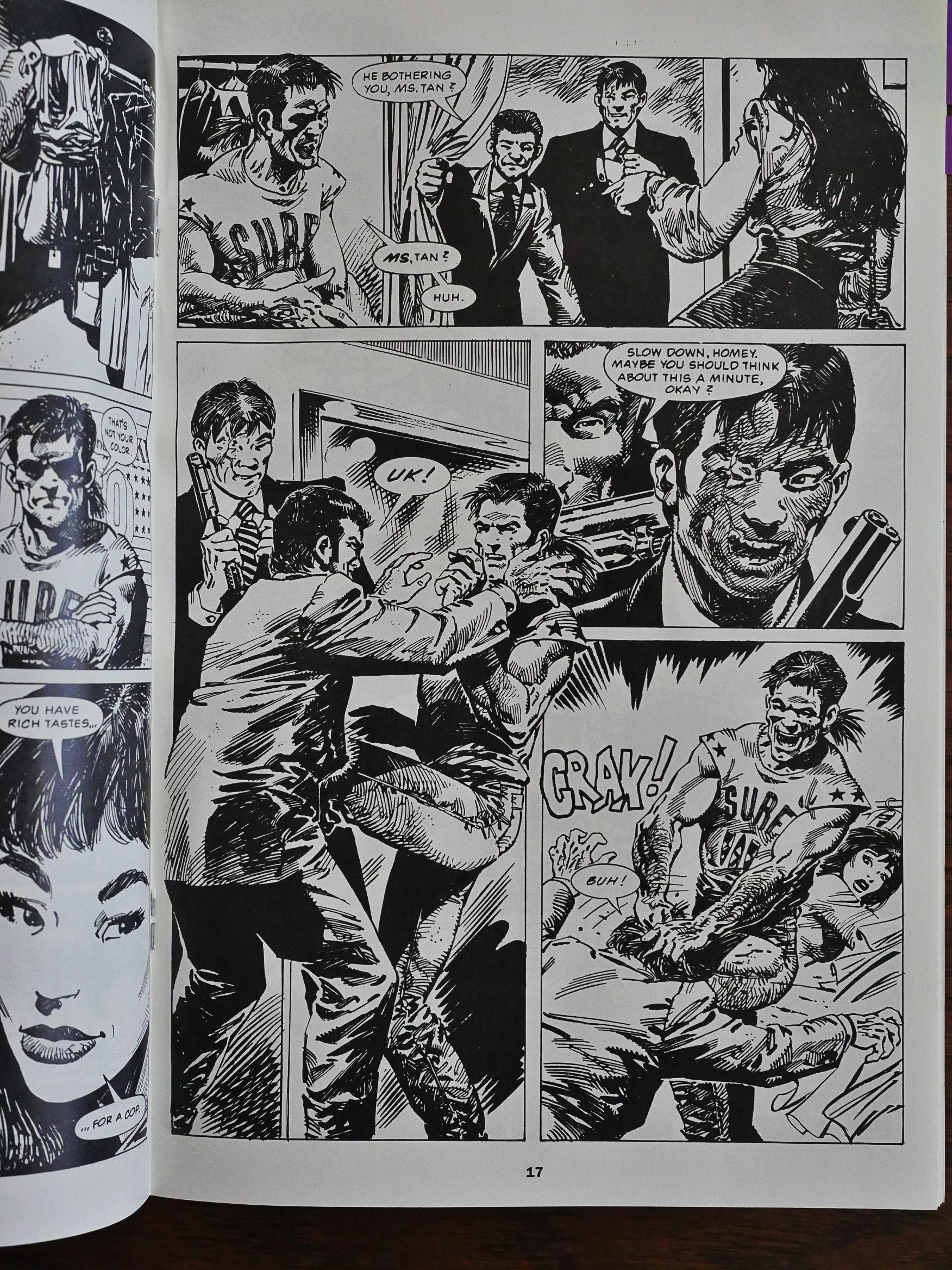
However, he doesn’t really do action that well. First of all, it’s trey confusing. The tall panel almost looks like it has the guy to the left poking in from a semi-panel, but he’s there, just very tall. Who’s beating up who takes a “hm, that guy’s in a t-shirt, so I guess he’s the cop” ponder. And it’s not helped by Toppi going super-deformed on everybody’s faces when they’re having an action moment. T-shirt-guy’s mouth in the bottom right corner is just bizarre.
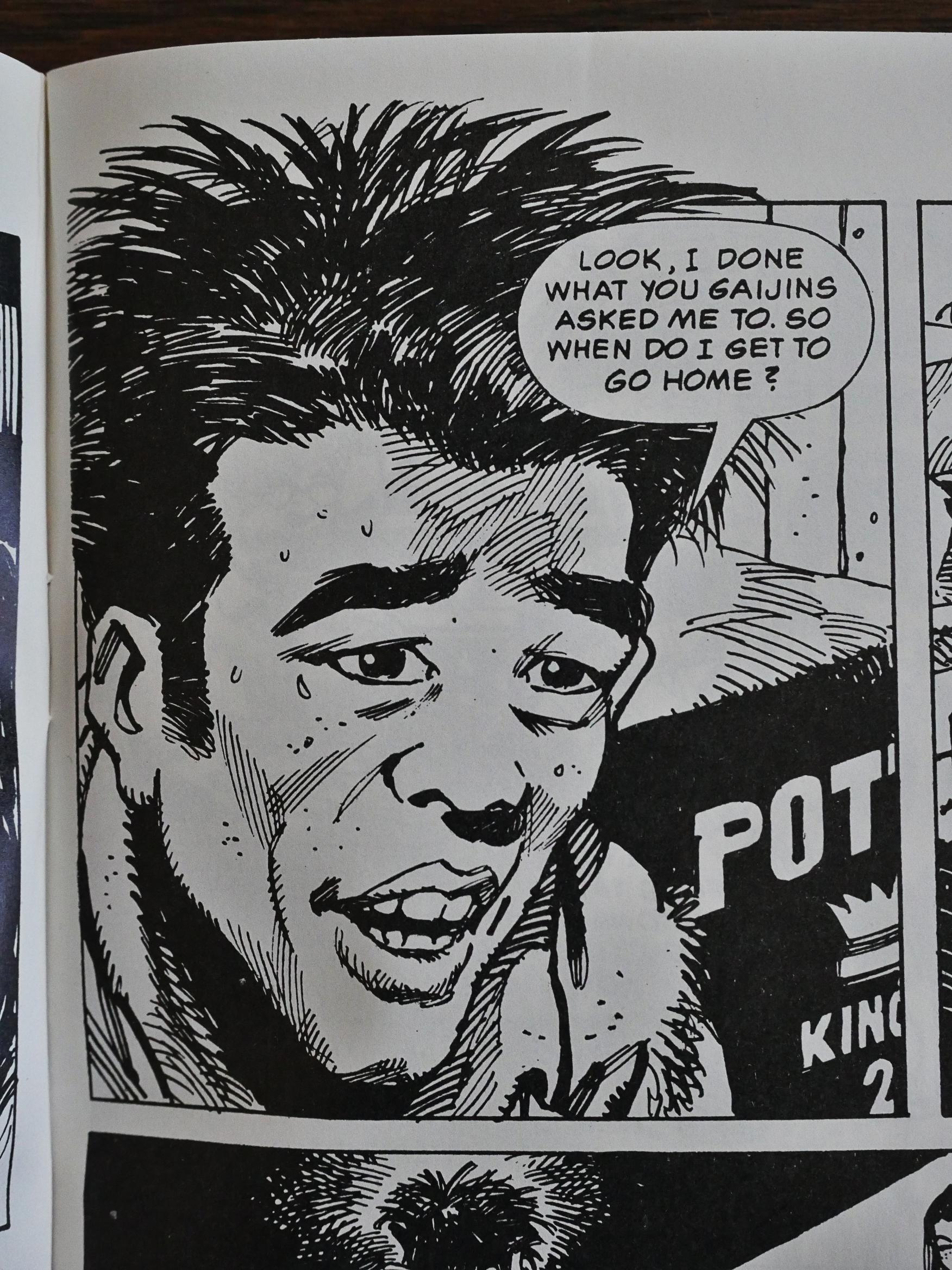
Dixon, on the other hand, is in full command of current Chinese slang. “Gaijin”. That’s so a Chinese word. Or one of them there countries.
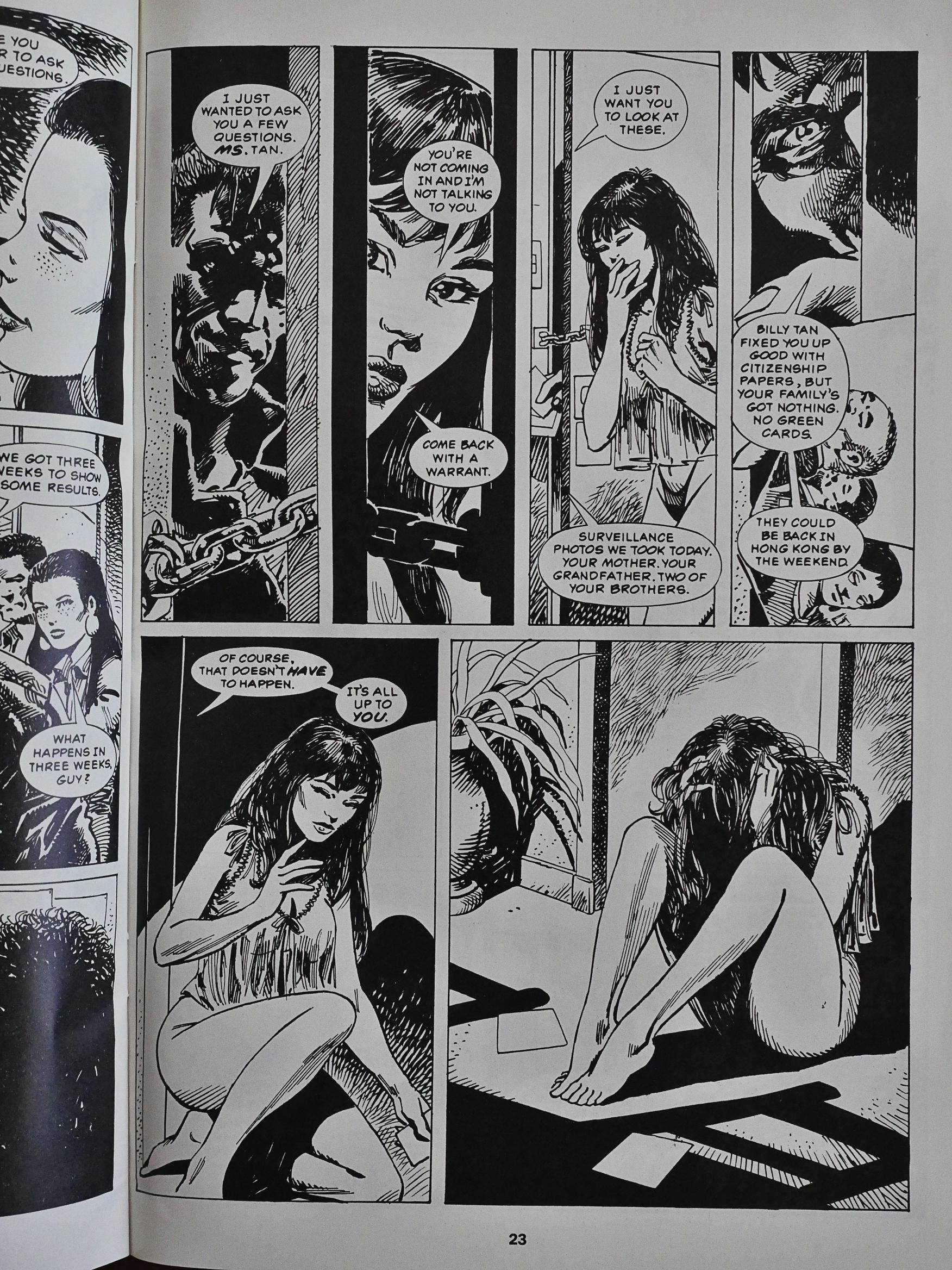
So, Dixon has the basic Fascist law and order thing set up, but when he got to this point, where one of the semi-cops is threatening to deport the villain’s girlfriend, I wondered whether Dixon was really making a satire of the genre.
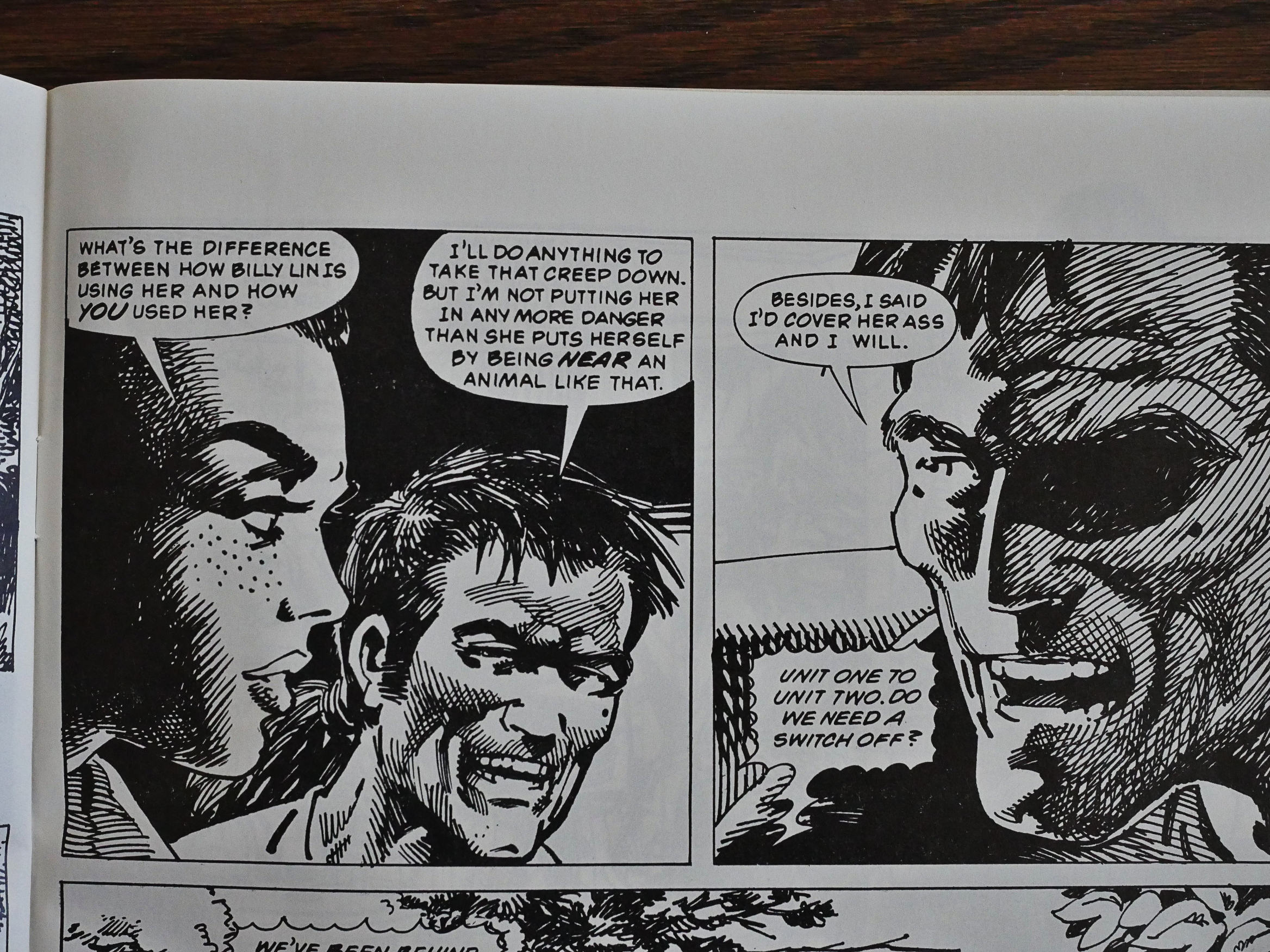
But, no, the semi-cop really has a heart of gold, just like normal.
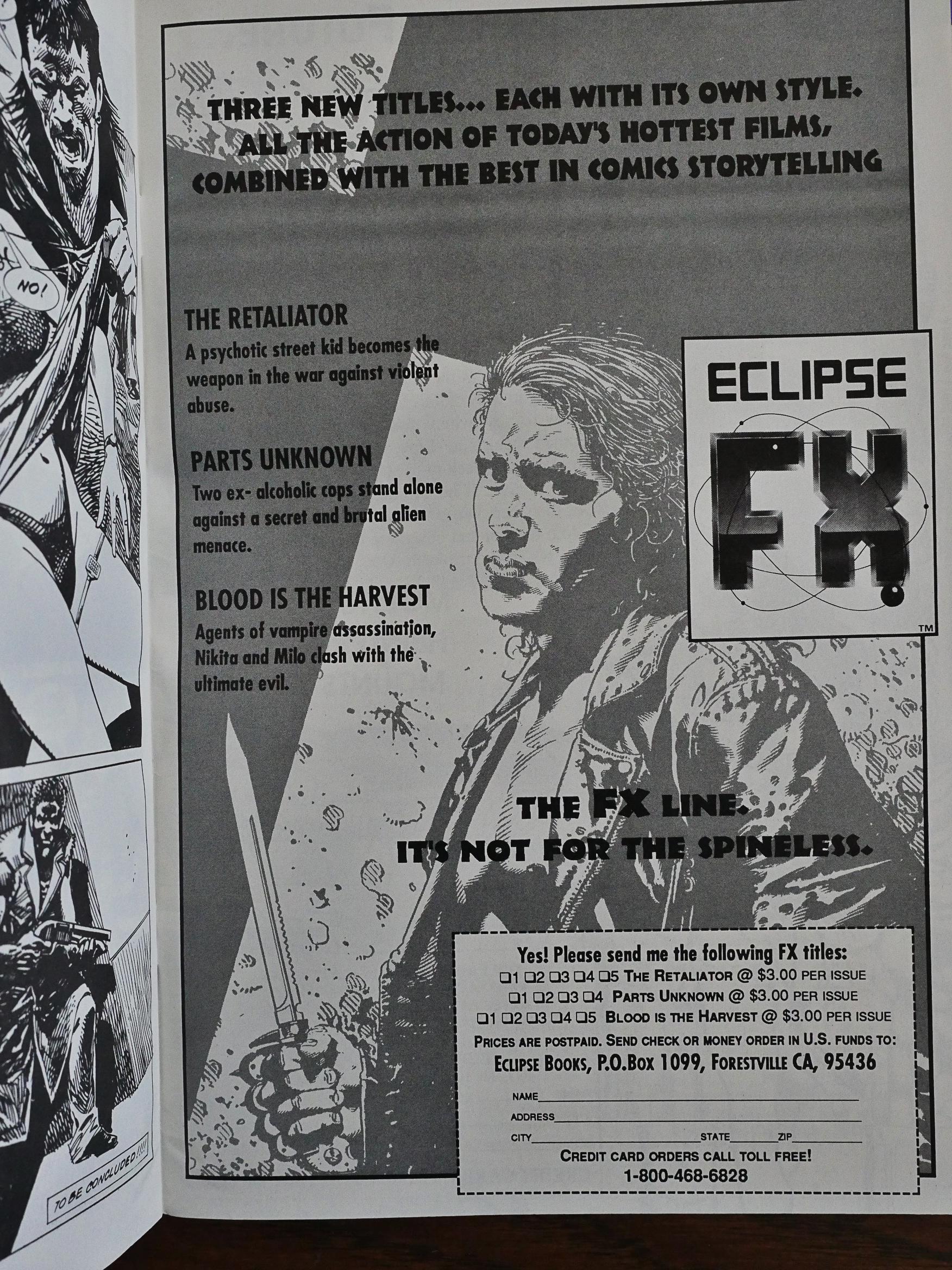
Oh! So Eclipse were launching a new line a bit later in 1992. “All the action of today’s hottest films.” It’s weird that Mad Dogs isn’t part of that line, because it seems like it’d fit perfectly. But perhaps they only came up with that idea after Mad Dogs had launched?
On the coupon there, you can order issues 1-5 of The Retaliator and Blood is the Harvest. Only four of each were published, so I guess some readers had to get a refund. (Tee hee.)
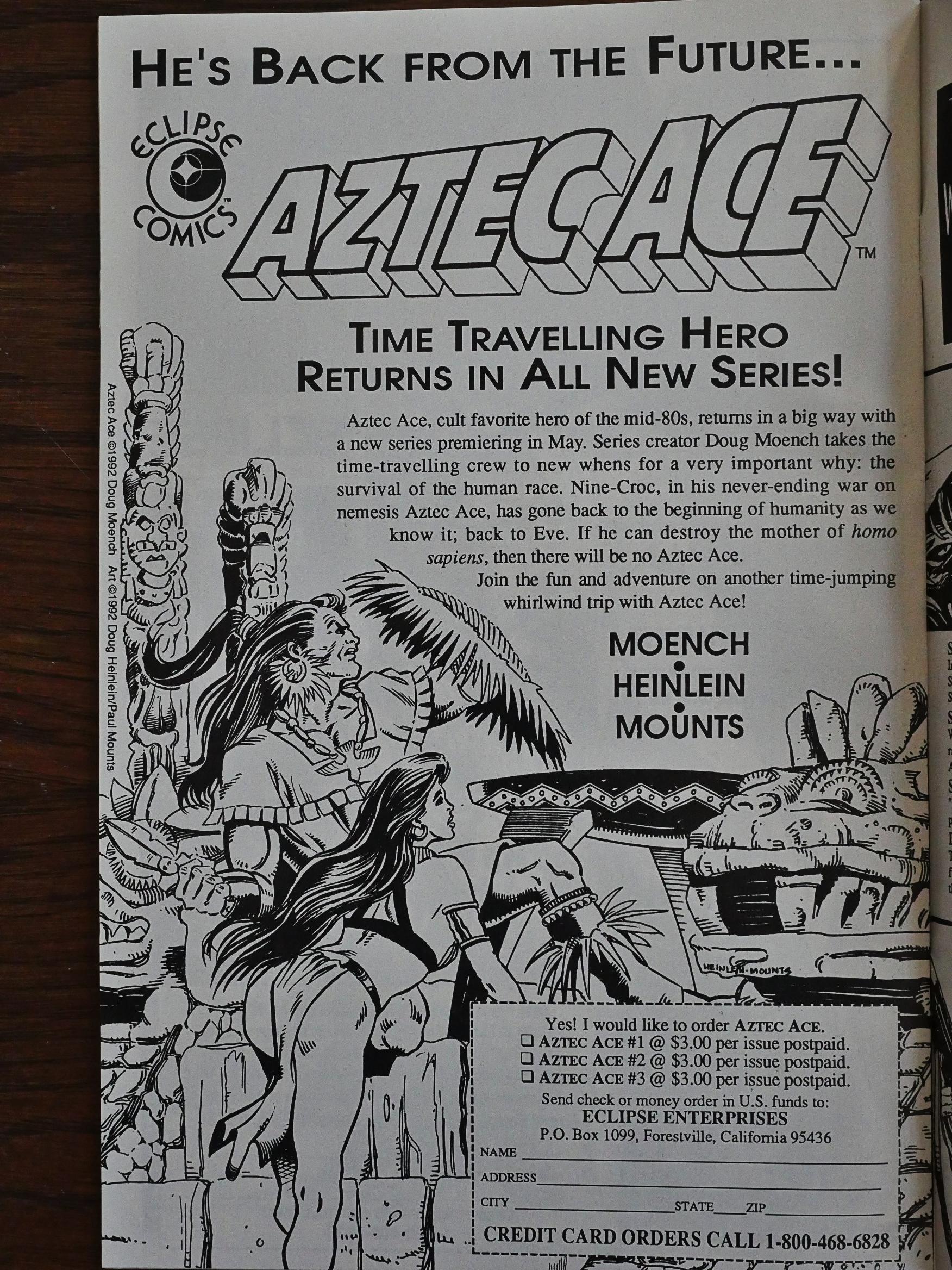
Oh! A new Aztec Ace series! It never happened, but you can order the three first issues anyway. More refunds! (Tee hee.)
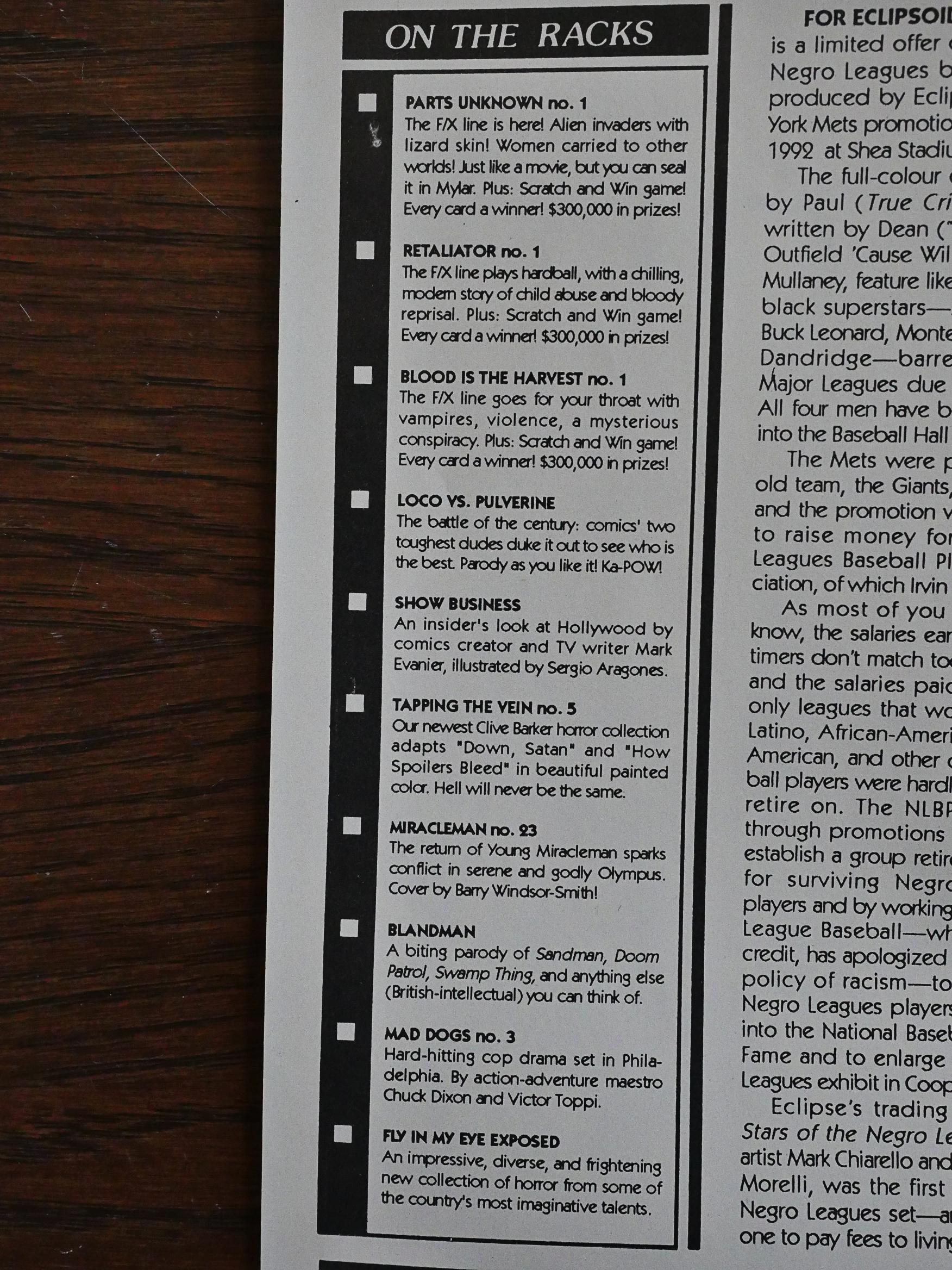
So let’s have a look at what the On The Racks column looks like in 1992. You have the first three FX action comics, two parody comics, a book by Mark Evanier (that was never published), a Clive Barker adaptation, Miracleman #23 (which has been announced as being on the racks for several months now, I think), this issue, and a Fly In My Eye anthology. So all the new stuff (that actually appeared) is action-oriented floppies and parodies. It’s a huge change from a couple of years earlier.
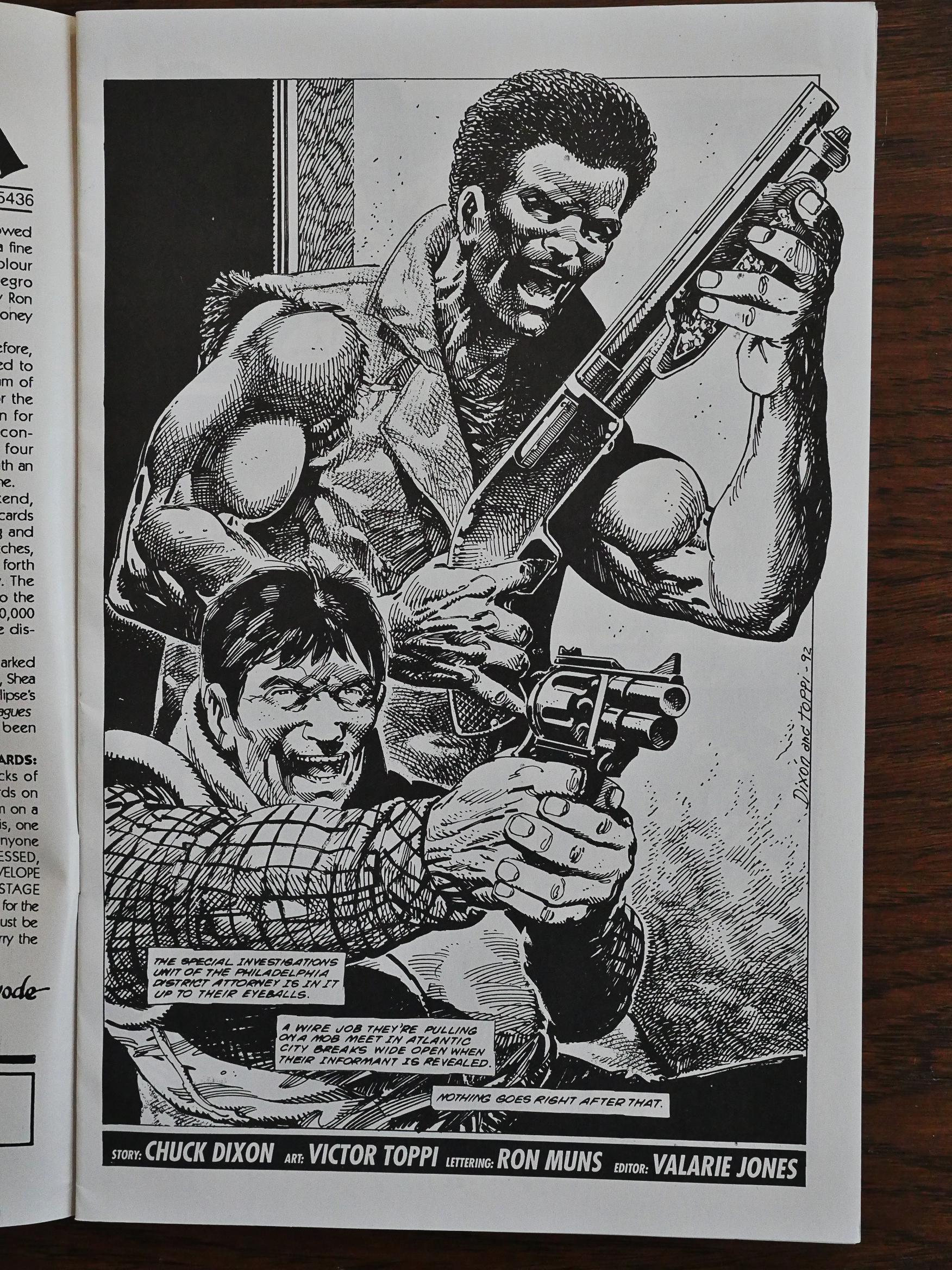
OK, I just had to include that insane splash page. Look at those mouths! Just look at them!
This isn’t a very good comic, but Dixon knows how to tell a story professionally: It has good flow and touches upon all the required clichés. And I like Tippo’s artwork, so this certainly wasn’t a chore to get through or anything, but it’s not… a particularly exciting comic book.
OK, I was going to do some research…
I found something, and here’s what Google Translate says it means:
Victor Toppi (1956-1992) studied with Pablo Pereyra, later playing as an assistant to Ricardo Villagrán in the series he did for Columba during the seventies, such as Mark, Or-Grund or Rondstad, then making his own Unitarians, the series Wolf and later Wotan, with a script by Armando Fernández, Thalerg (with Amézaga) and Atila with pencils by Carlos Leopardi. Also important was his record production for whose magazines he did among other titles “Génesis” (Corto Maltés, 1978), “Chronicle of three wars (Pif-Paf, 1979),” Parallel worlds “,” Etorix “, (Gunga Din, 1981) produced by the Studio Nippur IV and signed by the, “The visitor” (Tit-Bits 1991) with a script by Ricardo Barreiro, “Funland”, “The rules of the game” and “The perfect policeman”. Between its works for the outside they emphasize those realized for Italy and the United States, in this case Mad Dog (1991) with script of Chuck Dixon.
Err…. Oh, he really is a veteran comics maker, and died the same year this was published? And he was an assistant to Ricardo Villagrán, who Eclipse had published several times before. And there is an Italian connection.
This comic book has apparently never been collected or reprinted.

